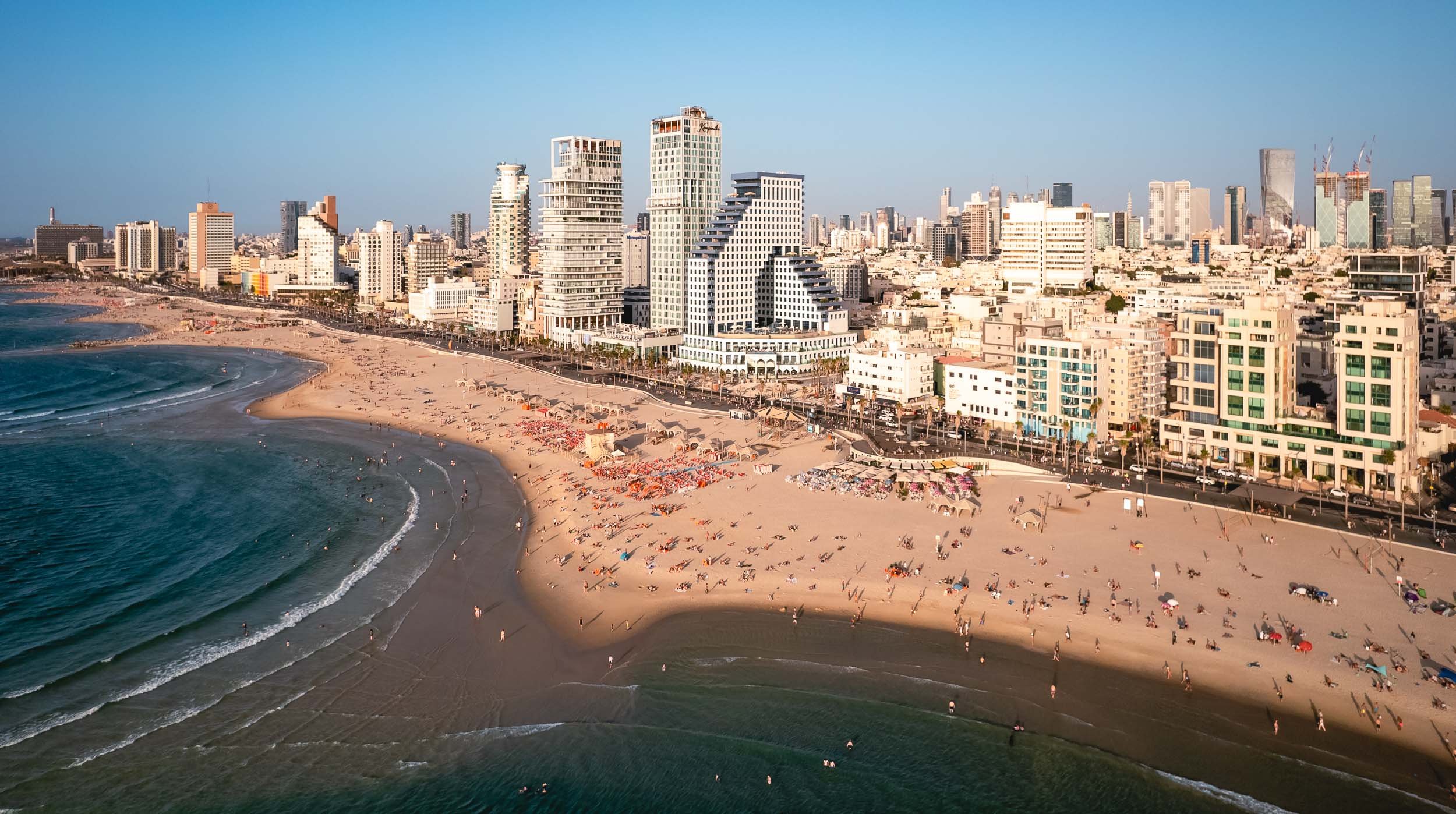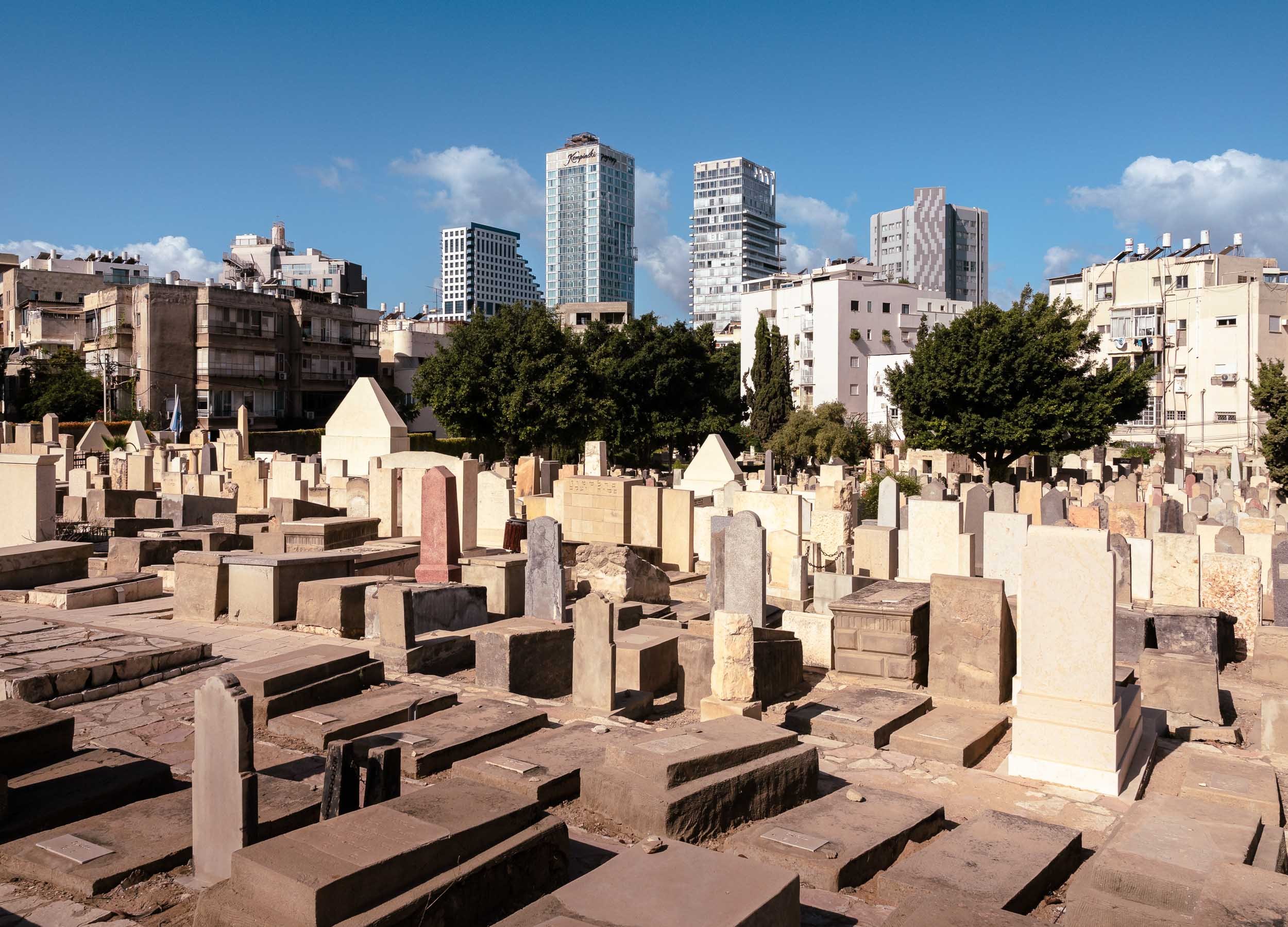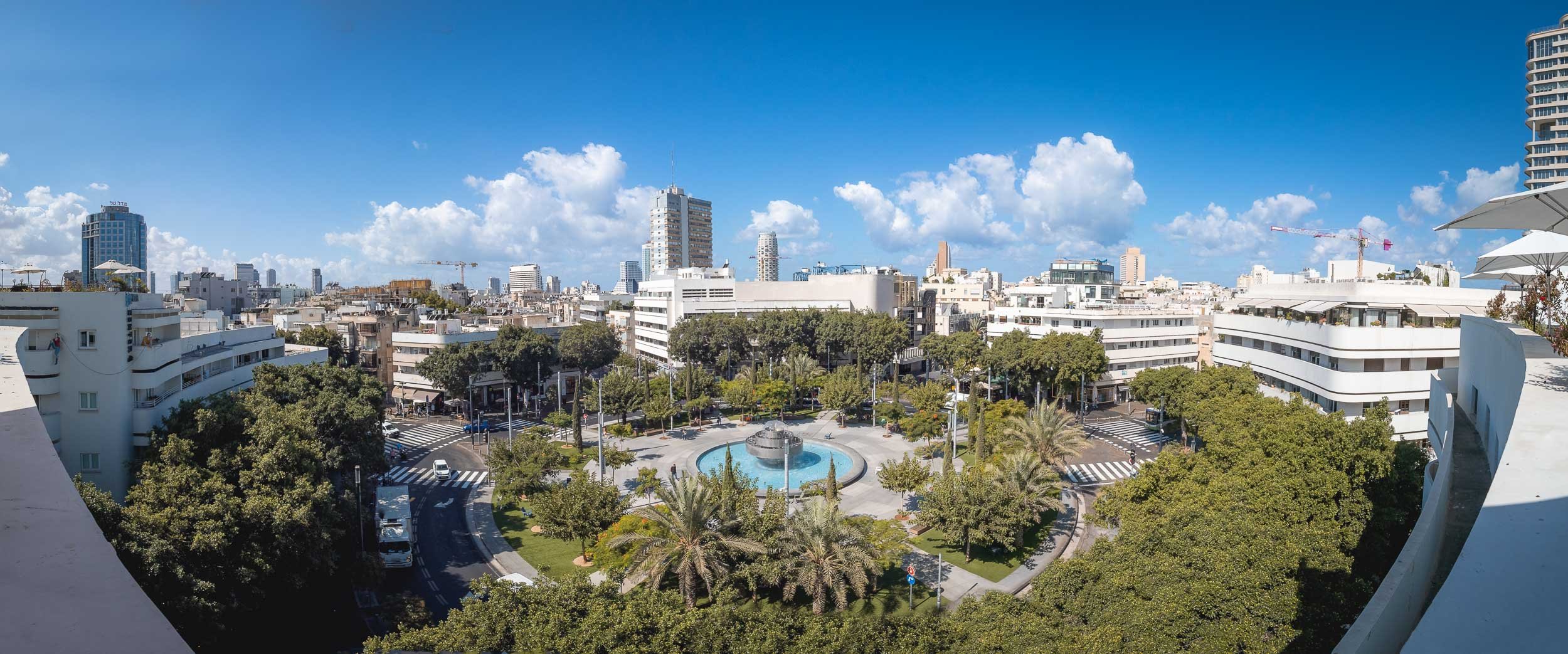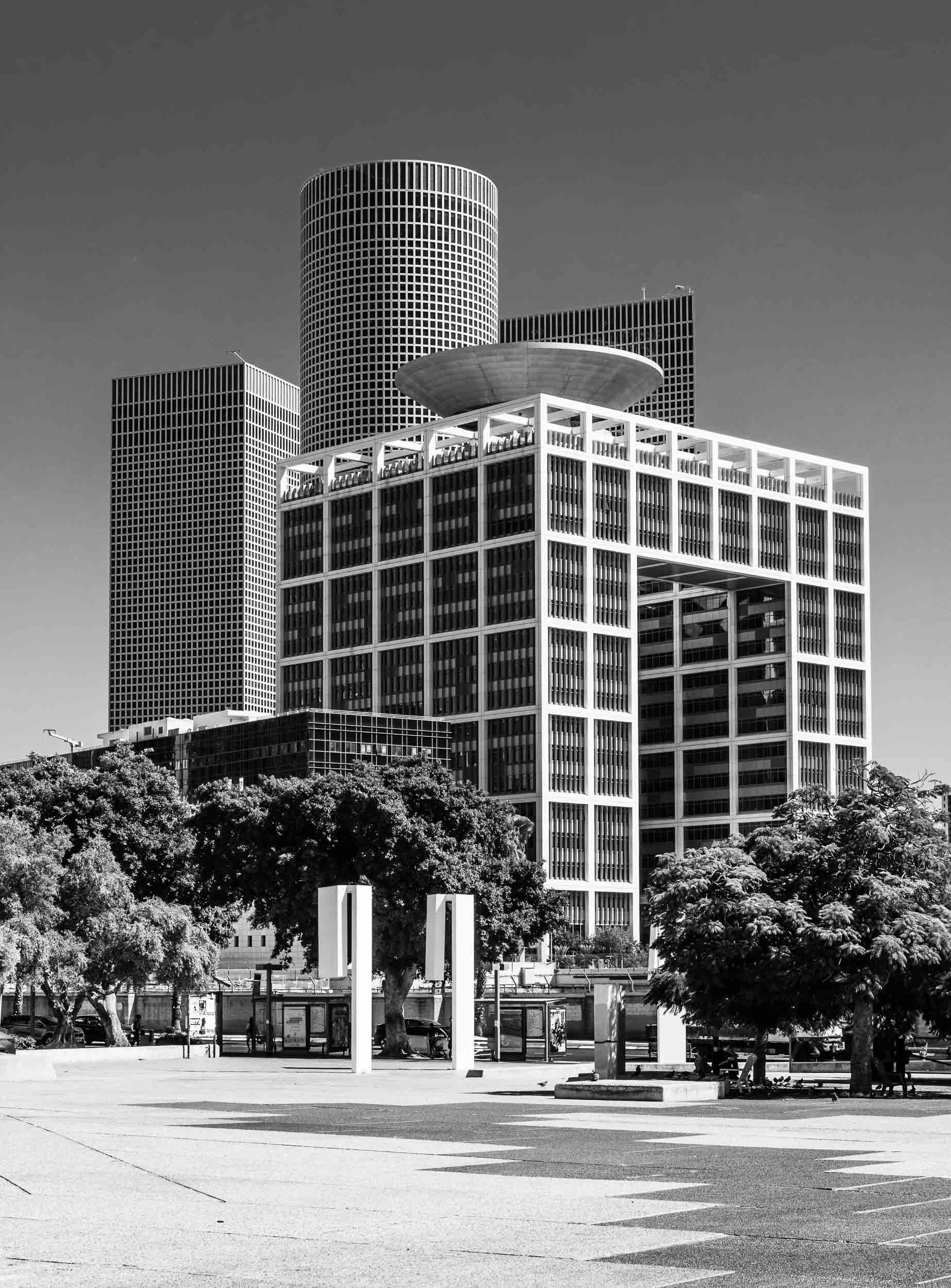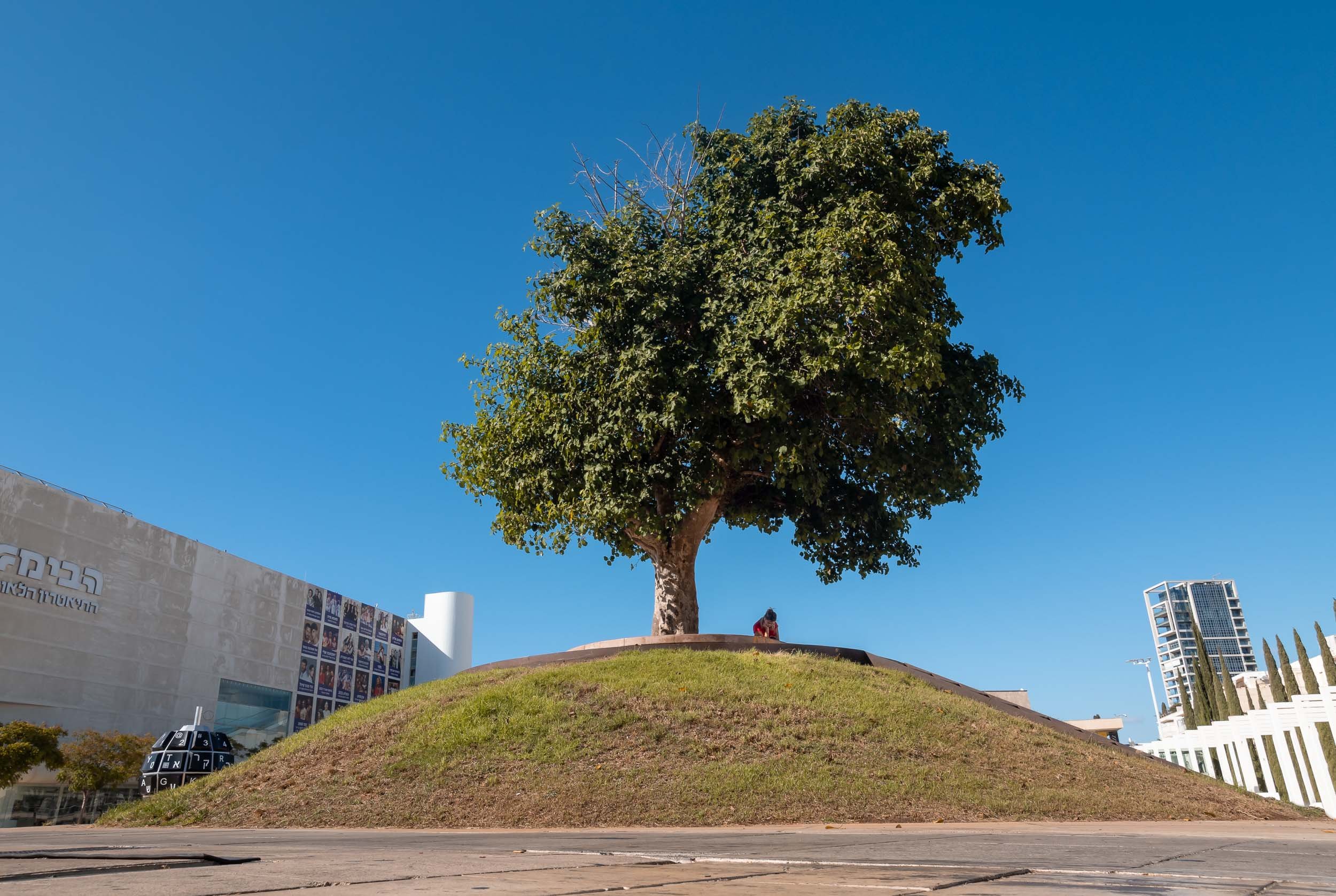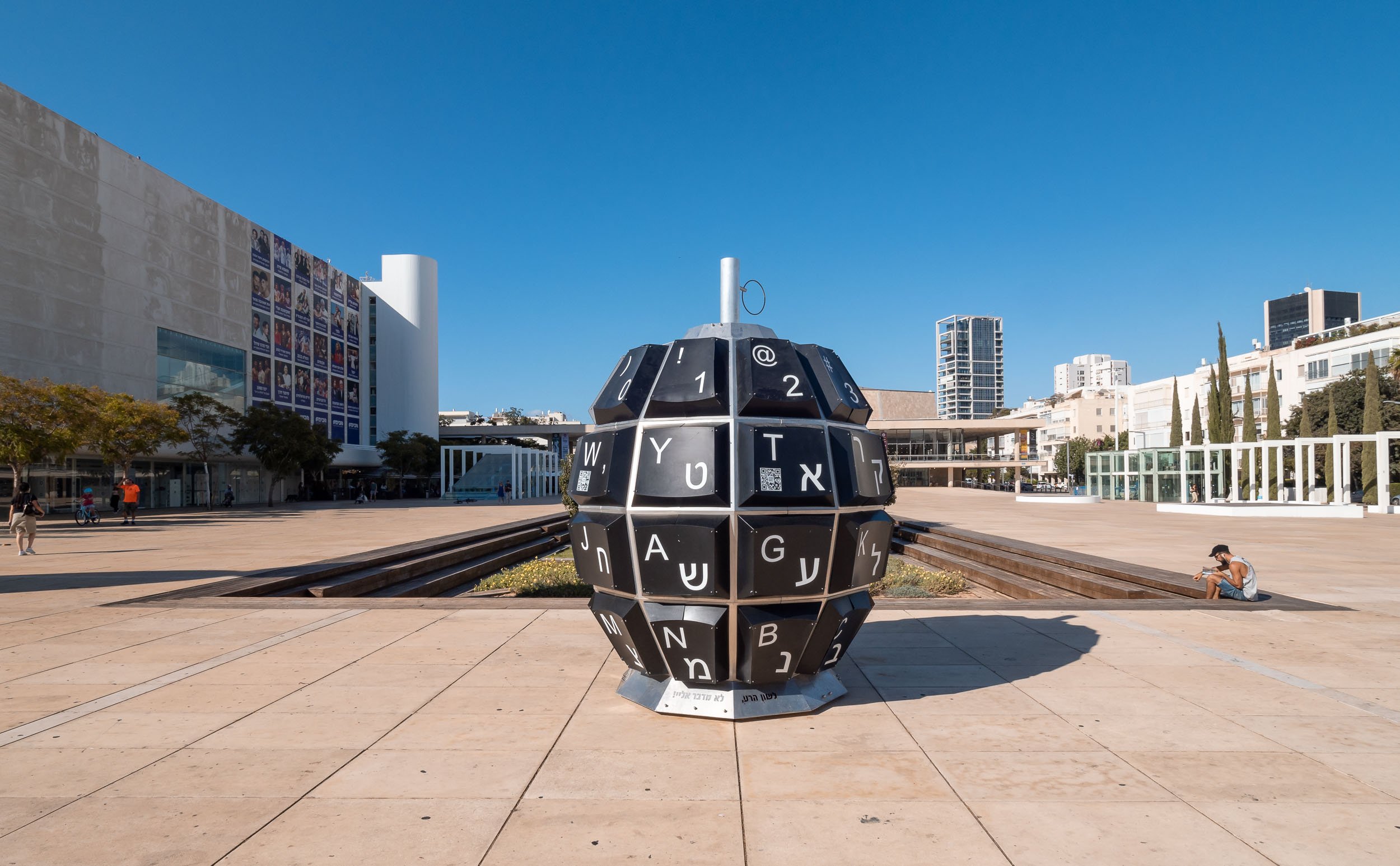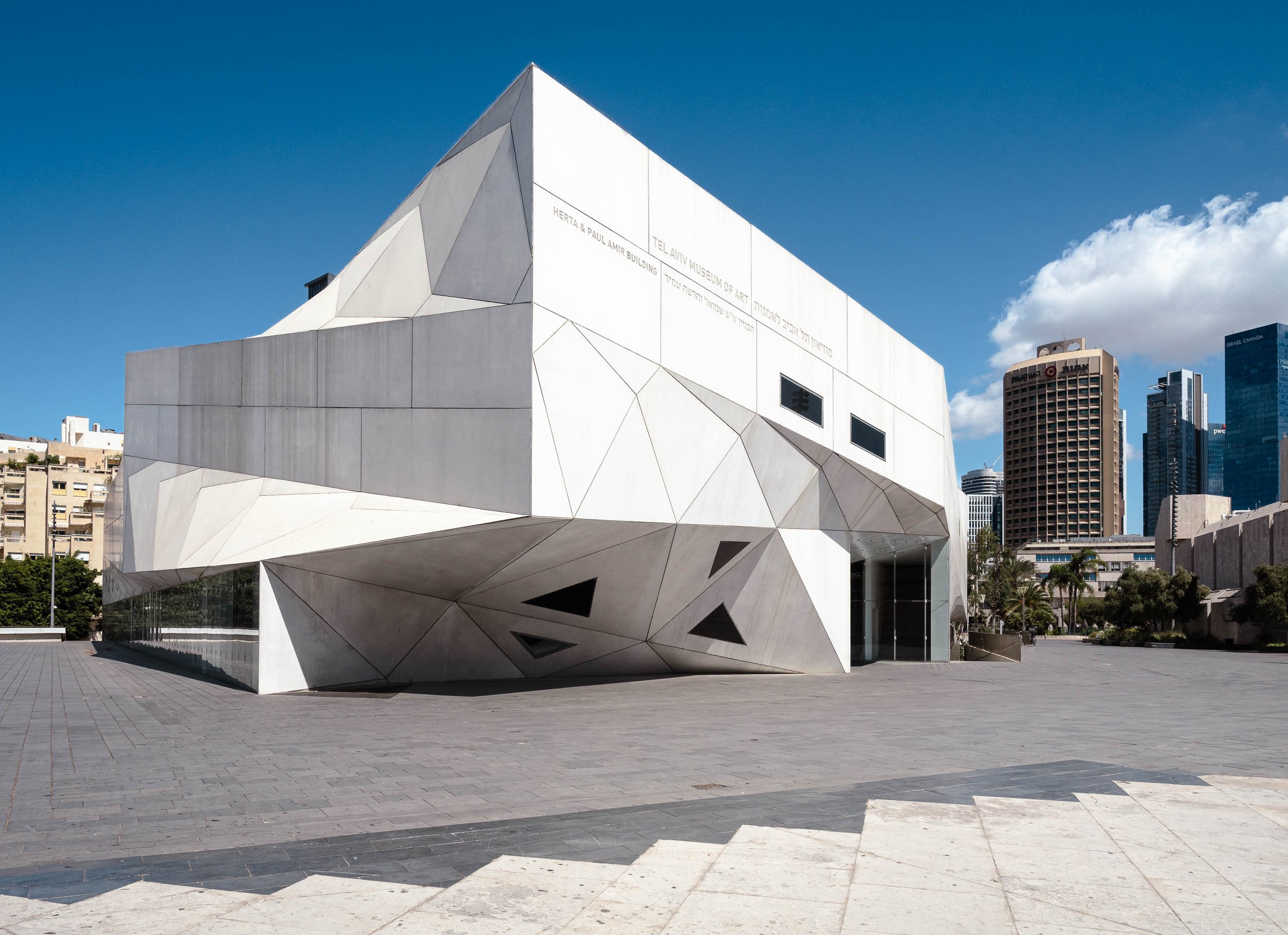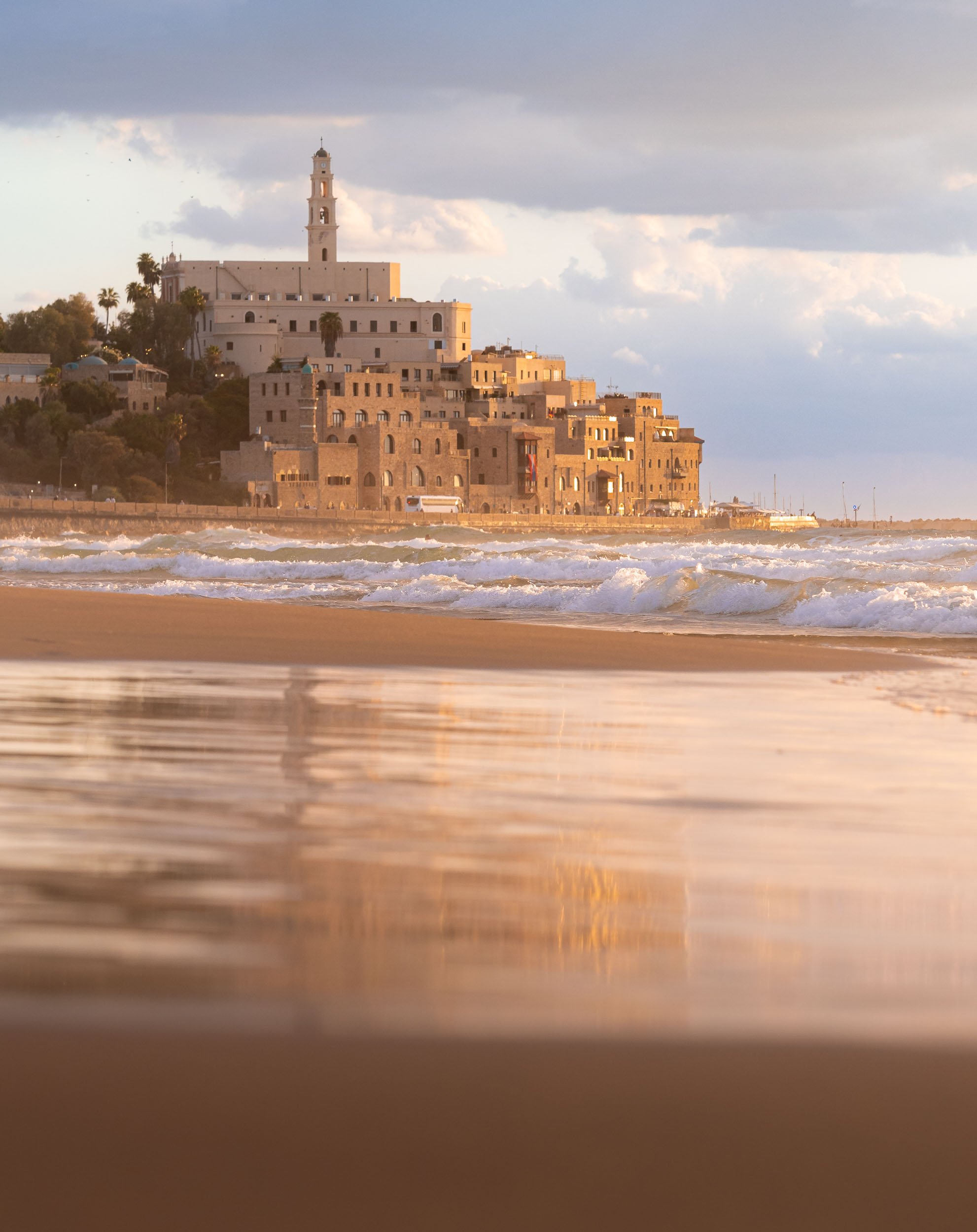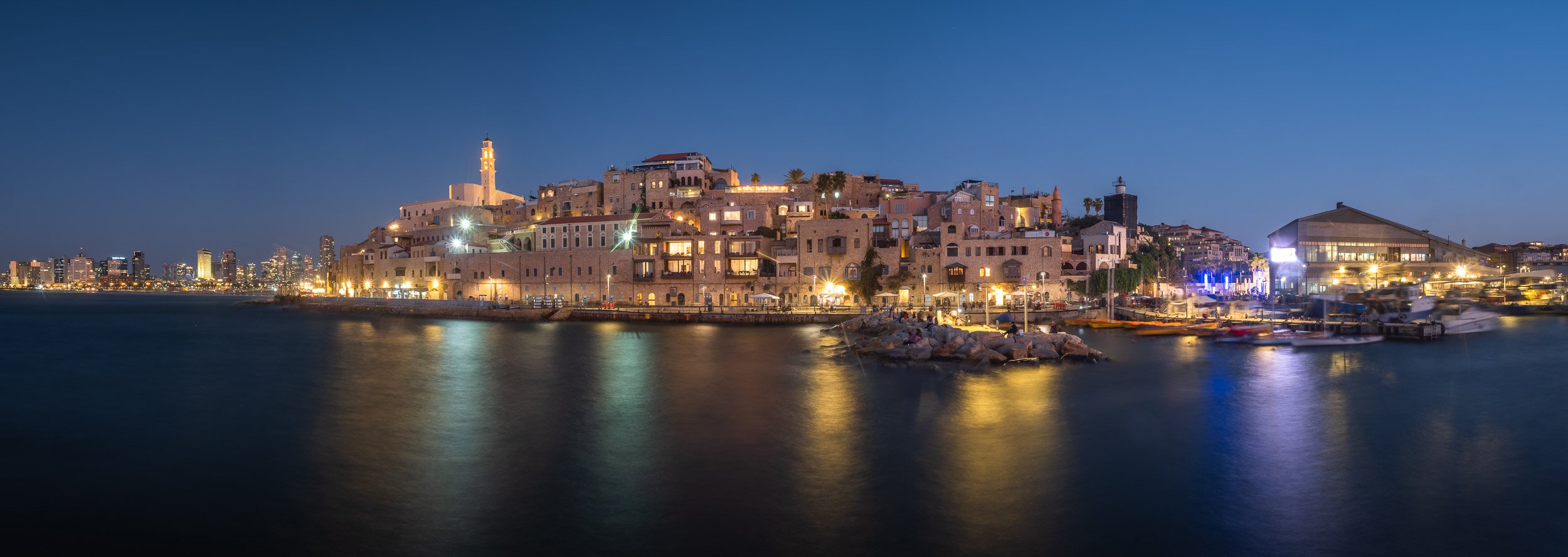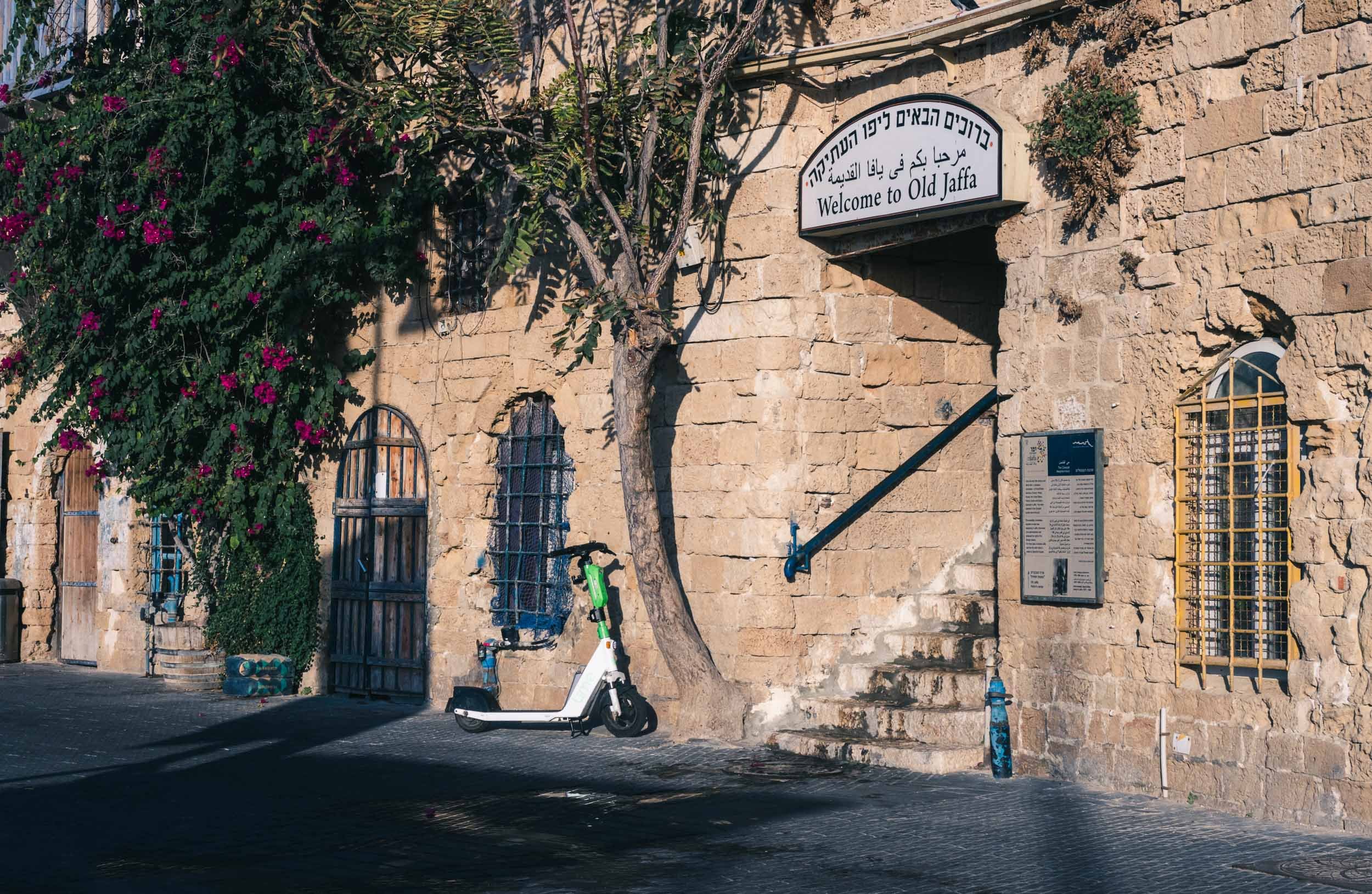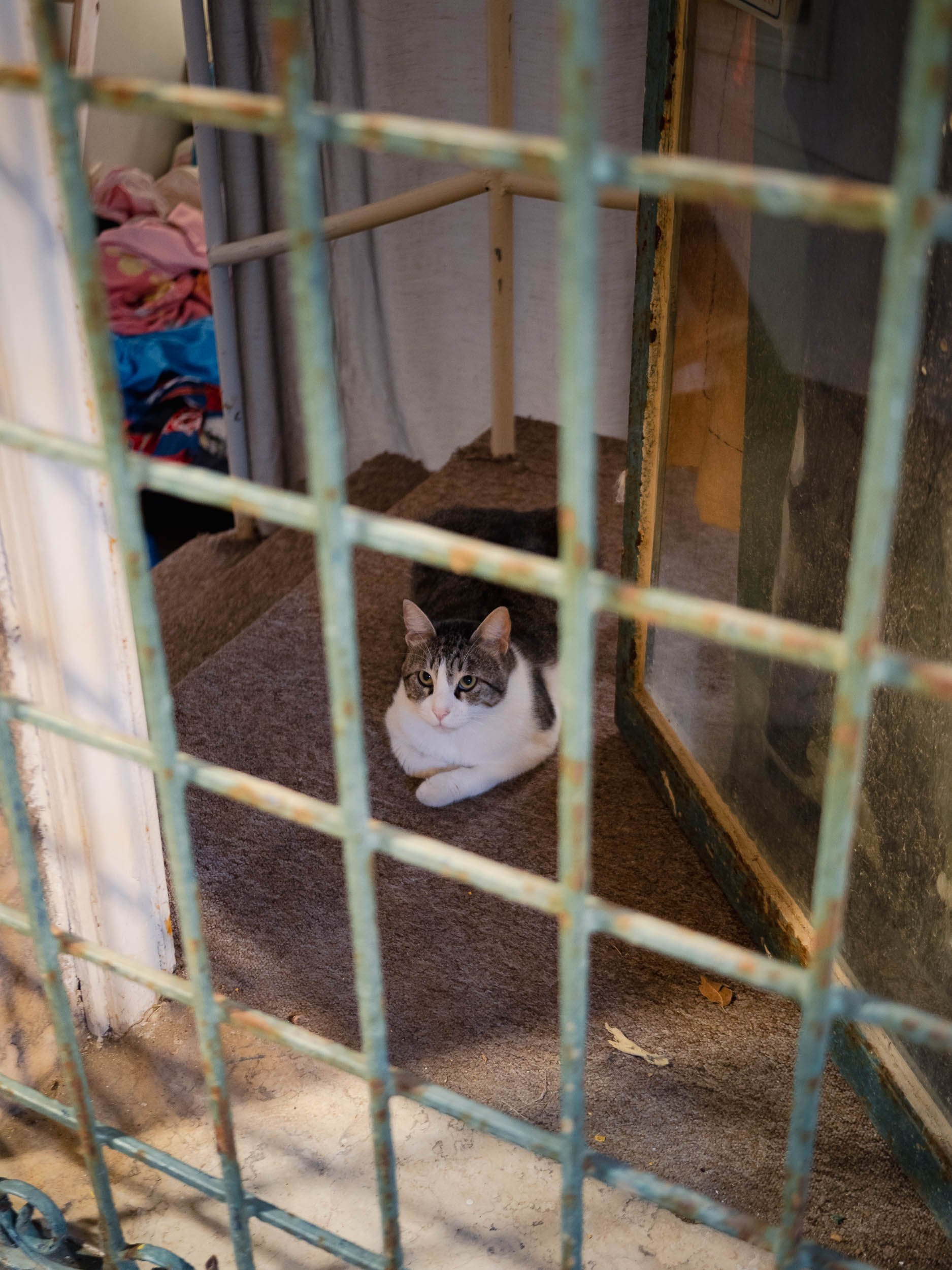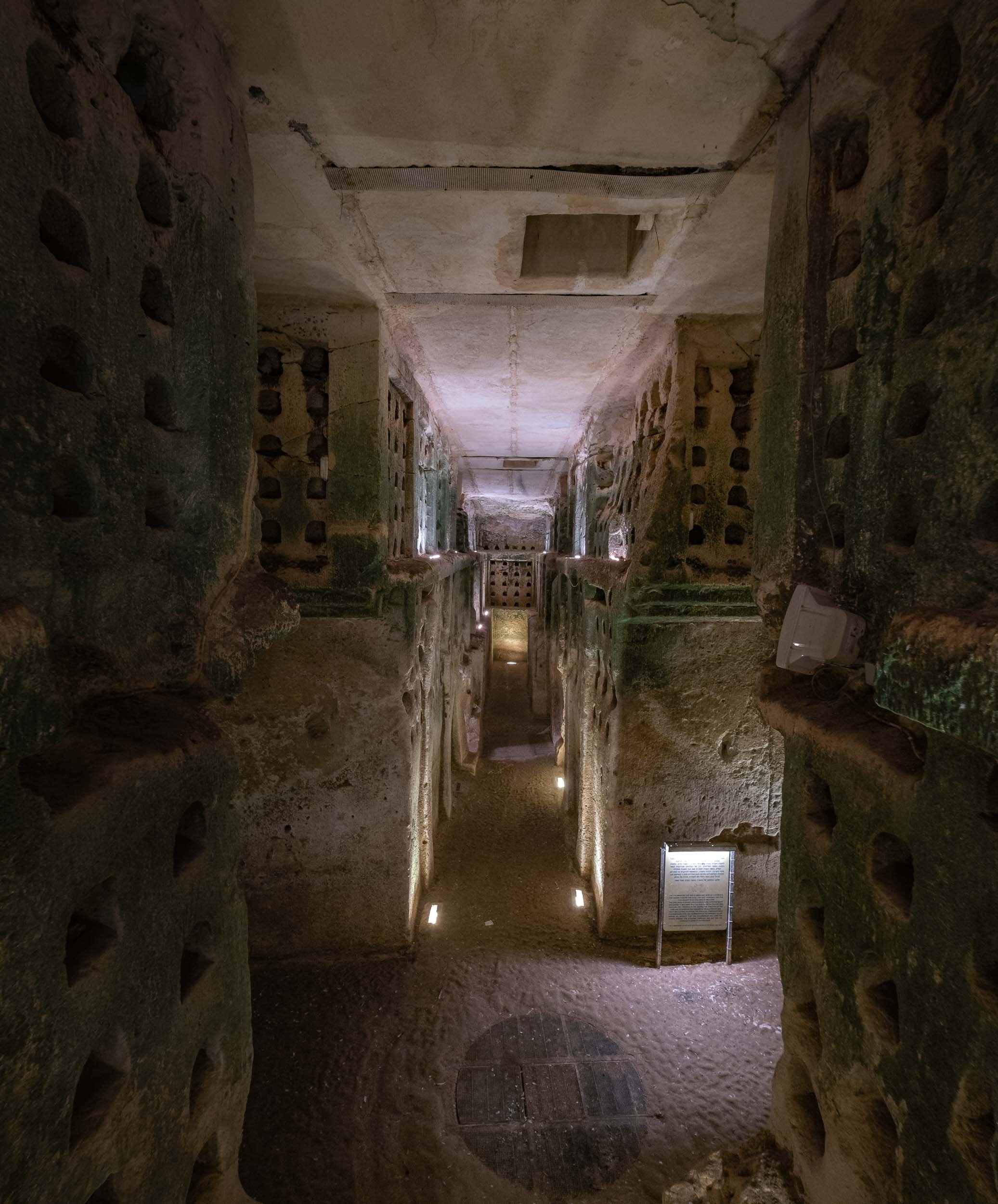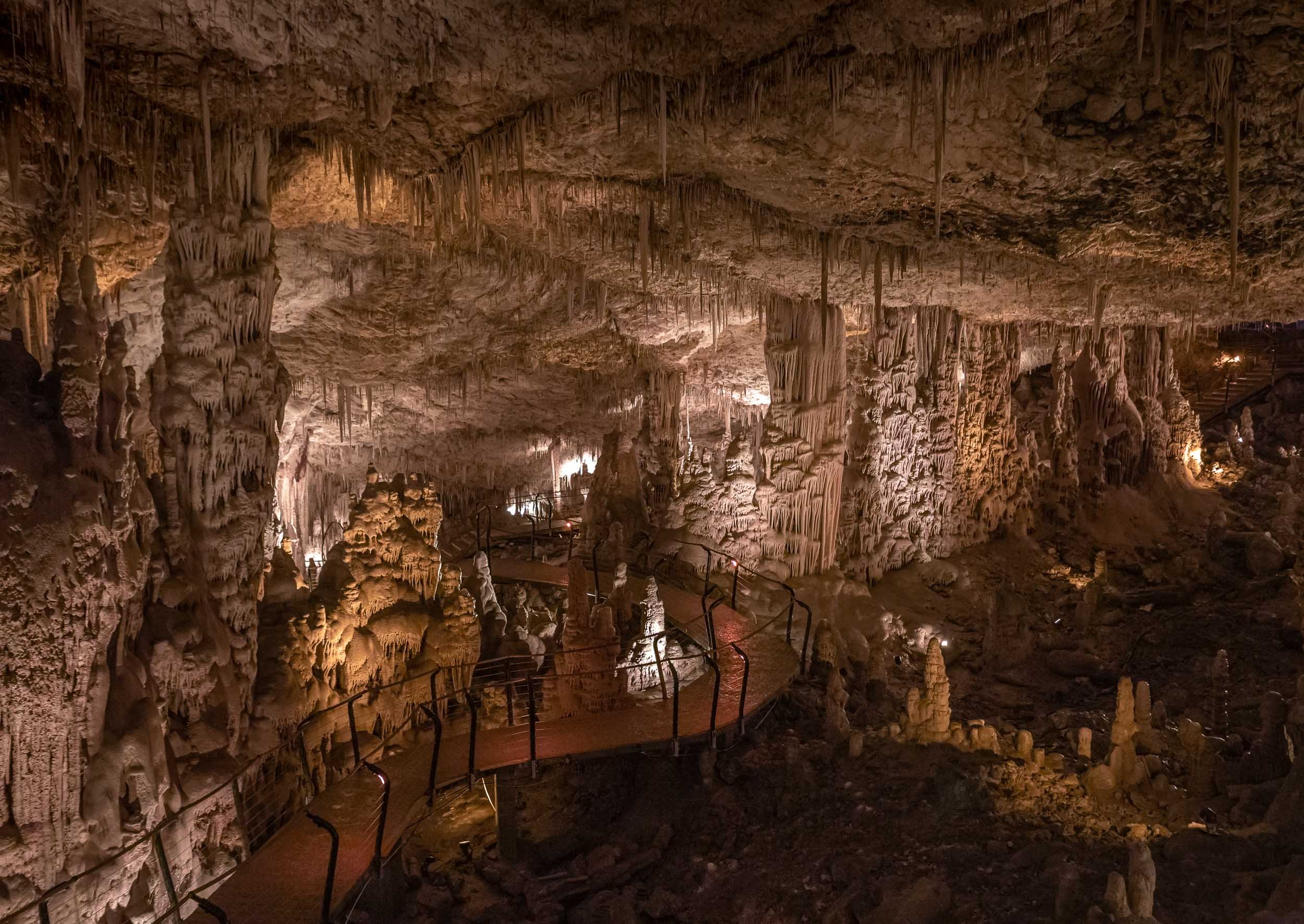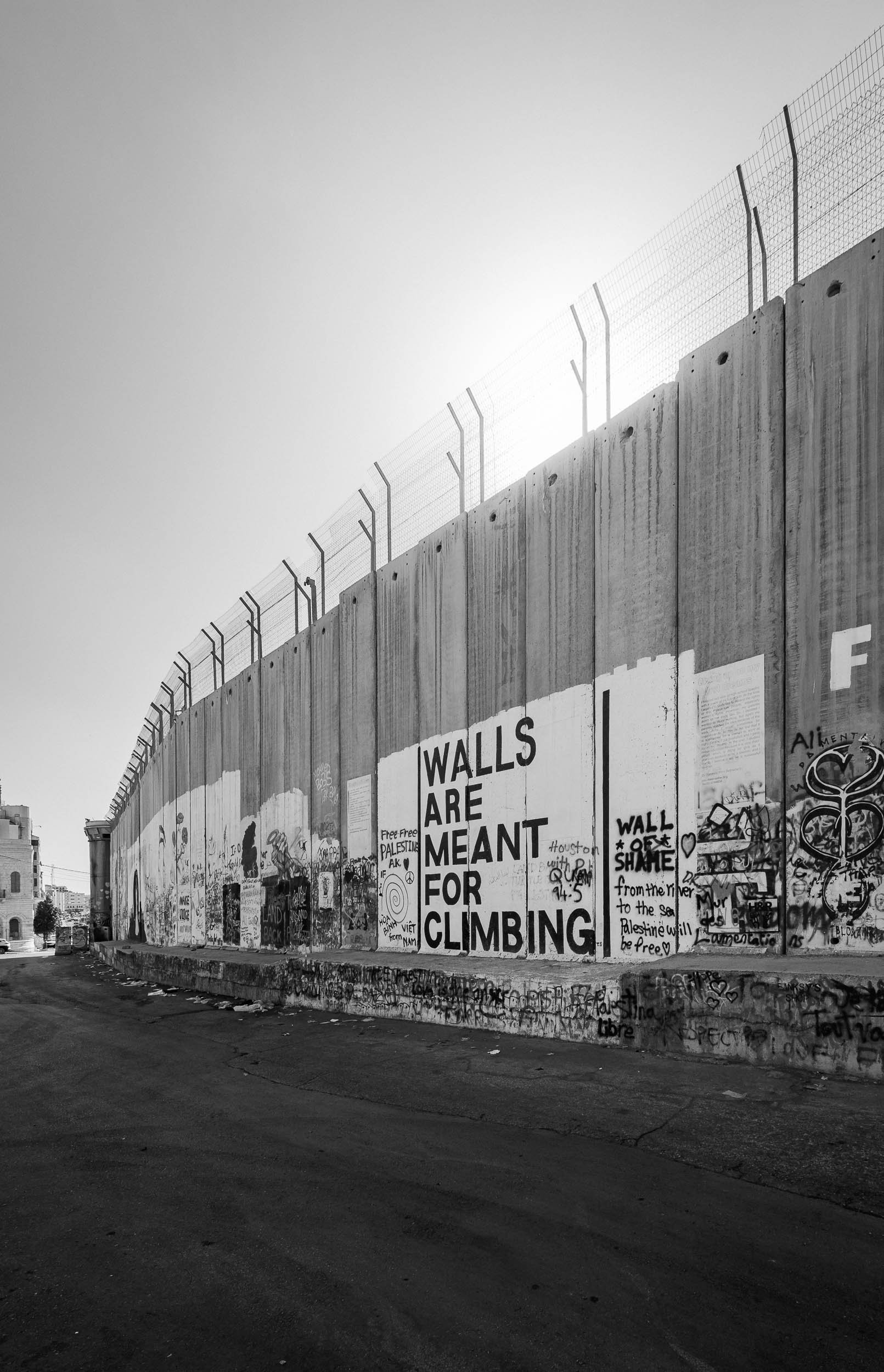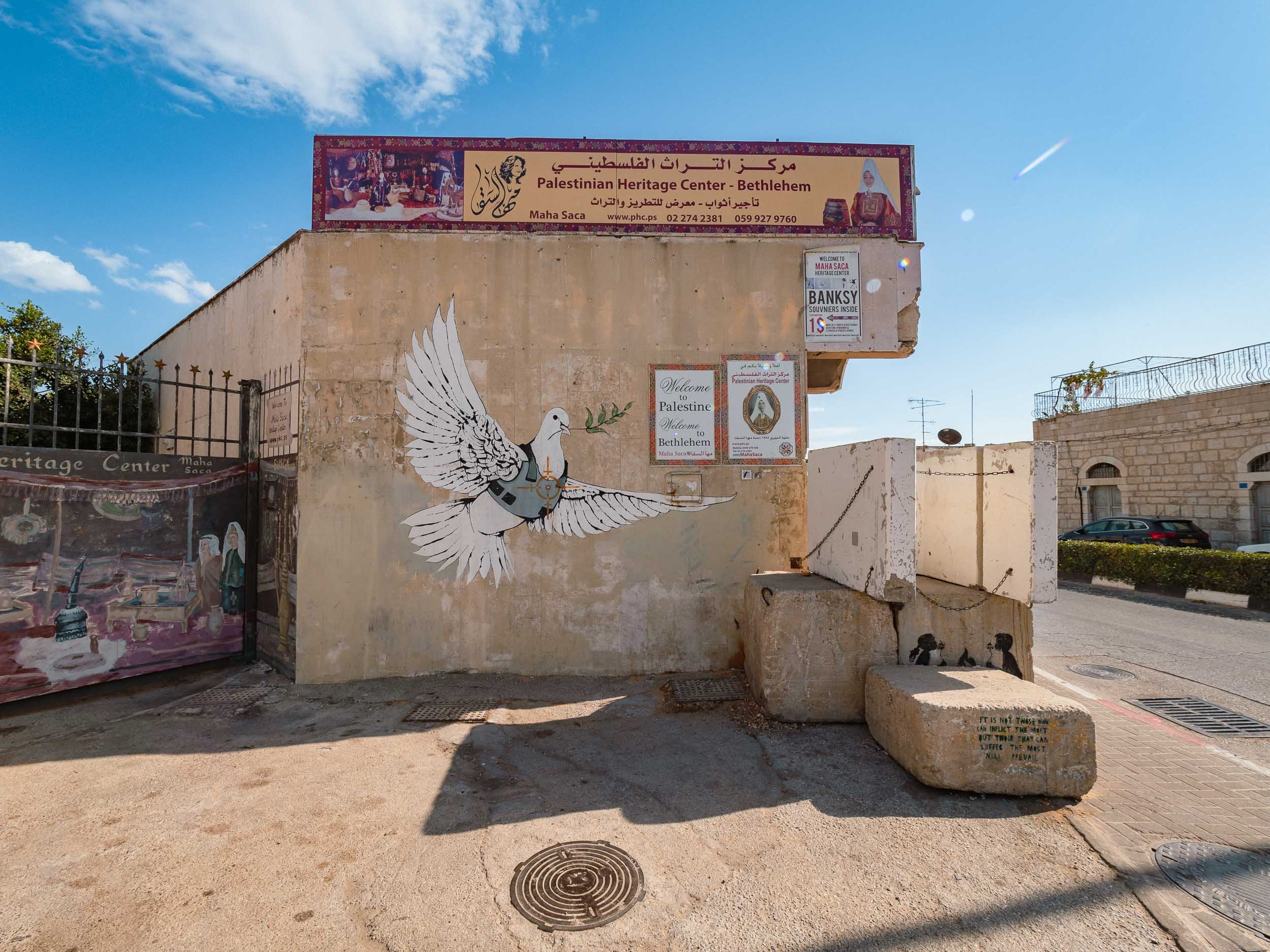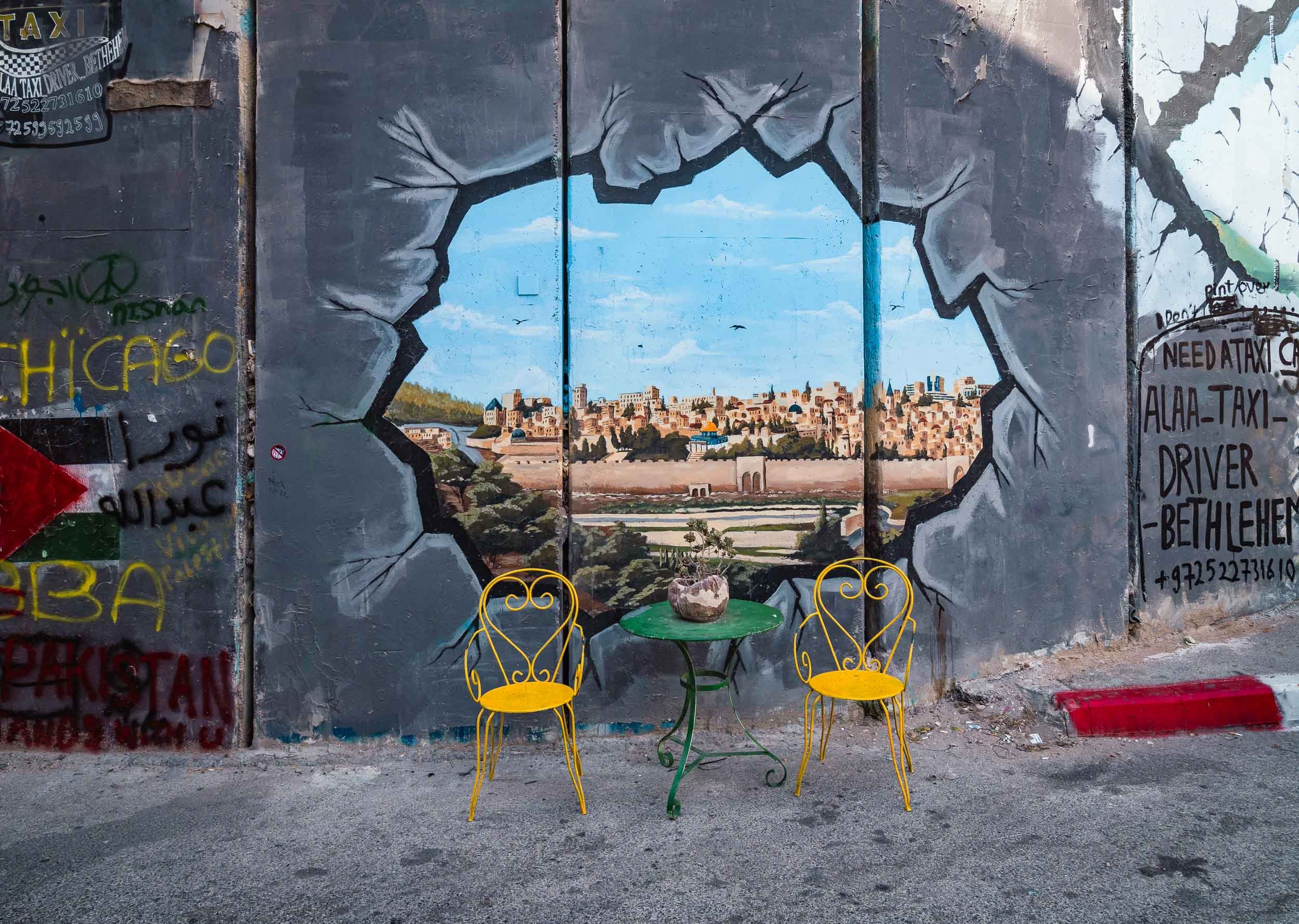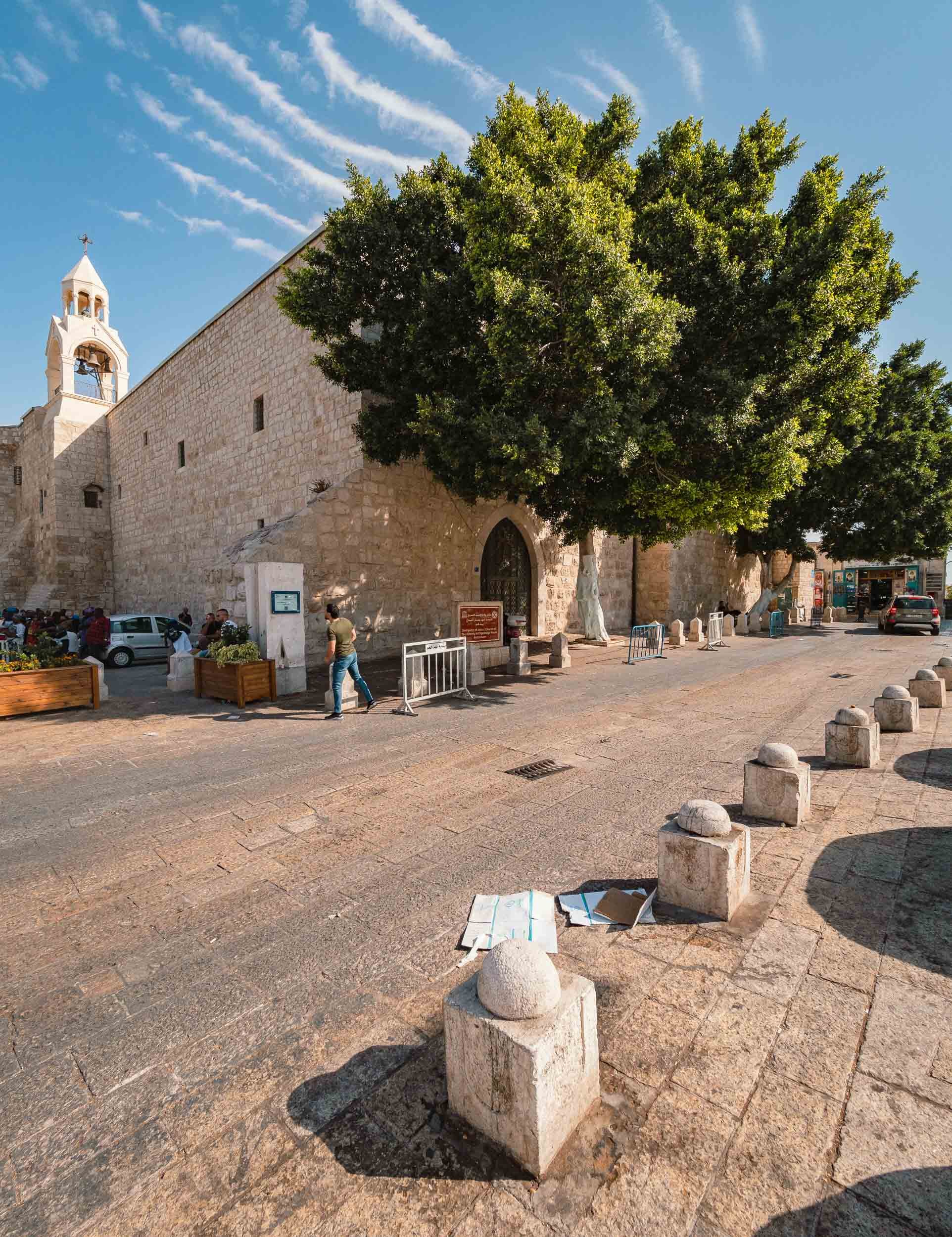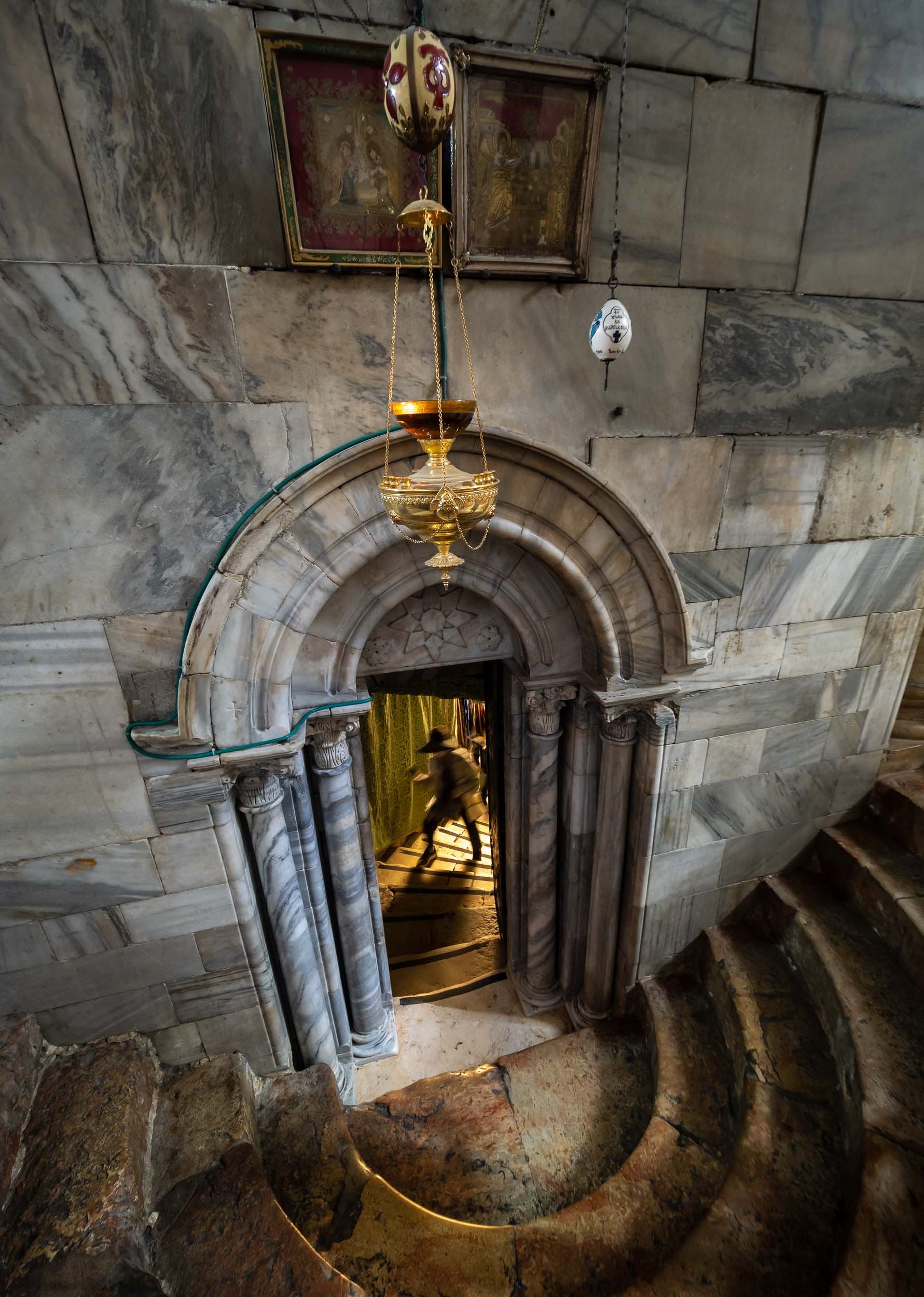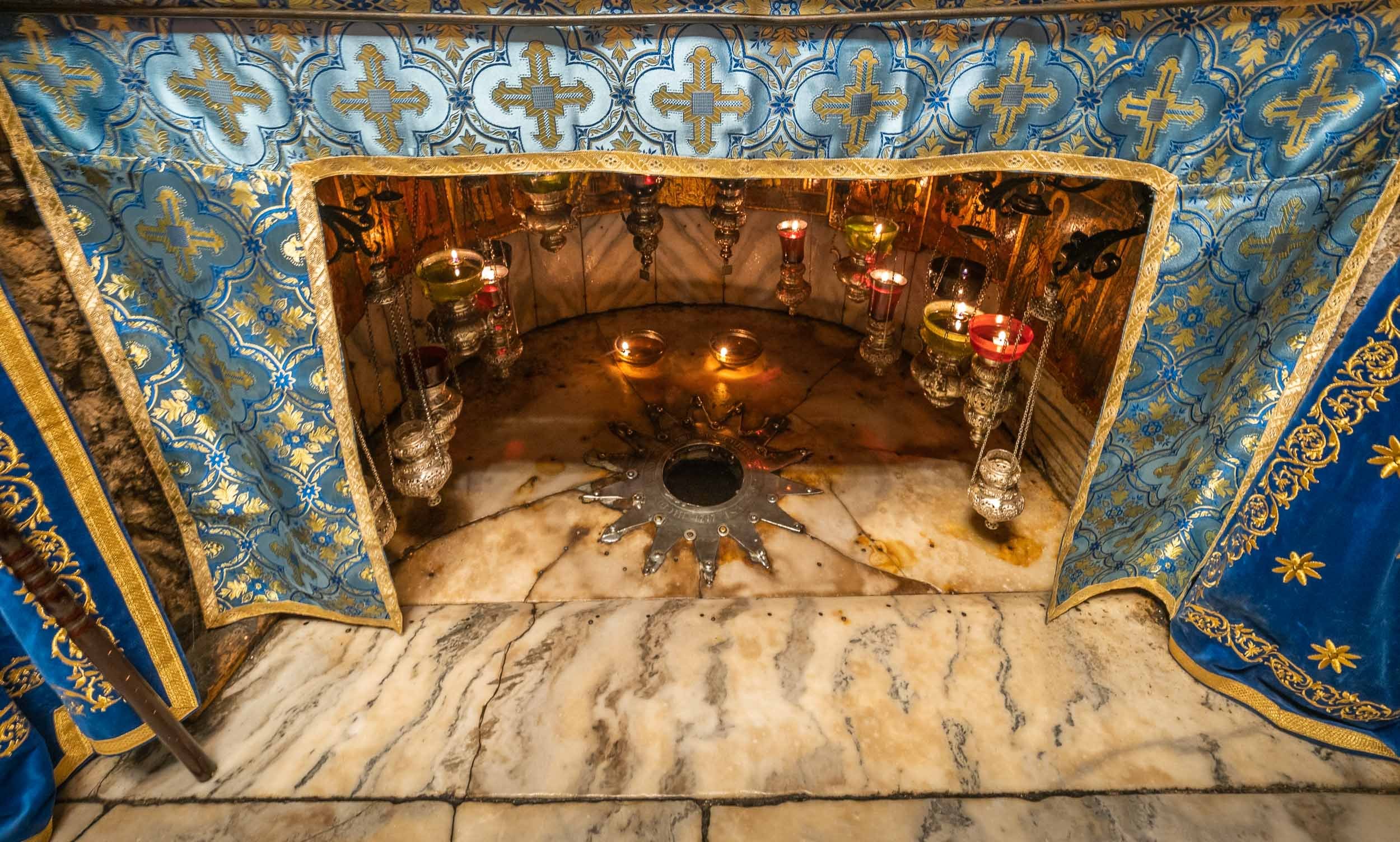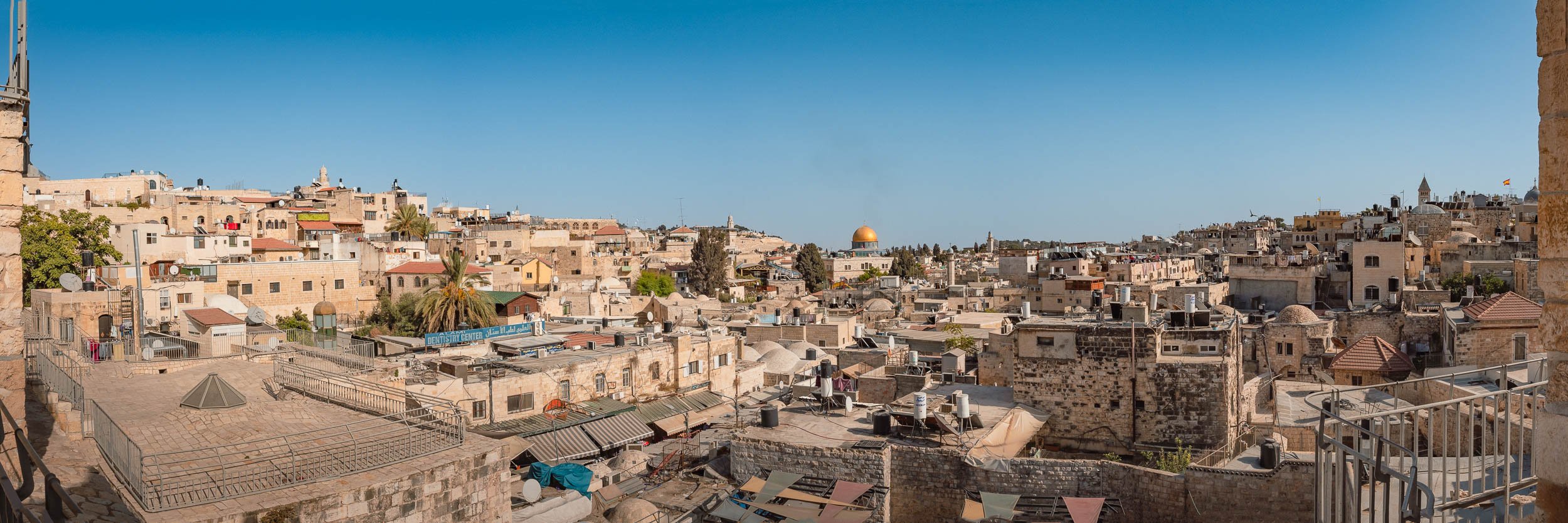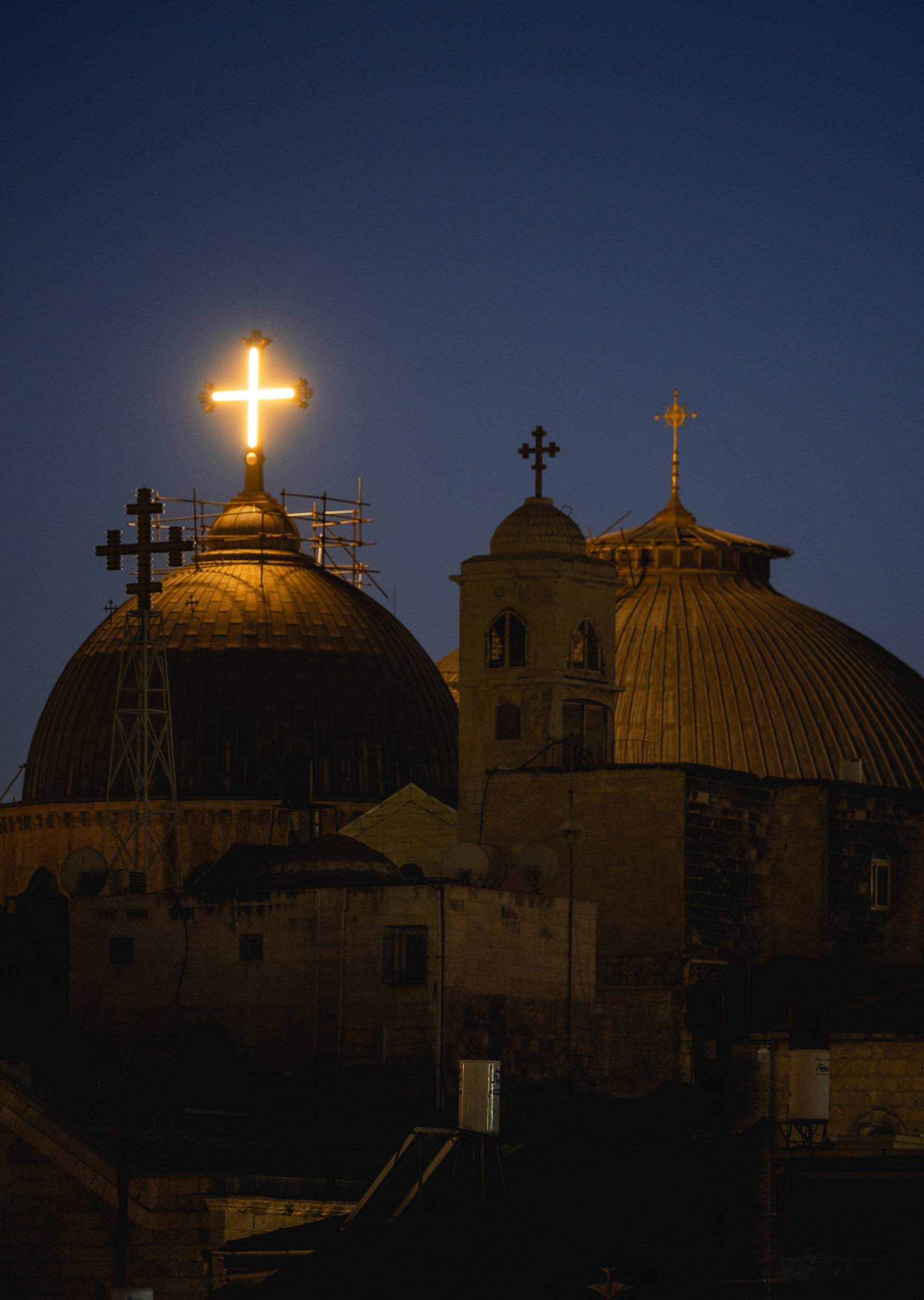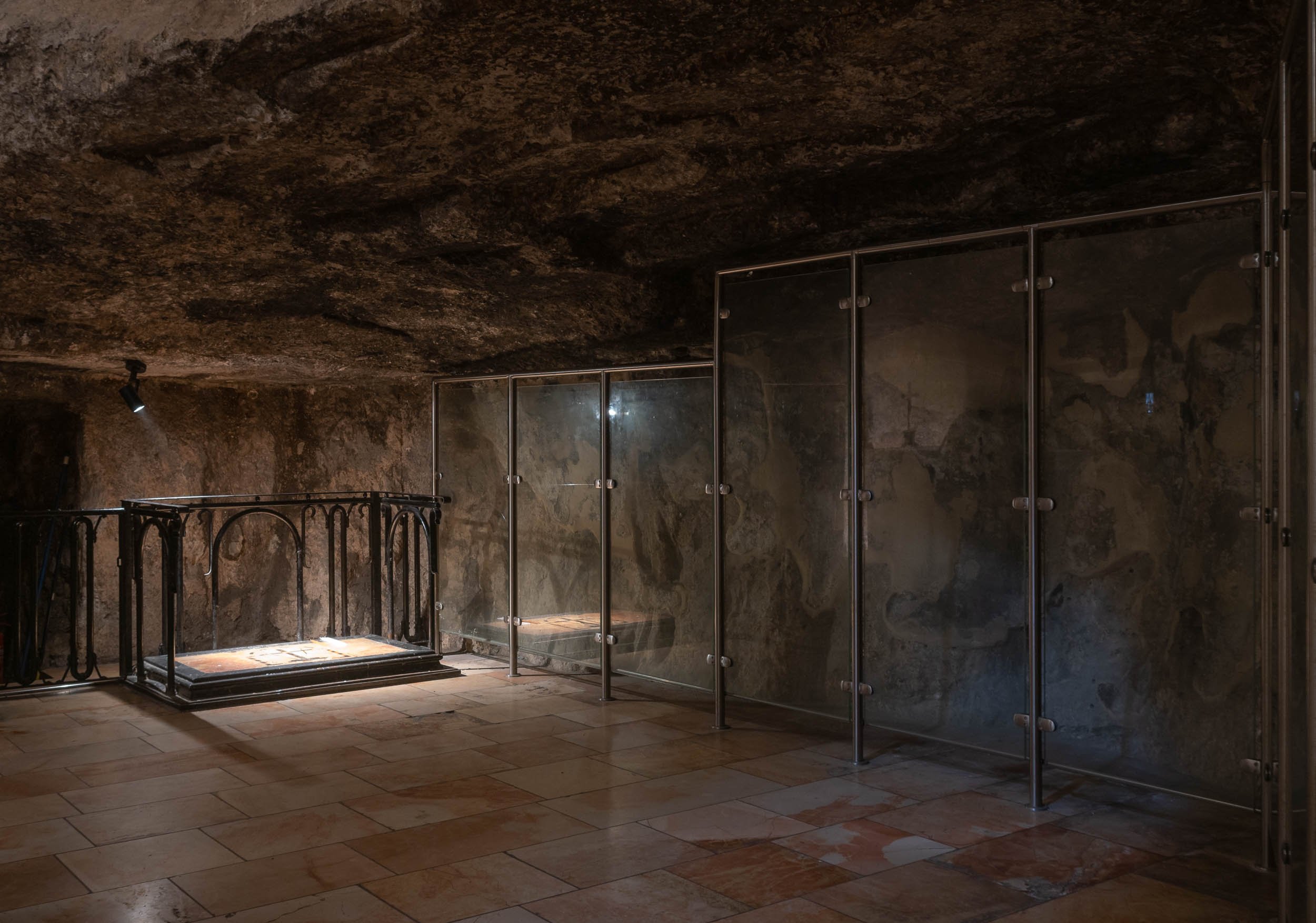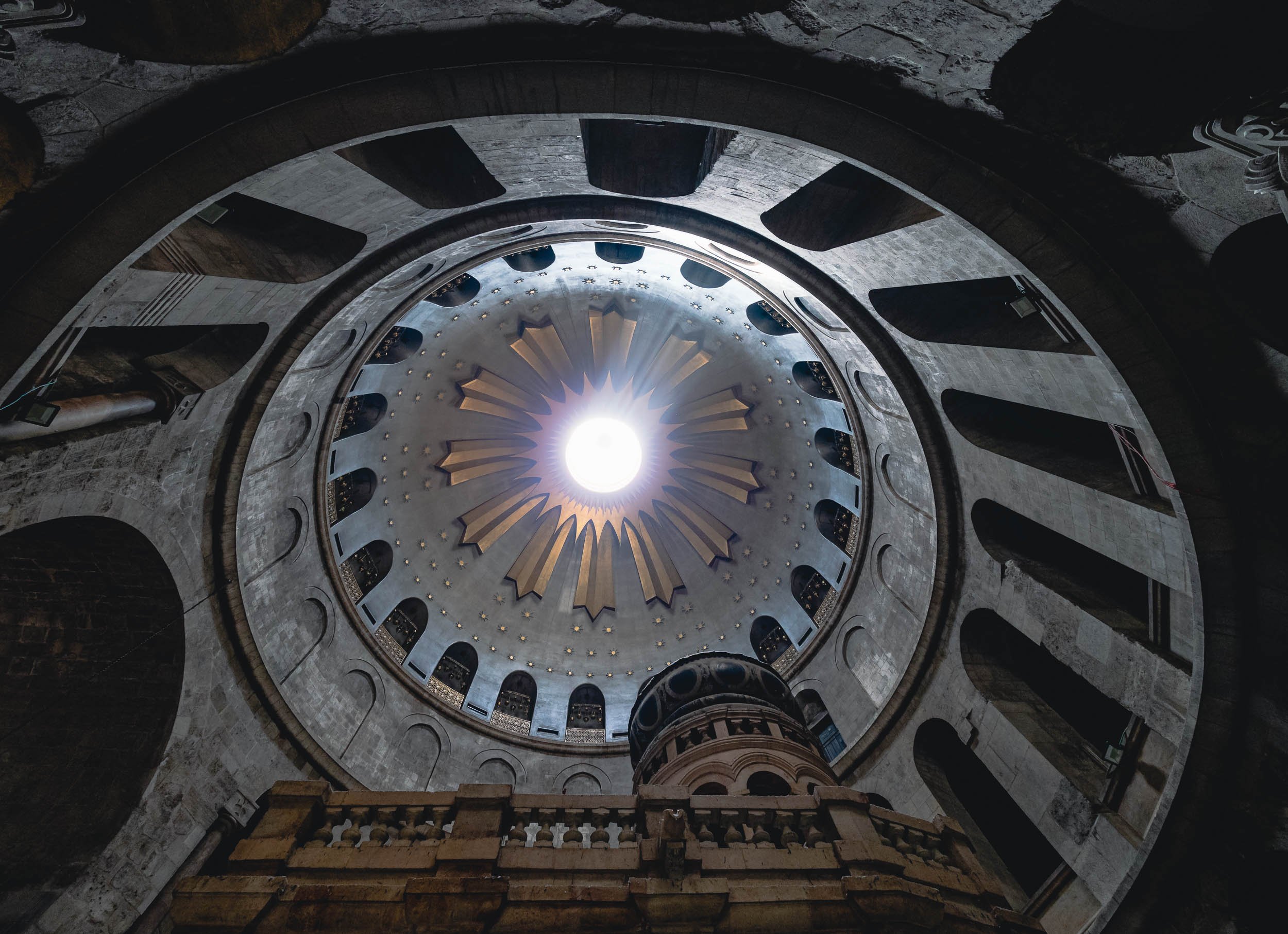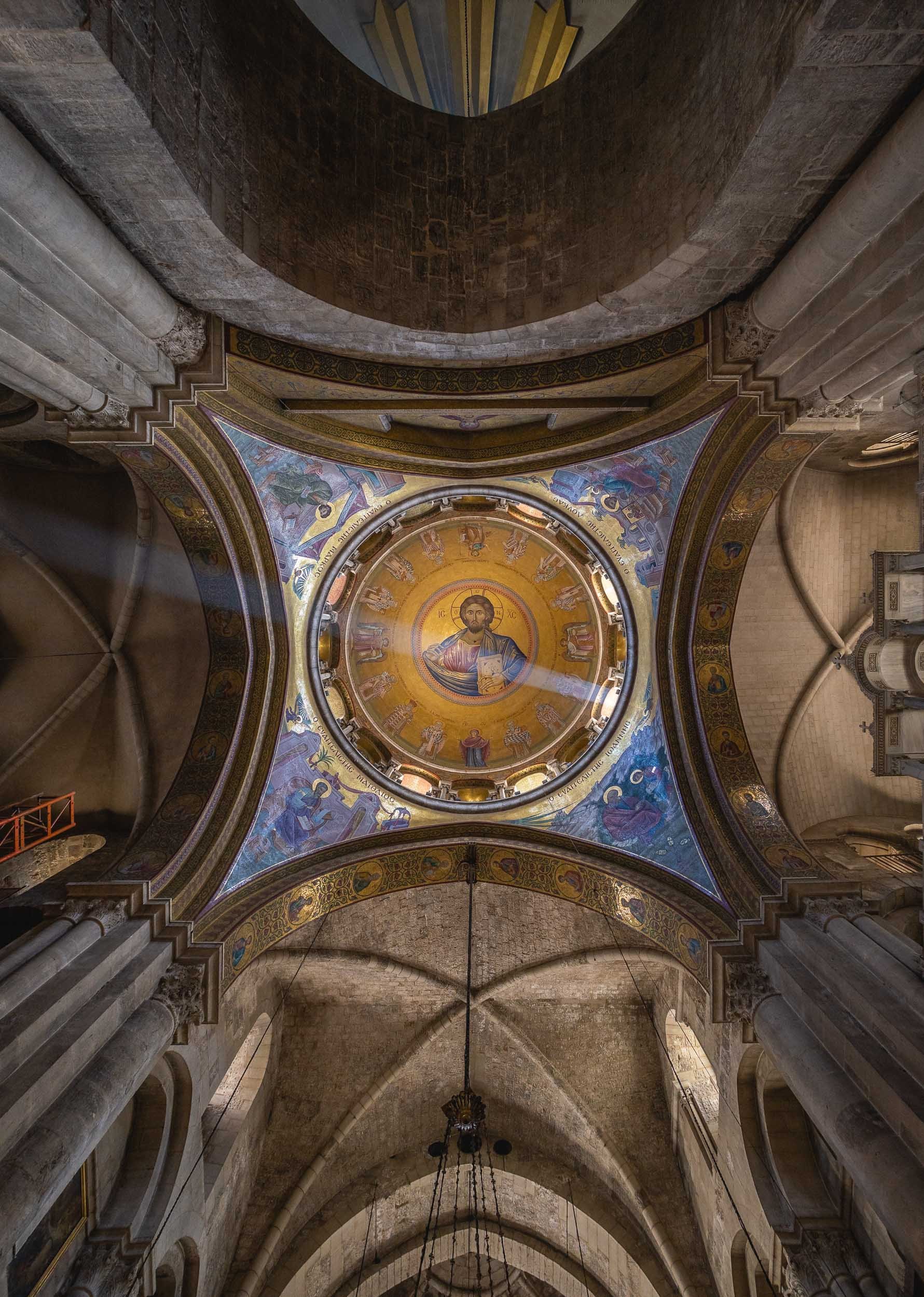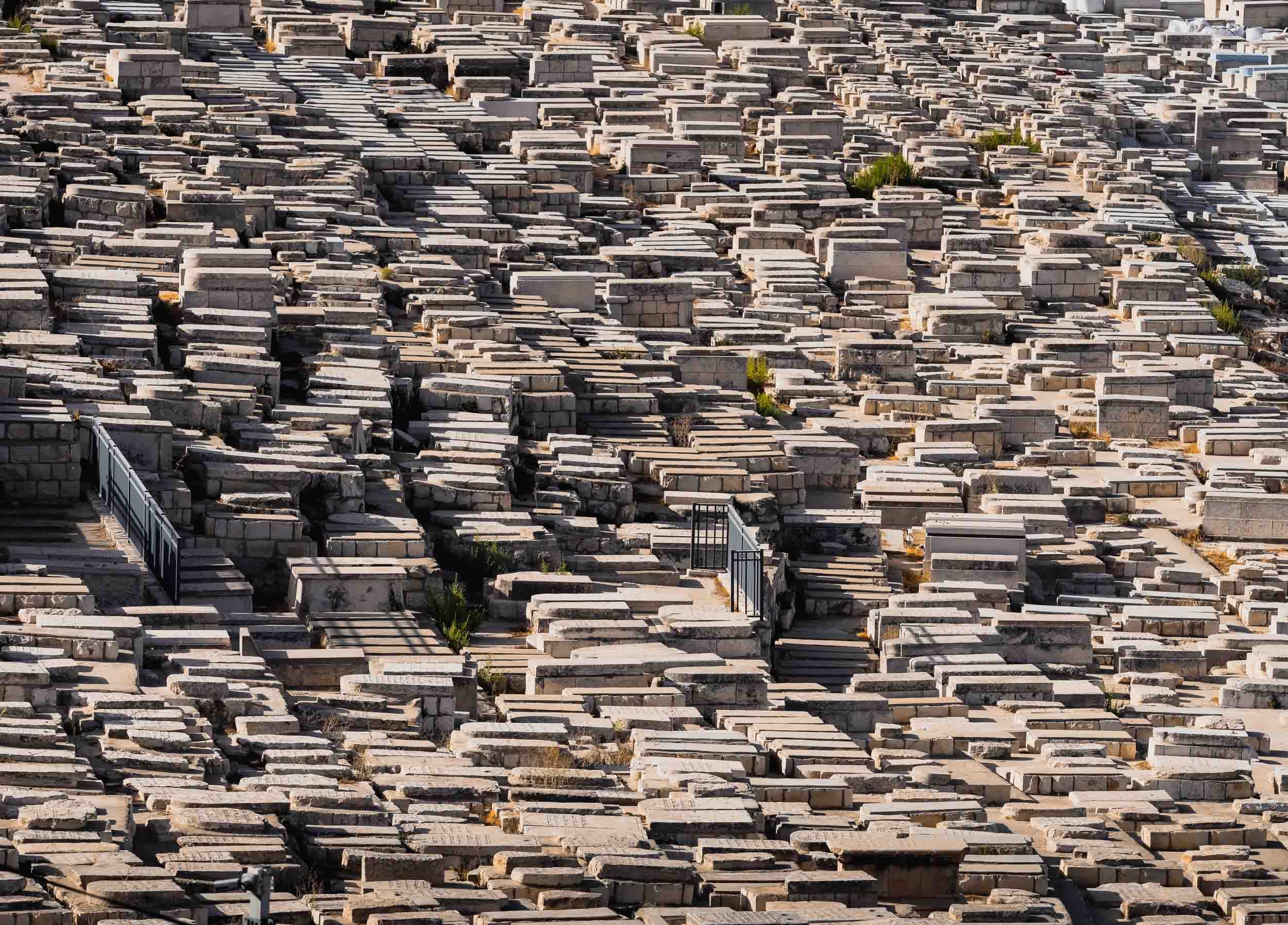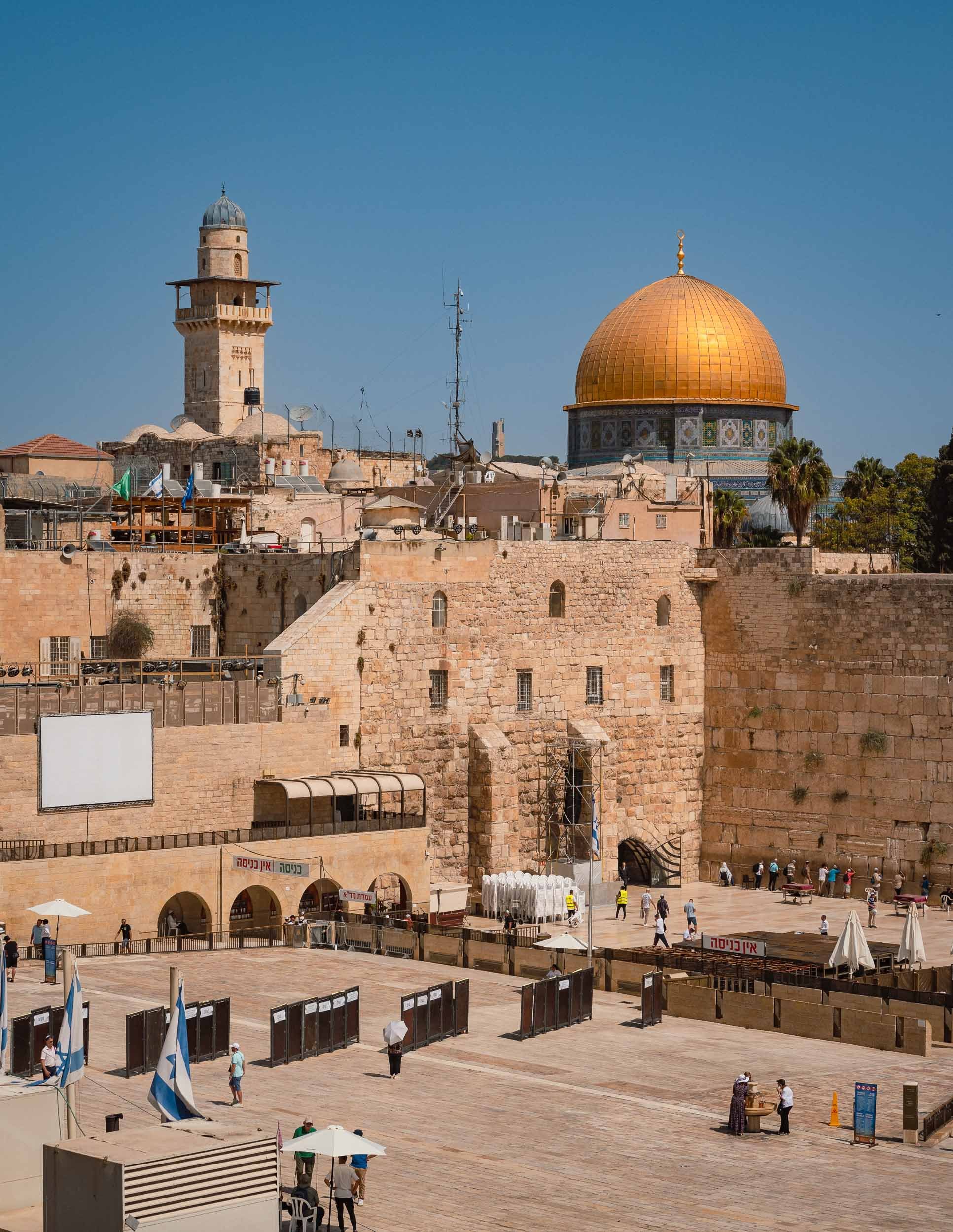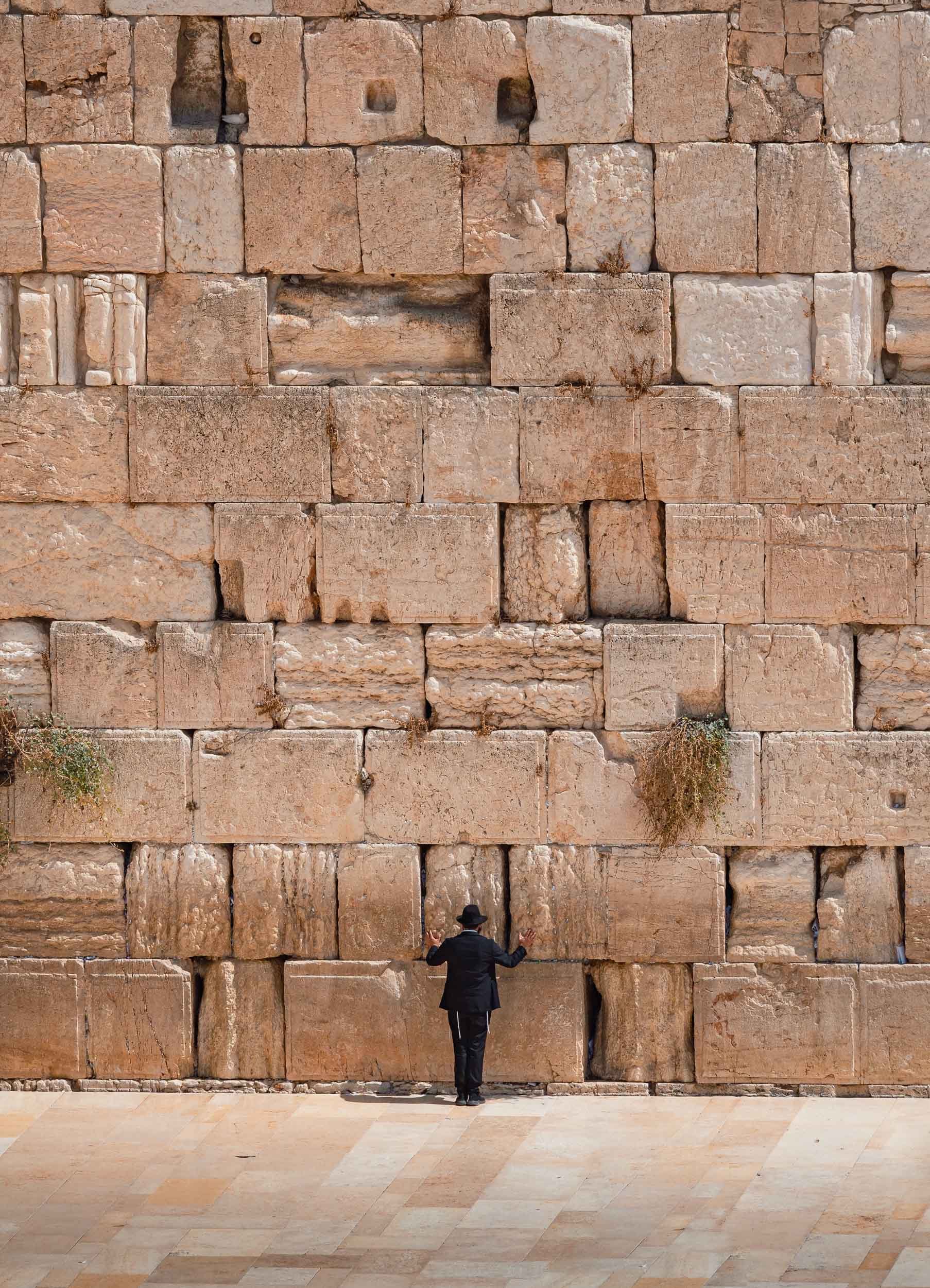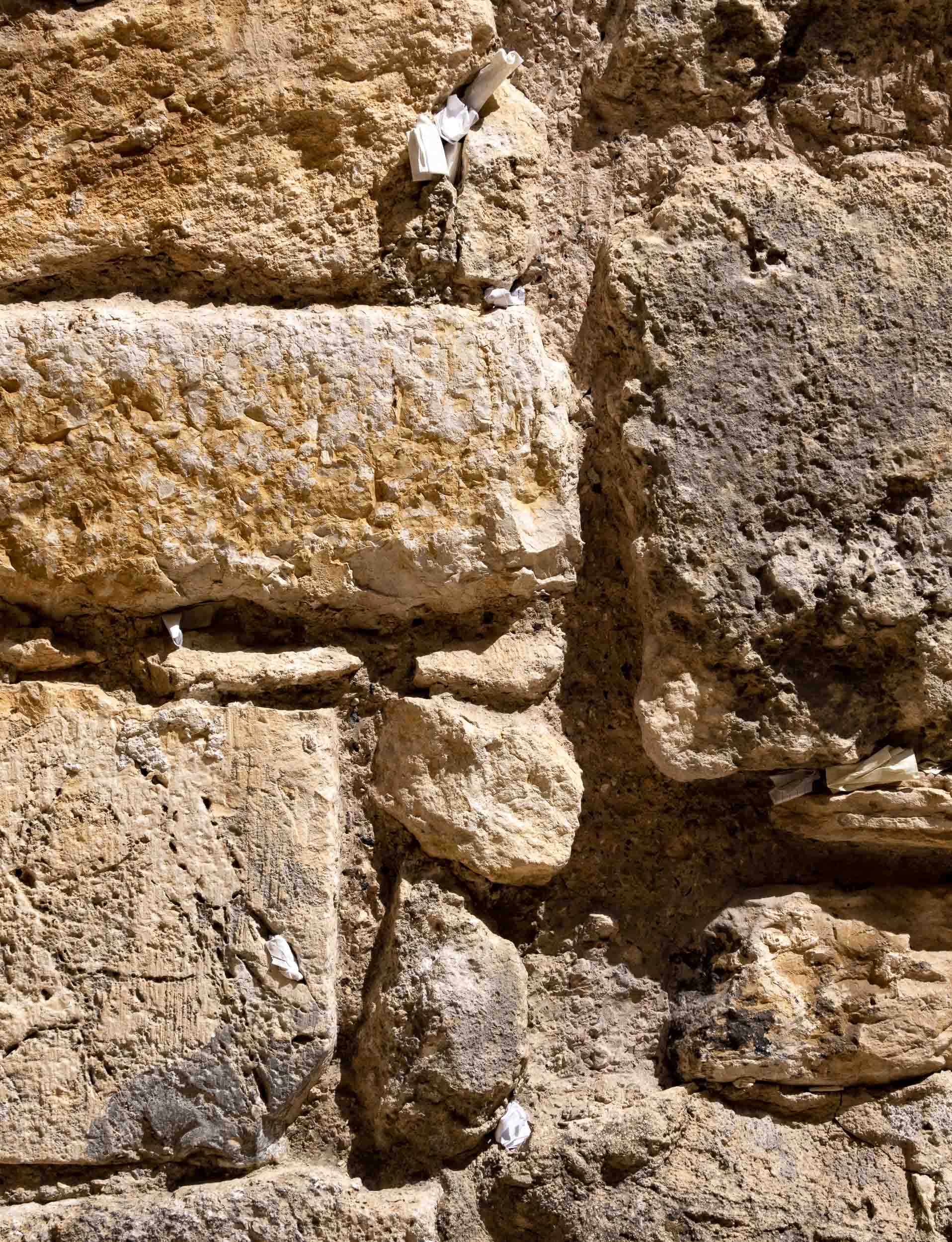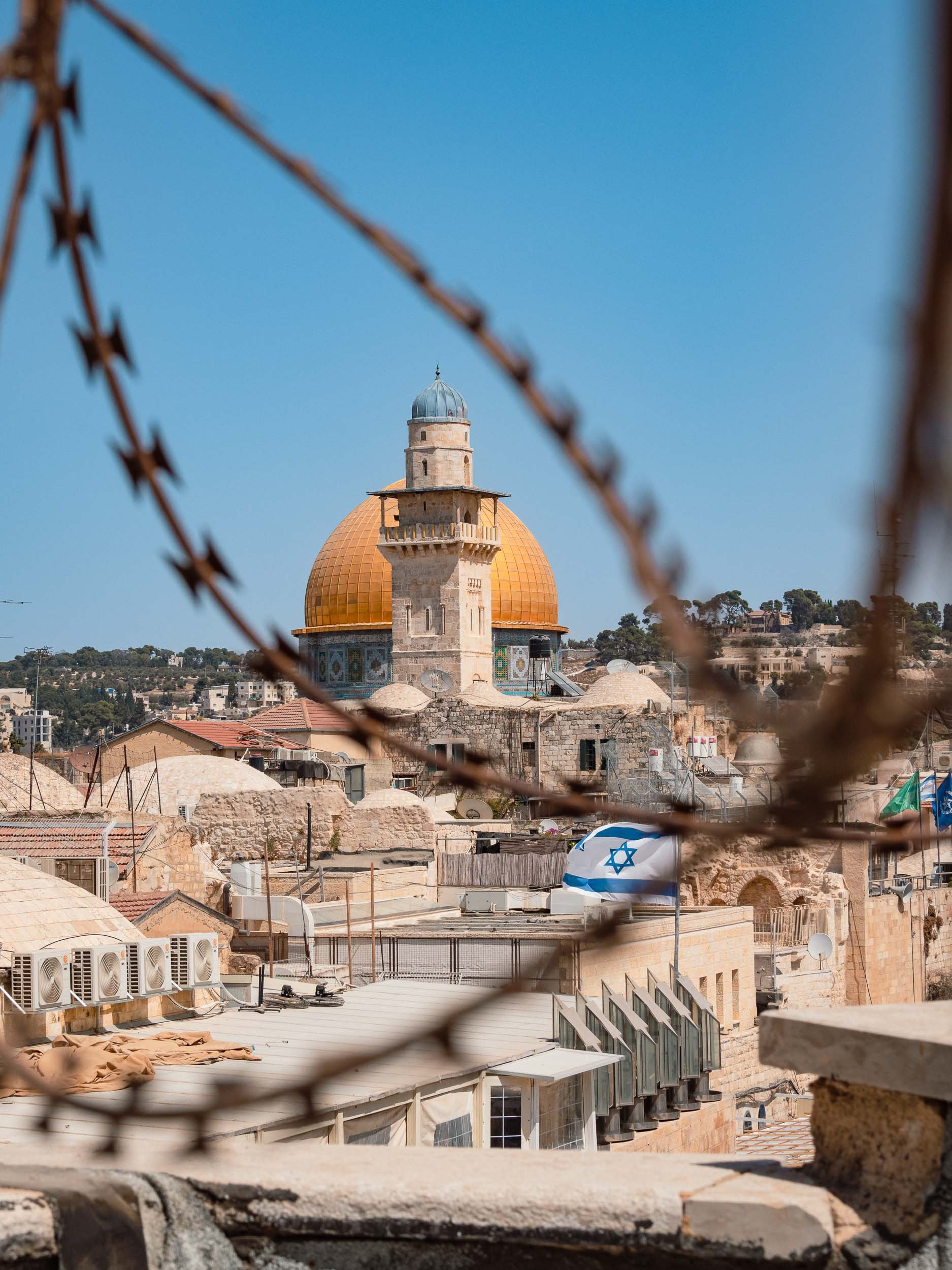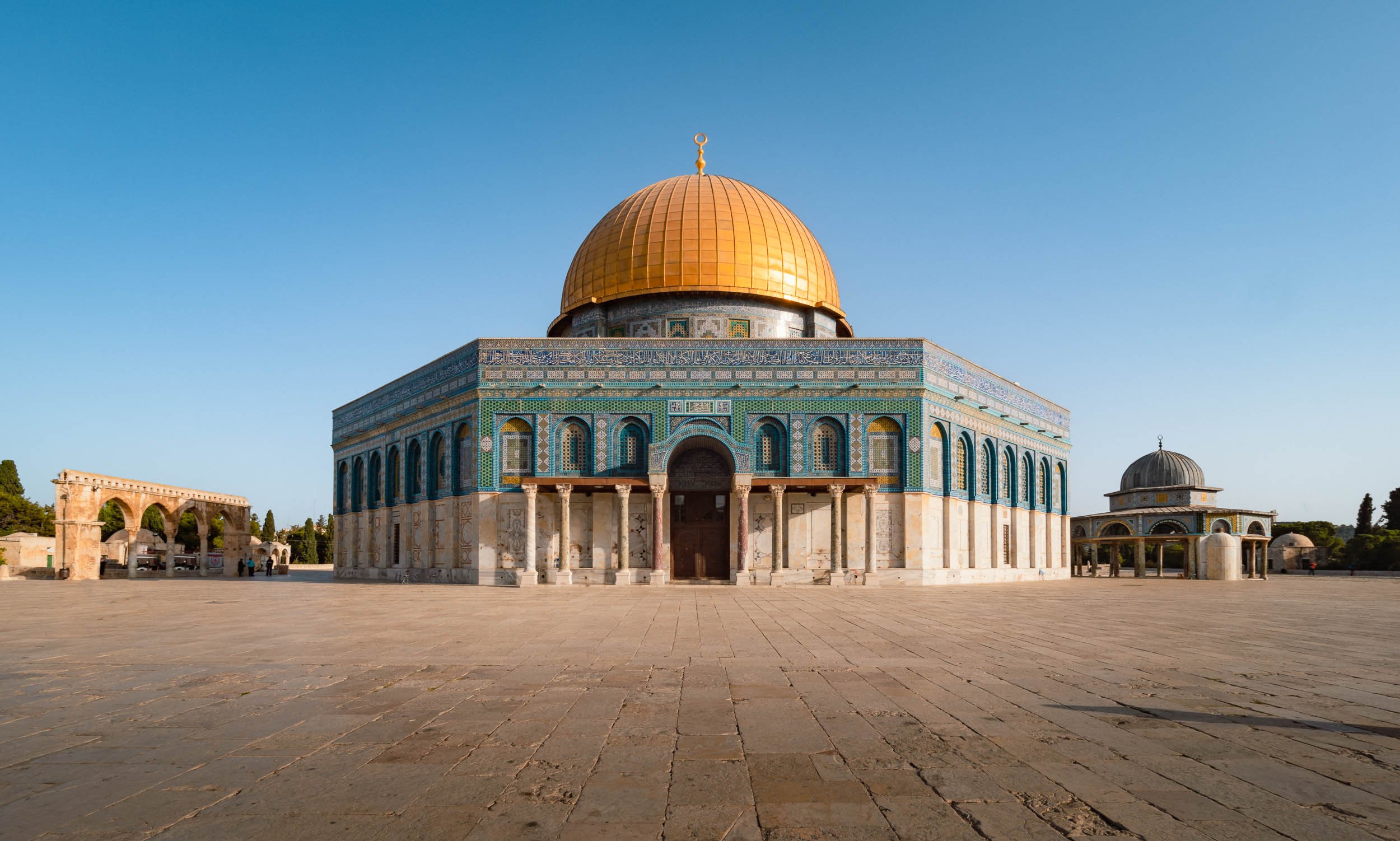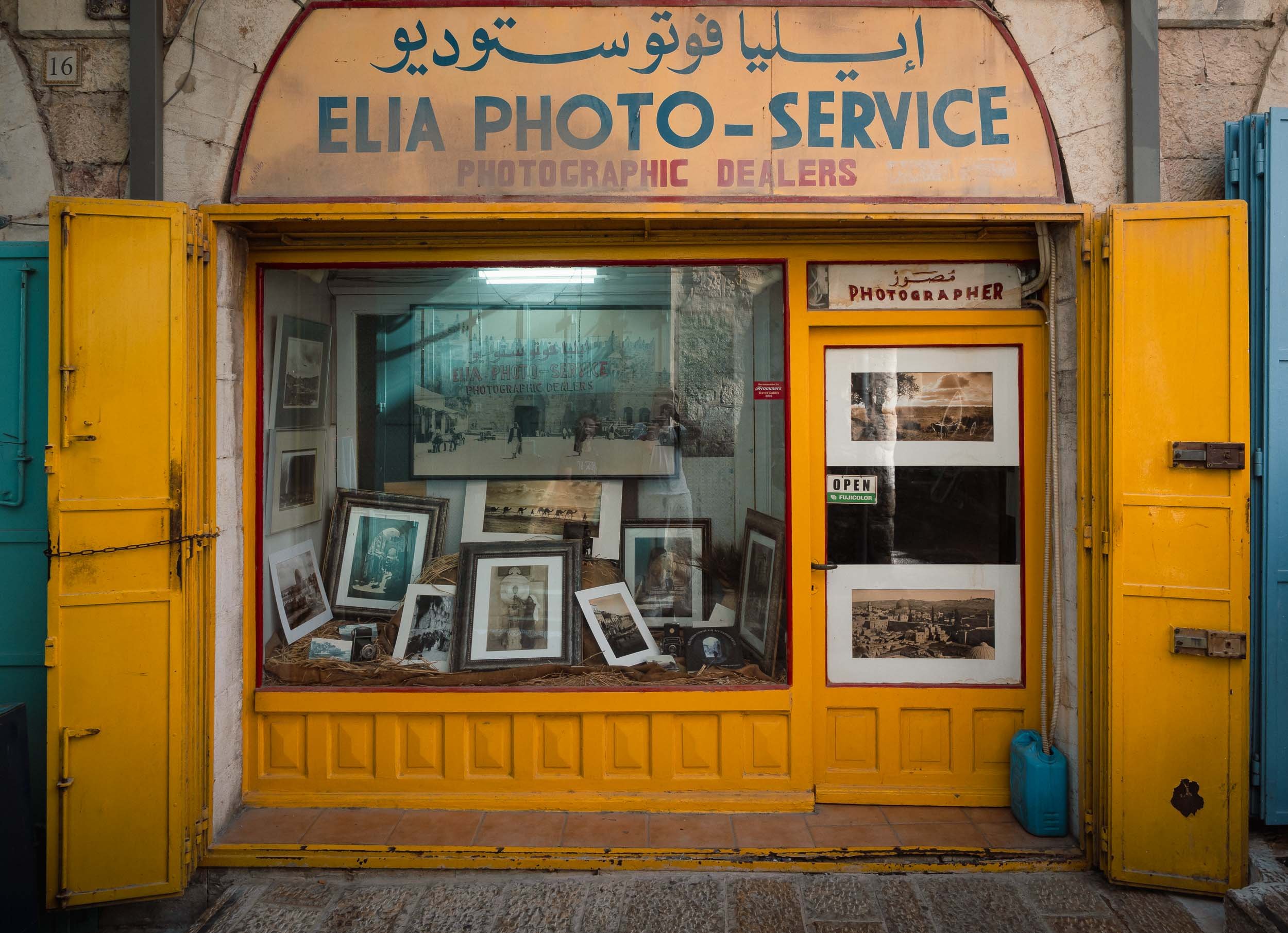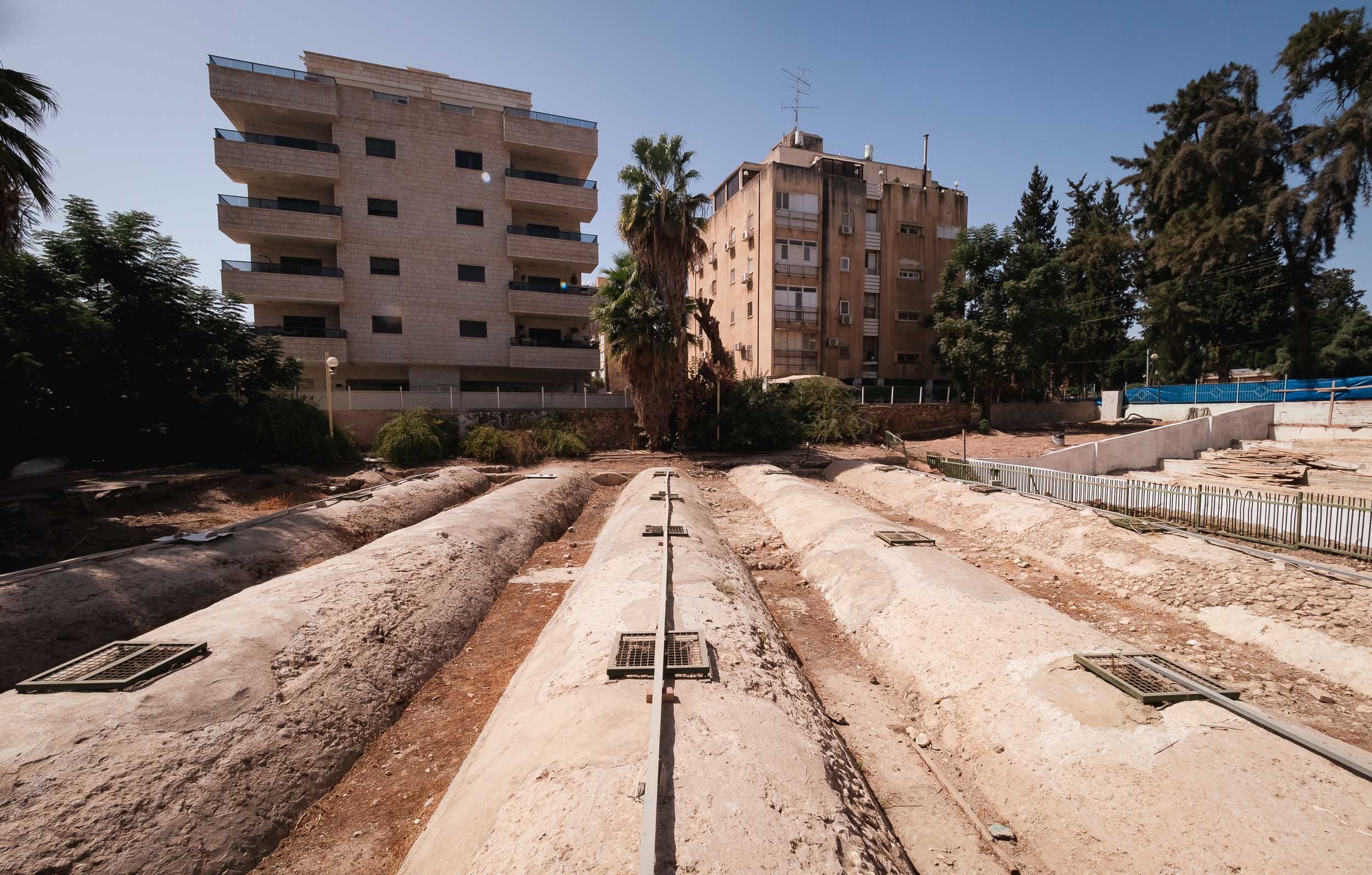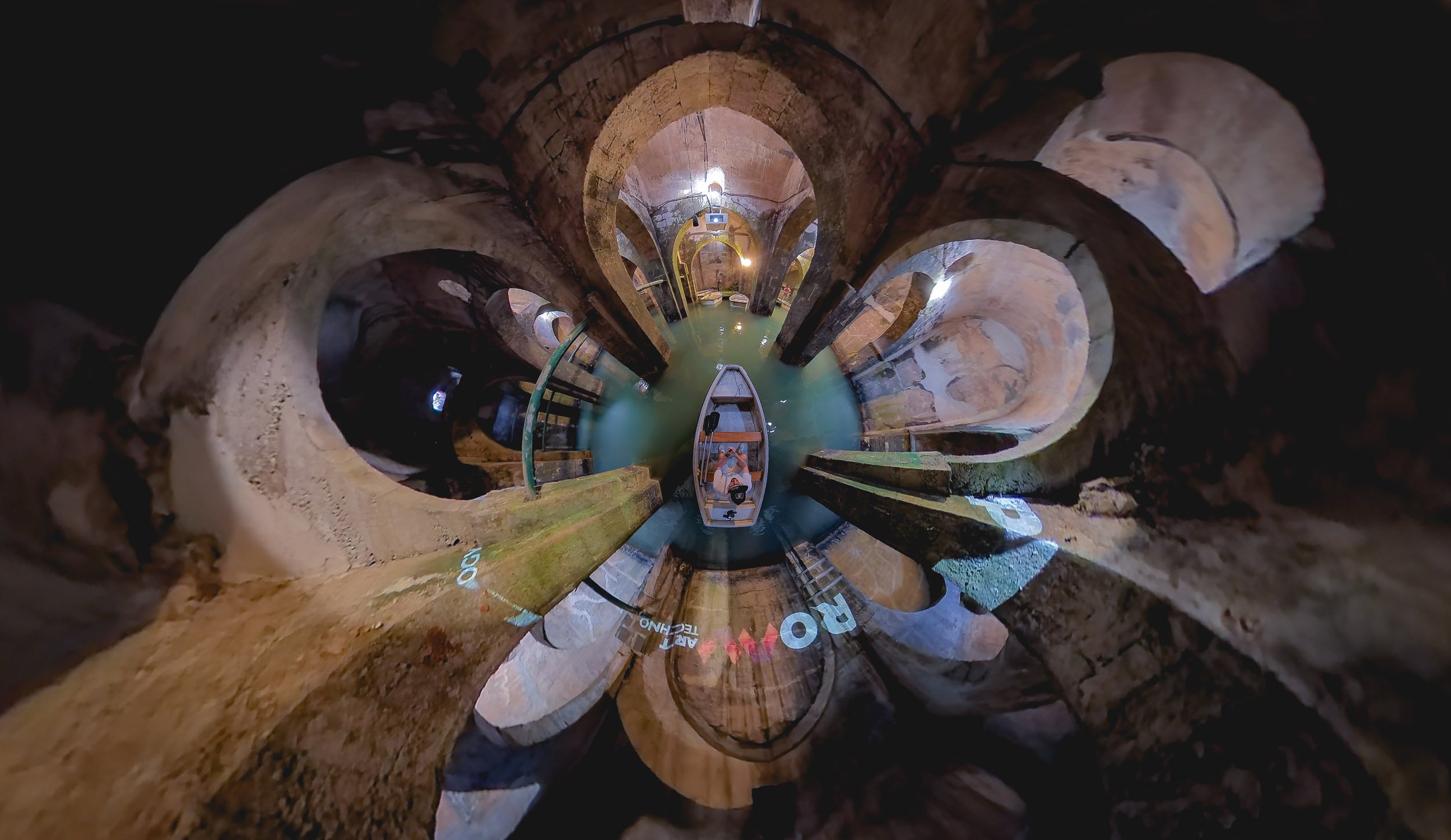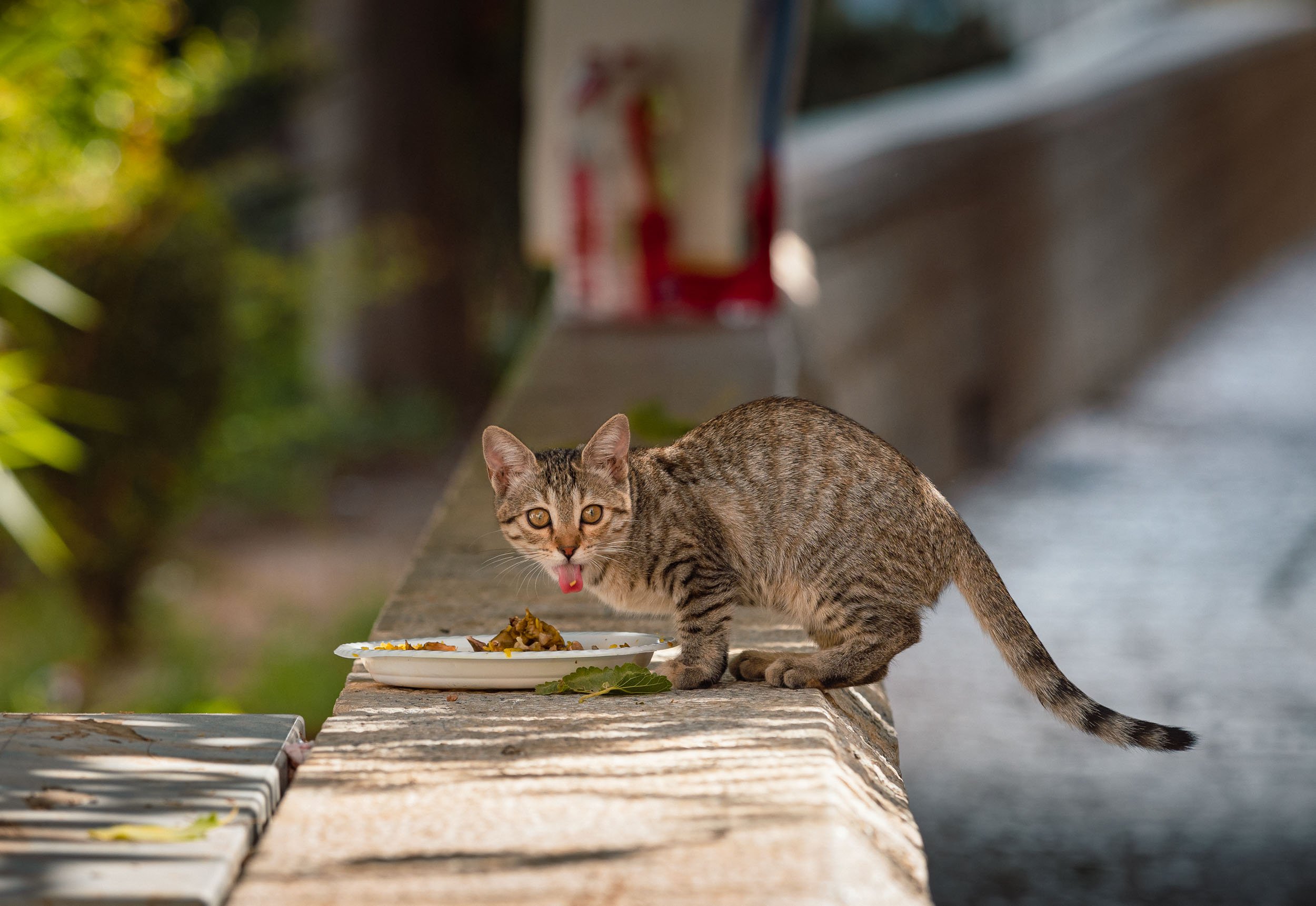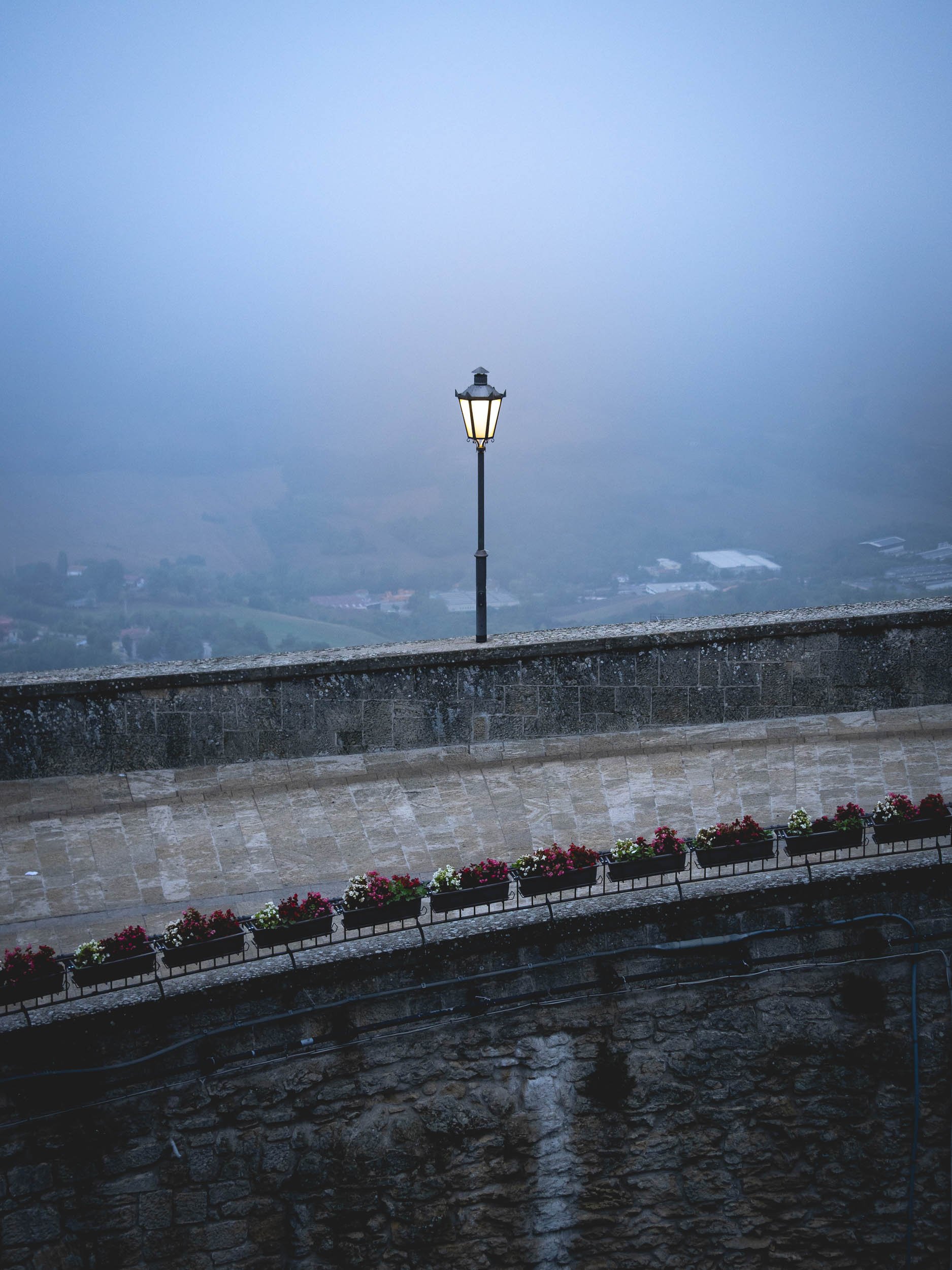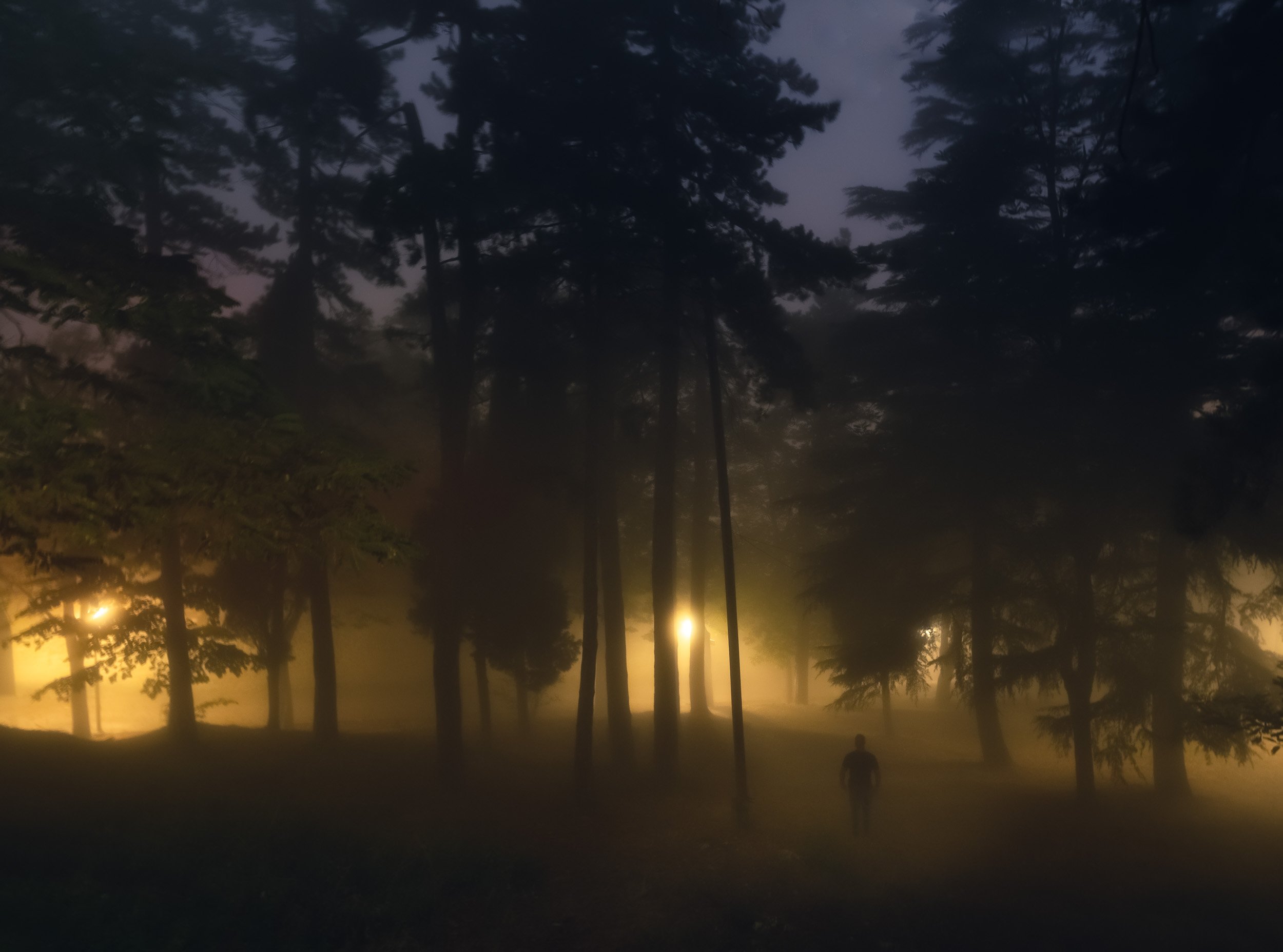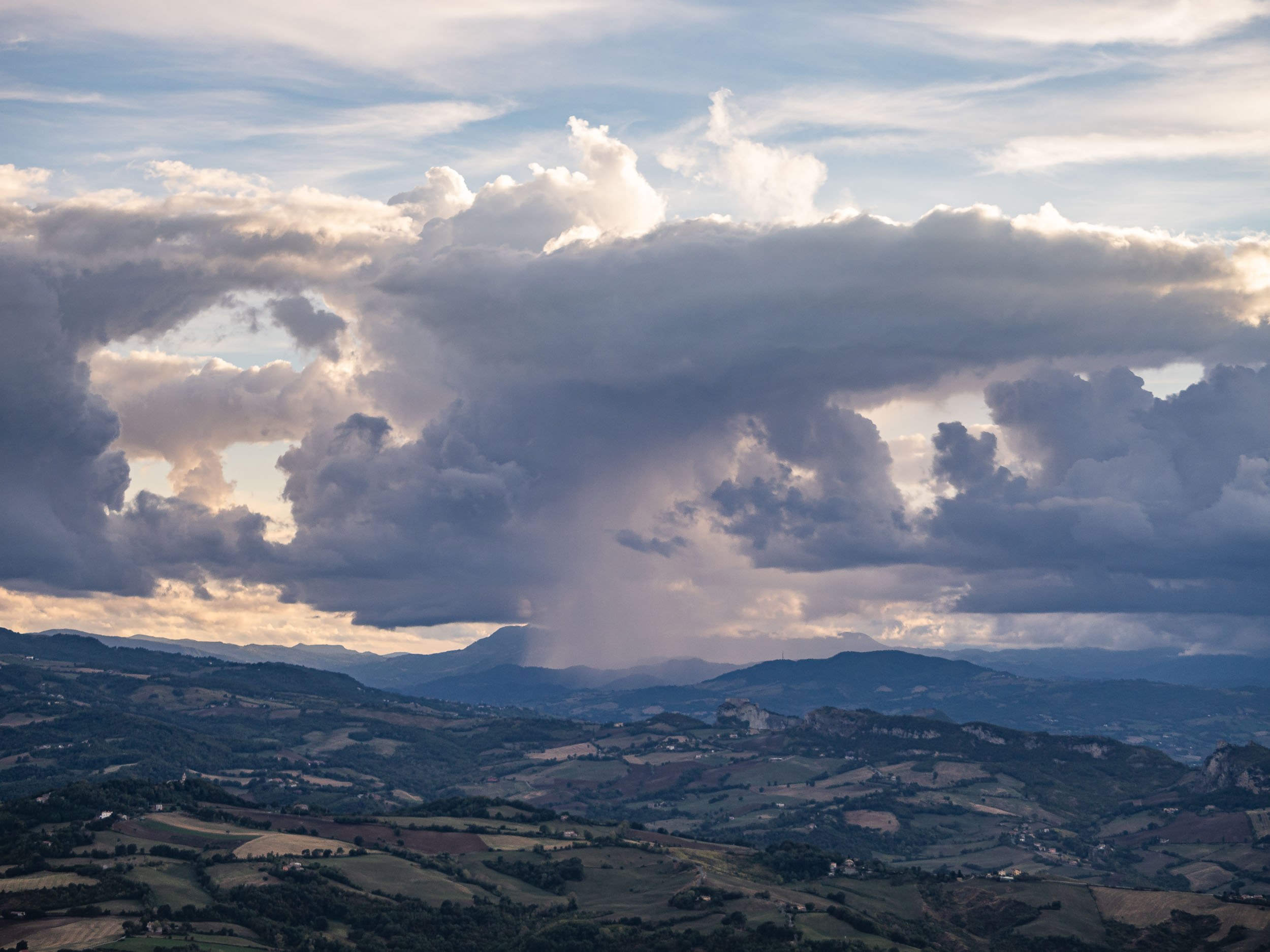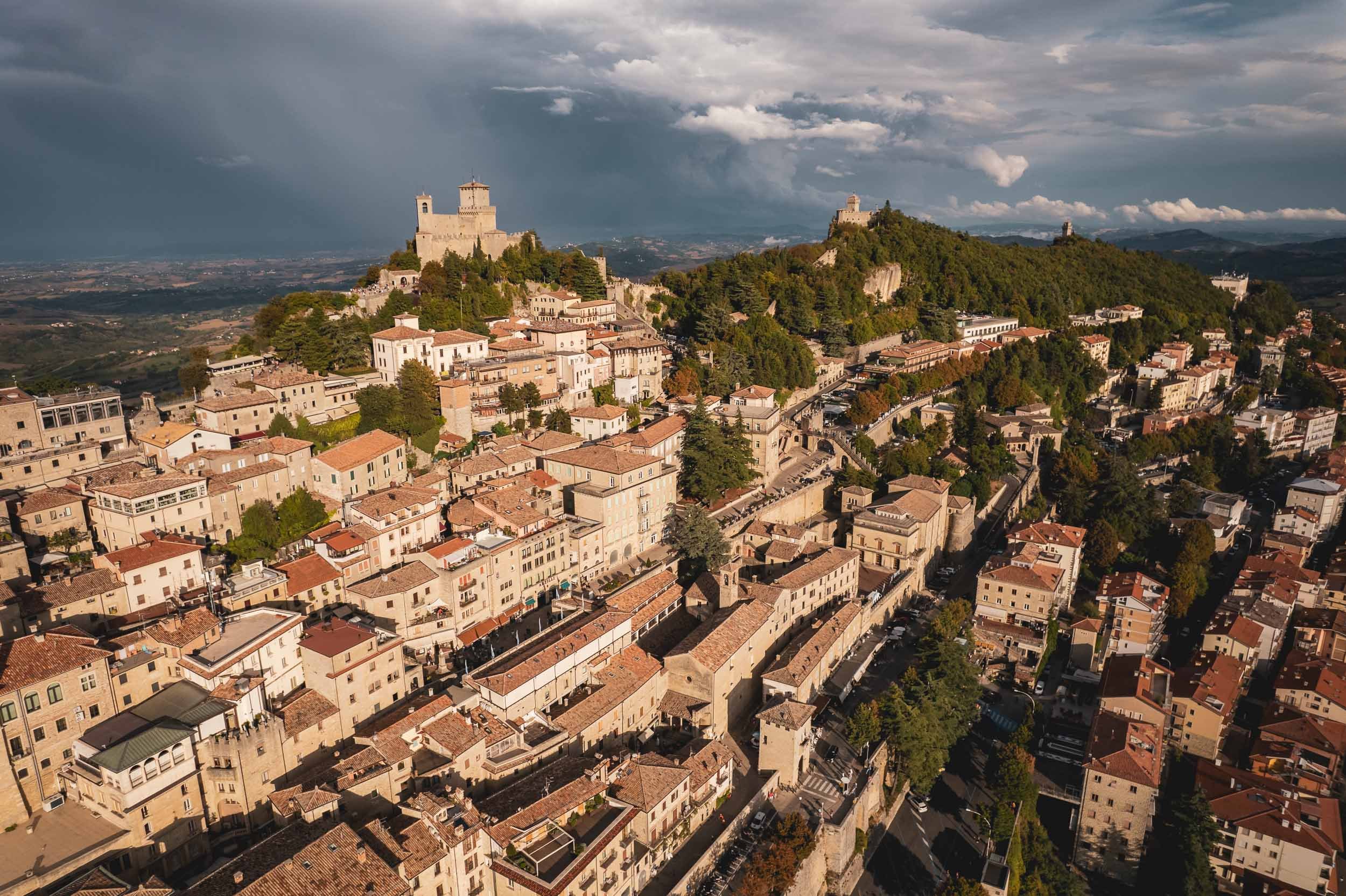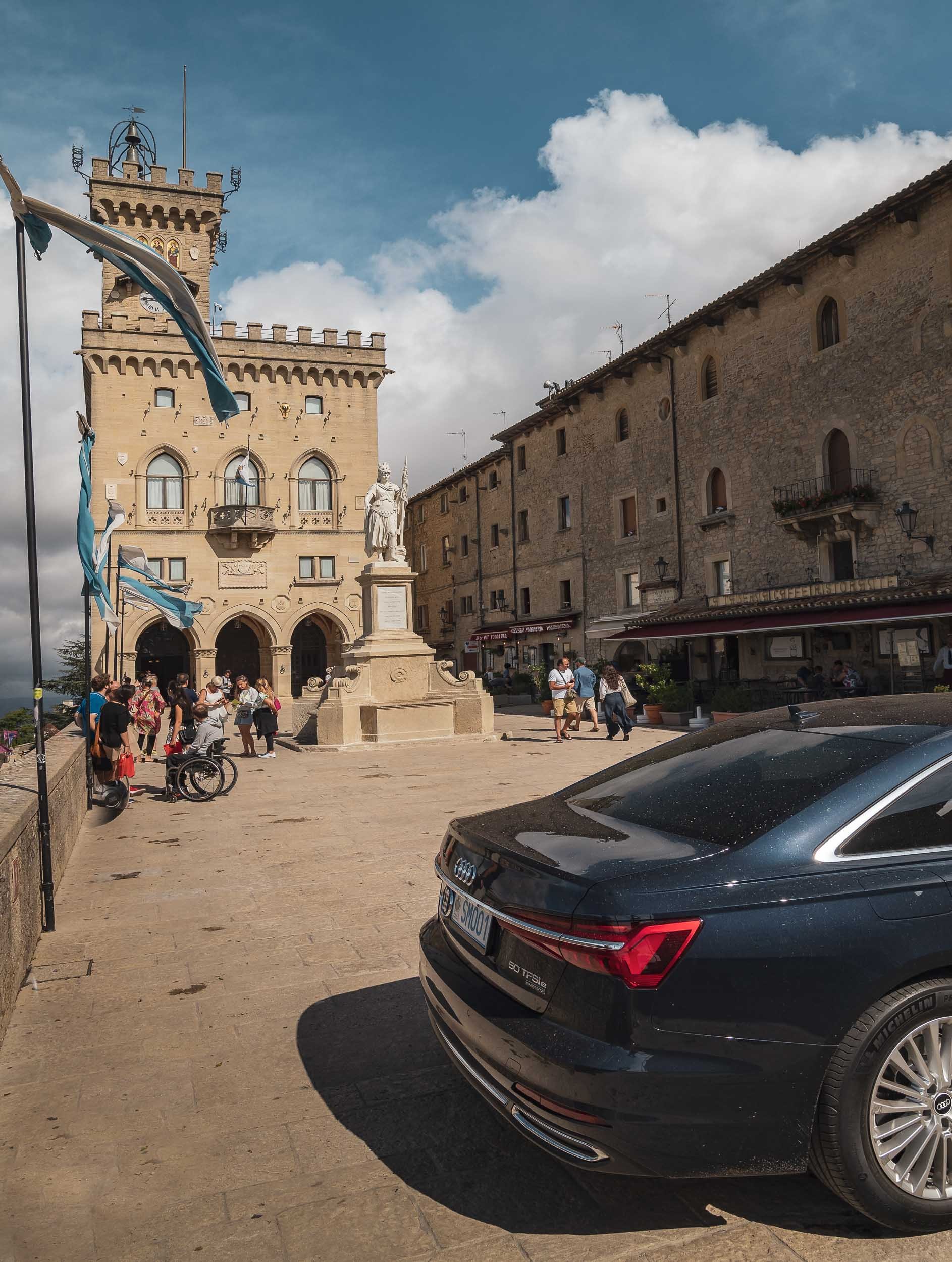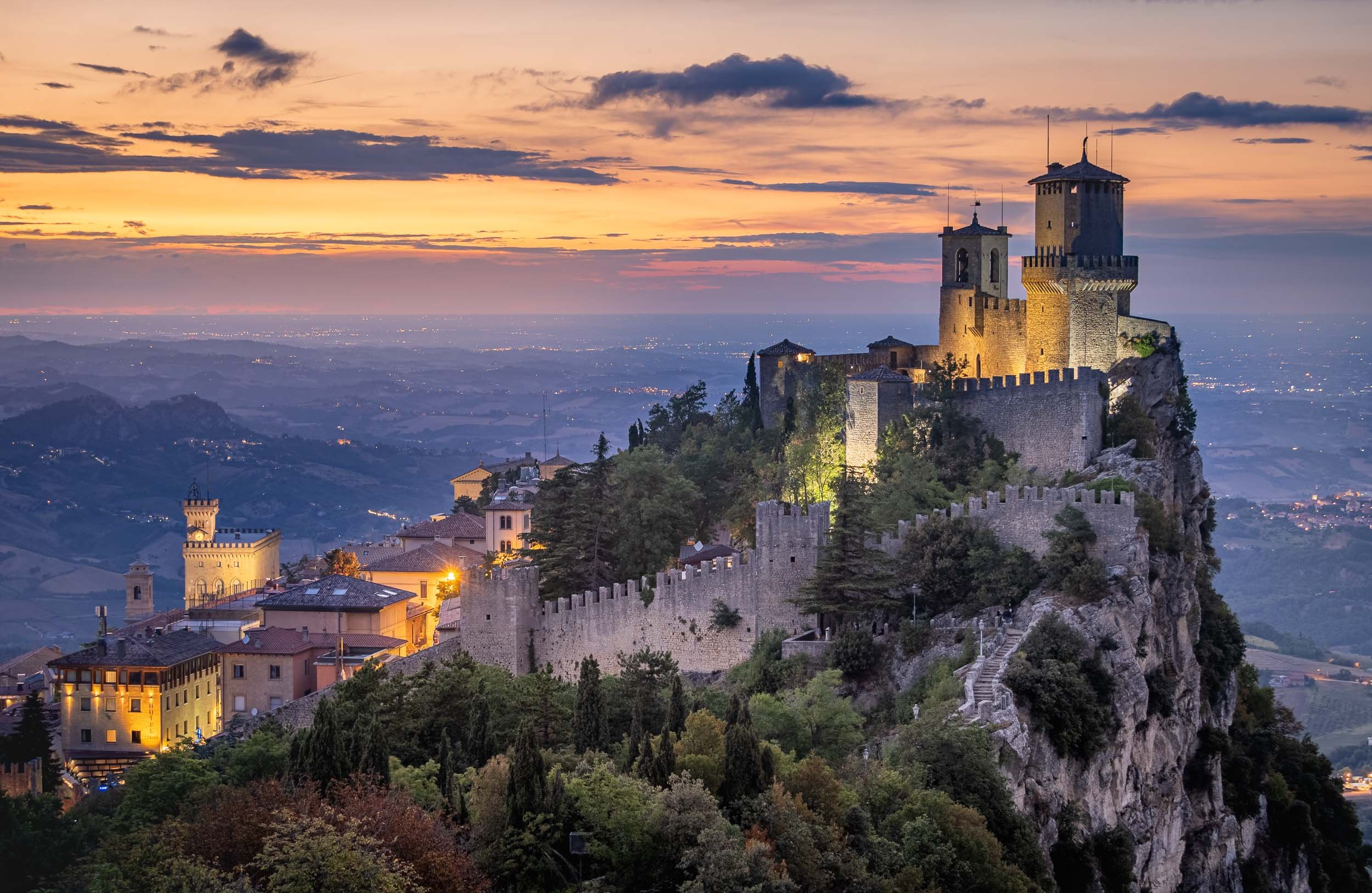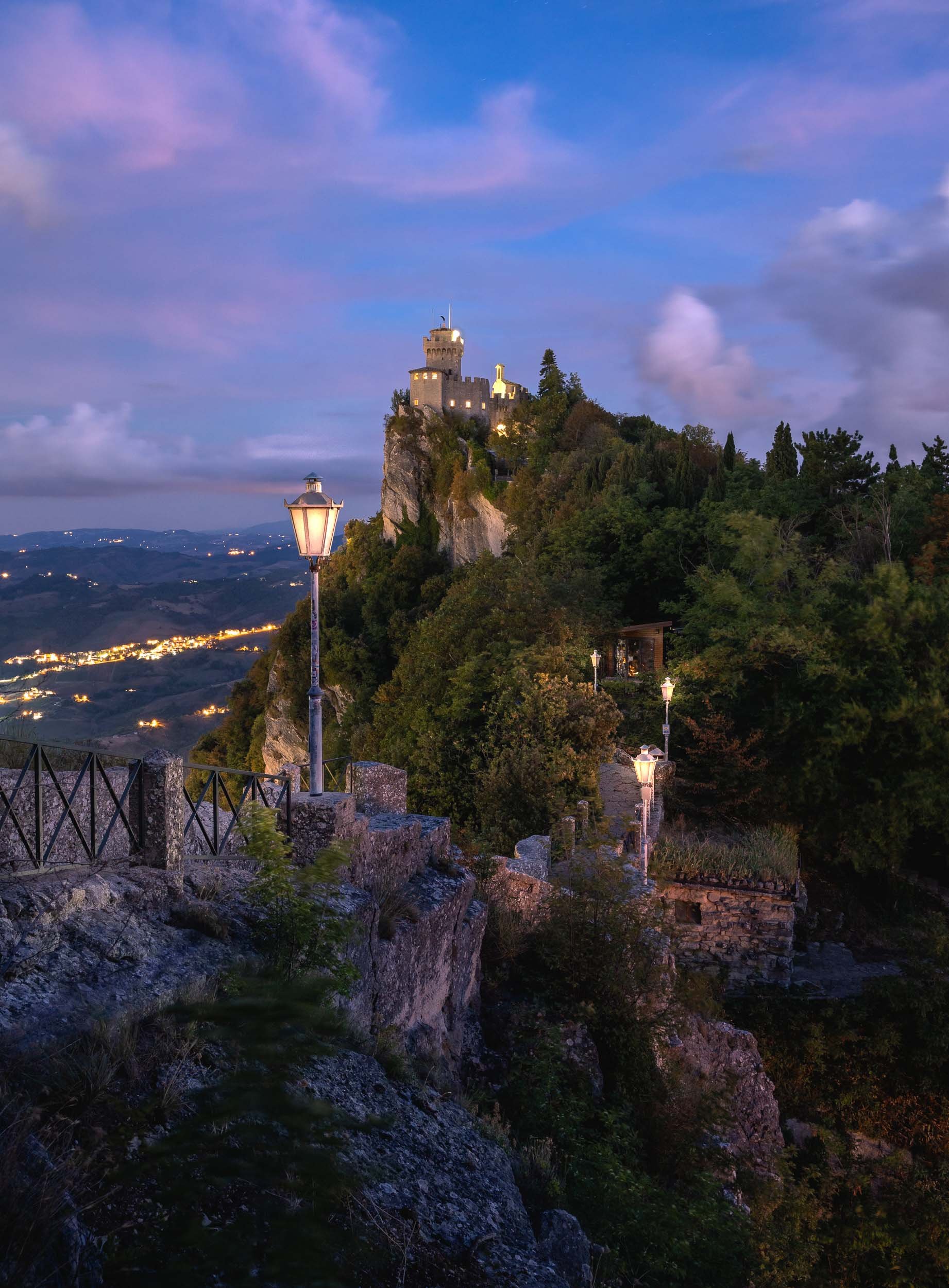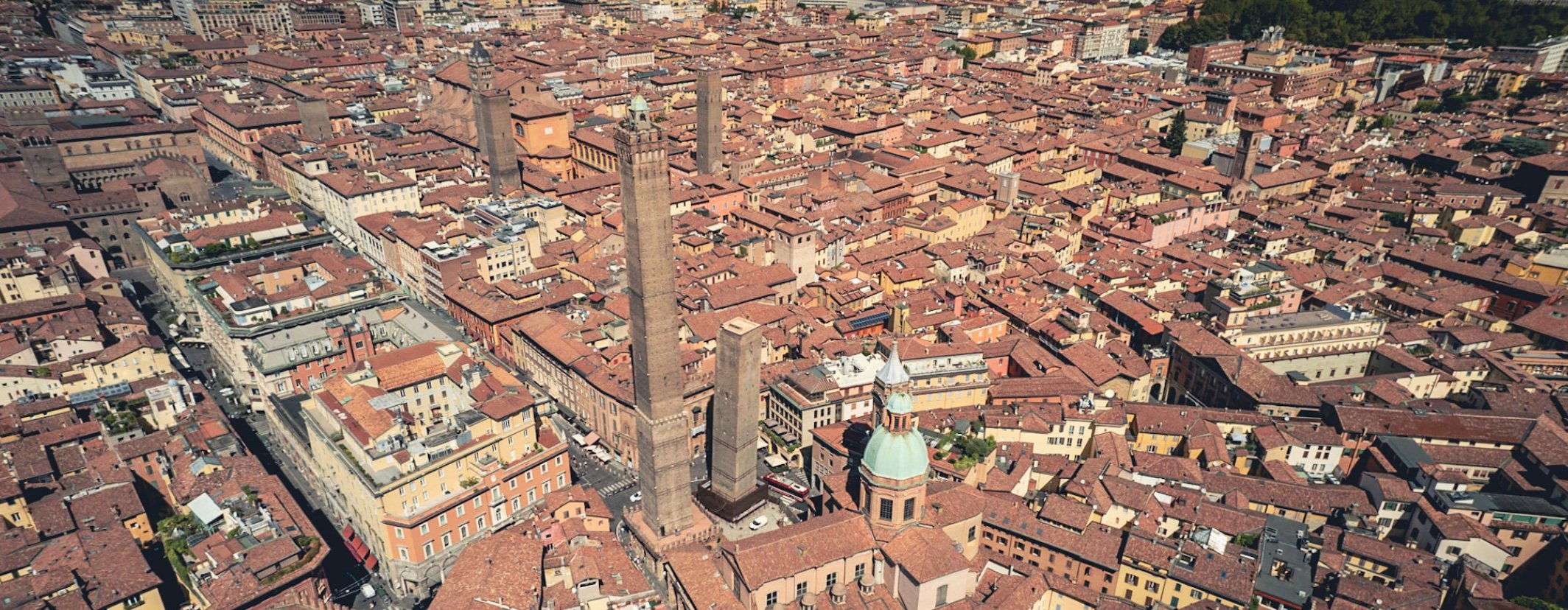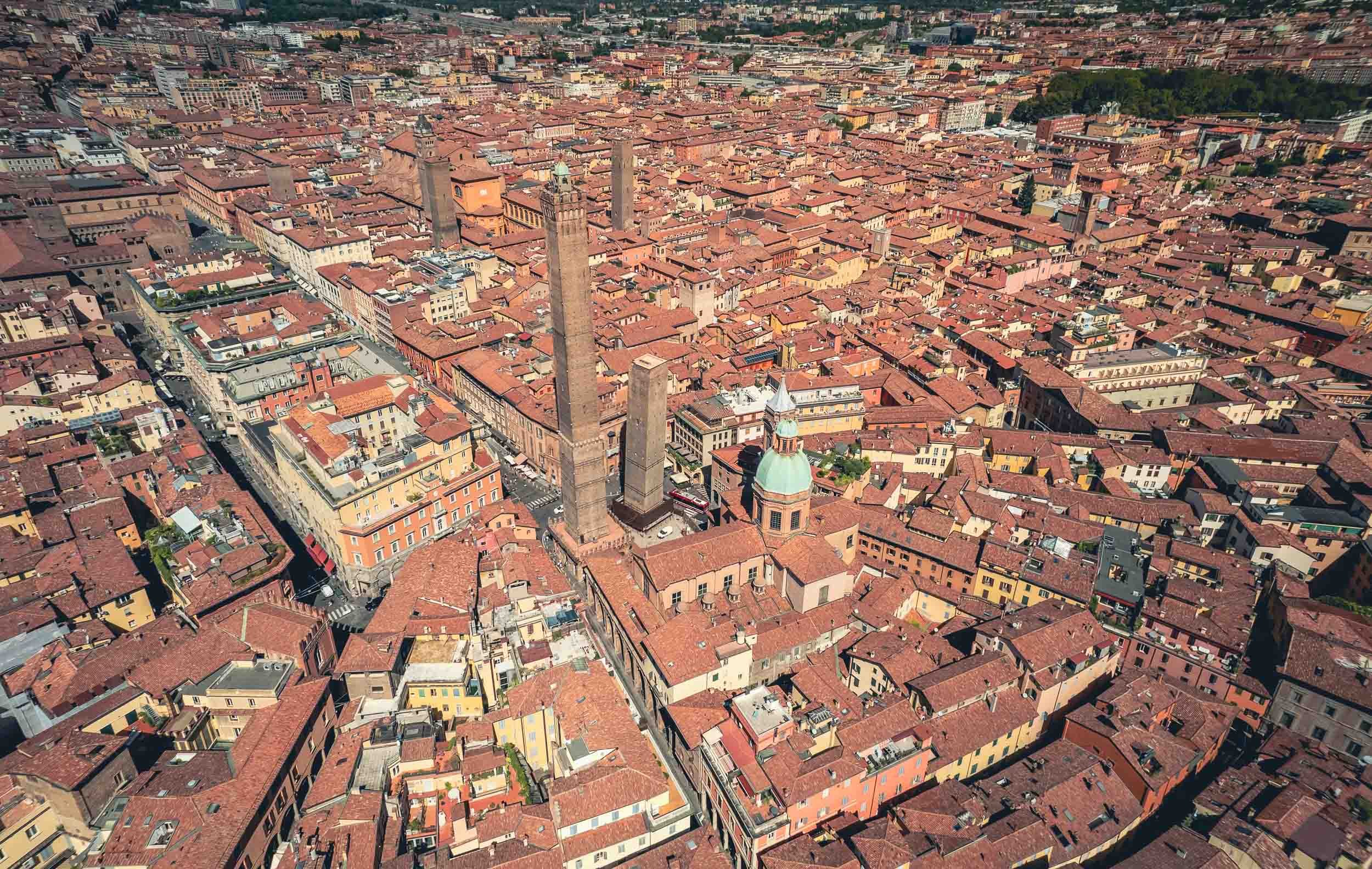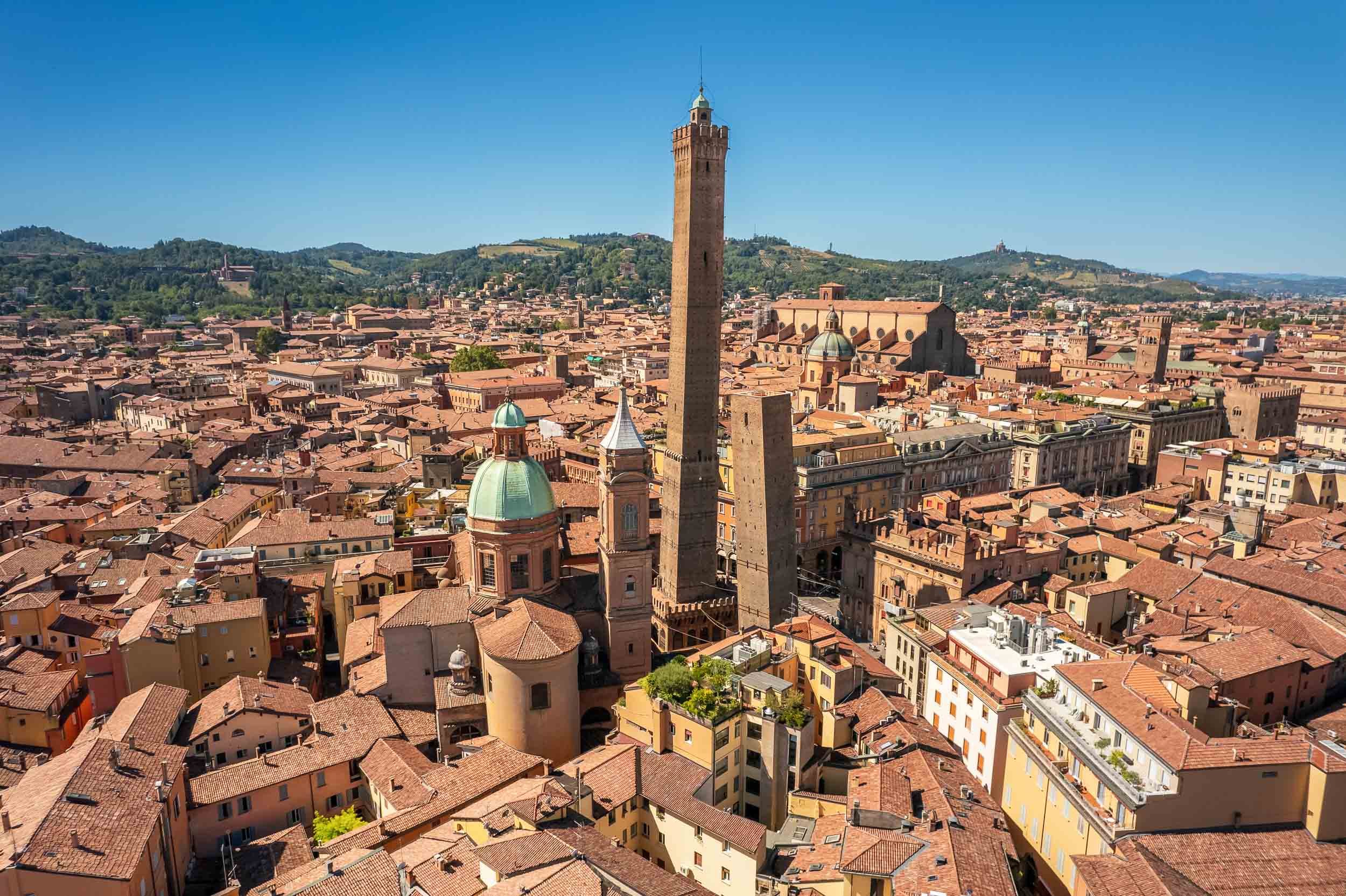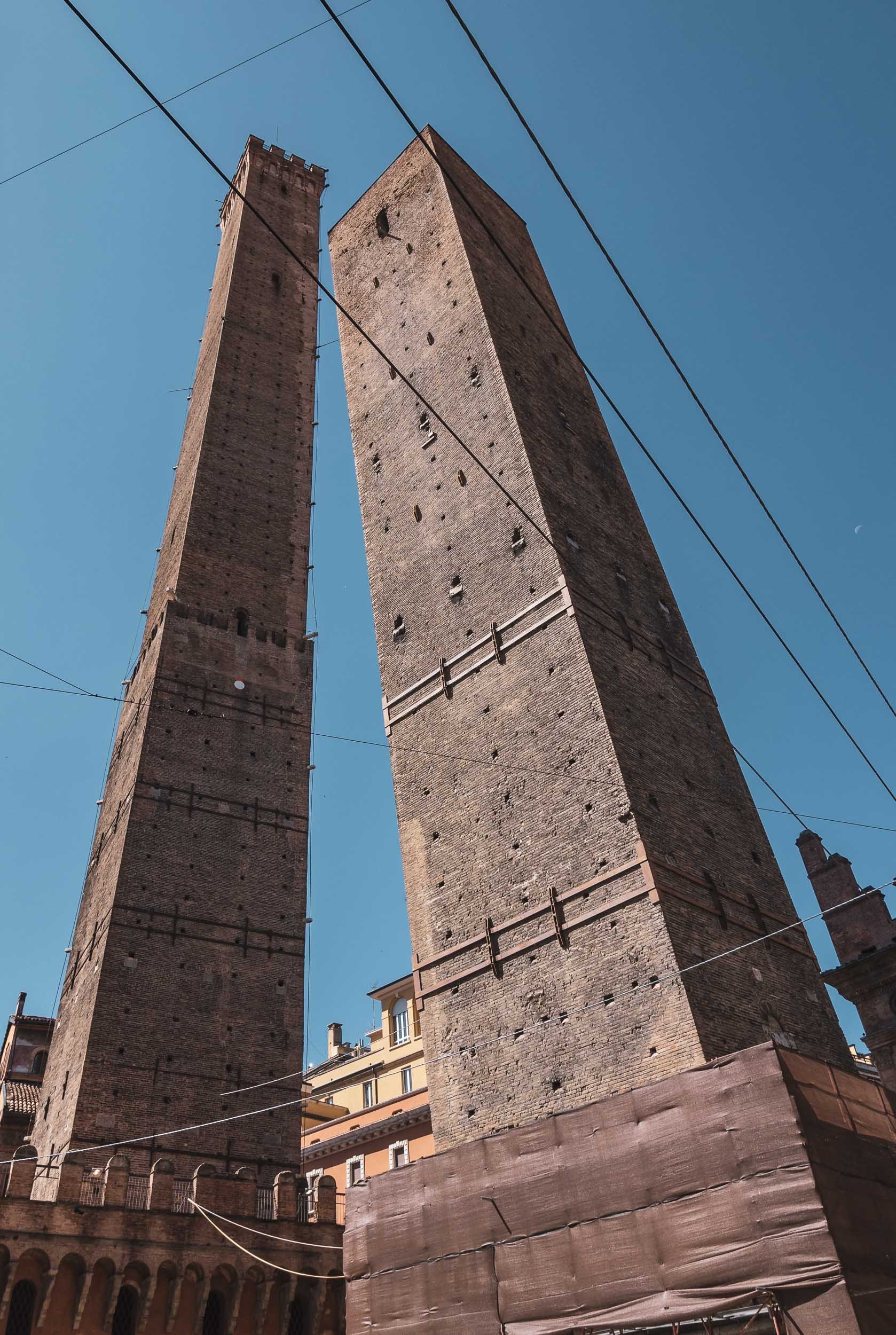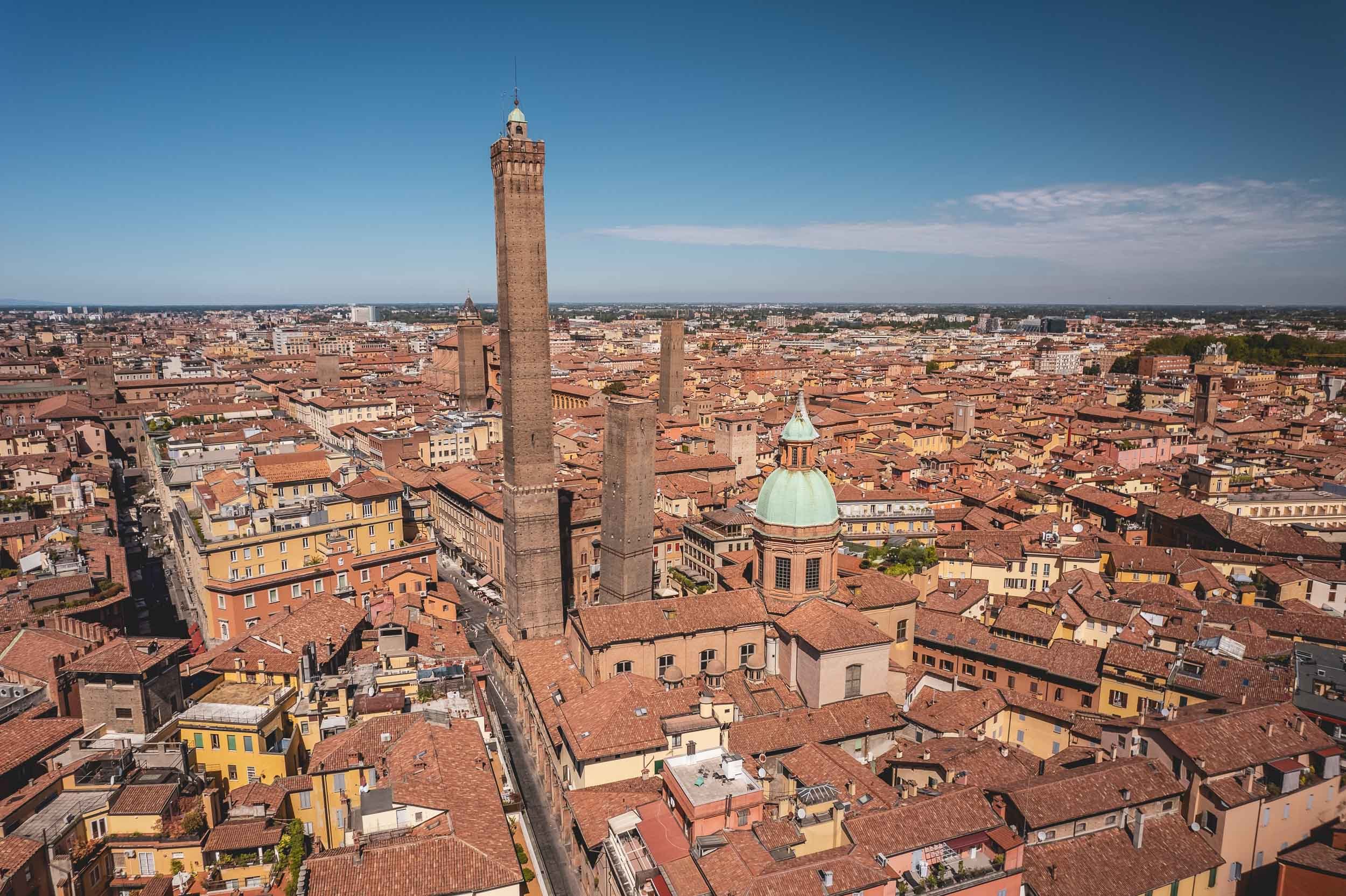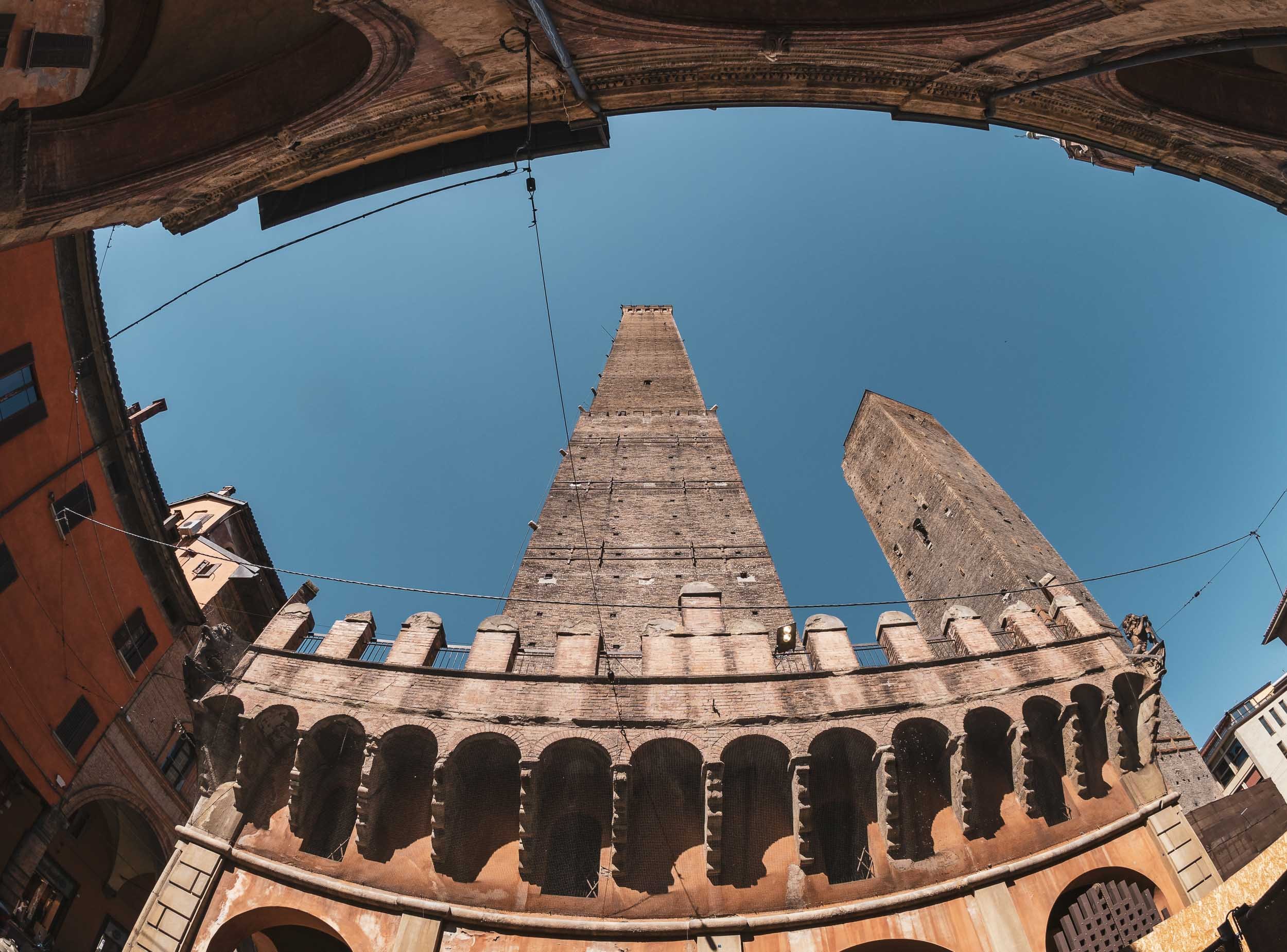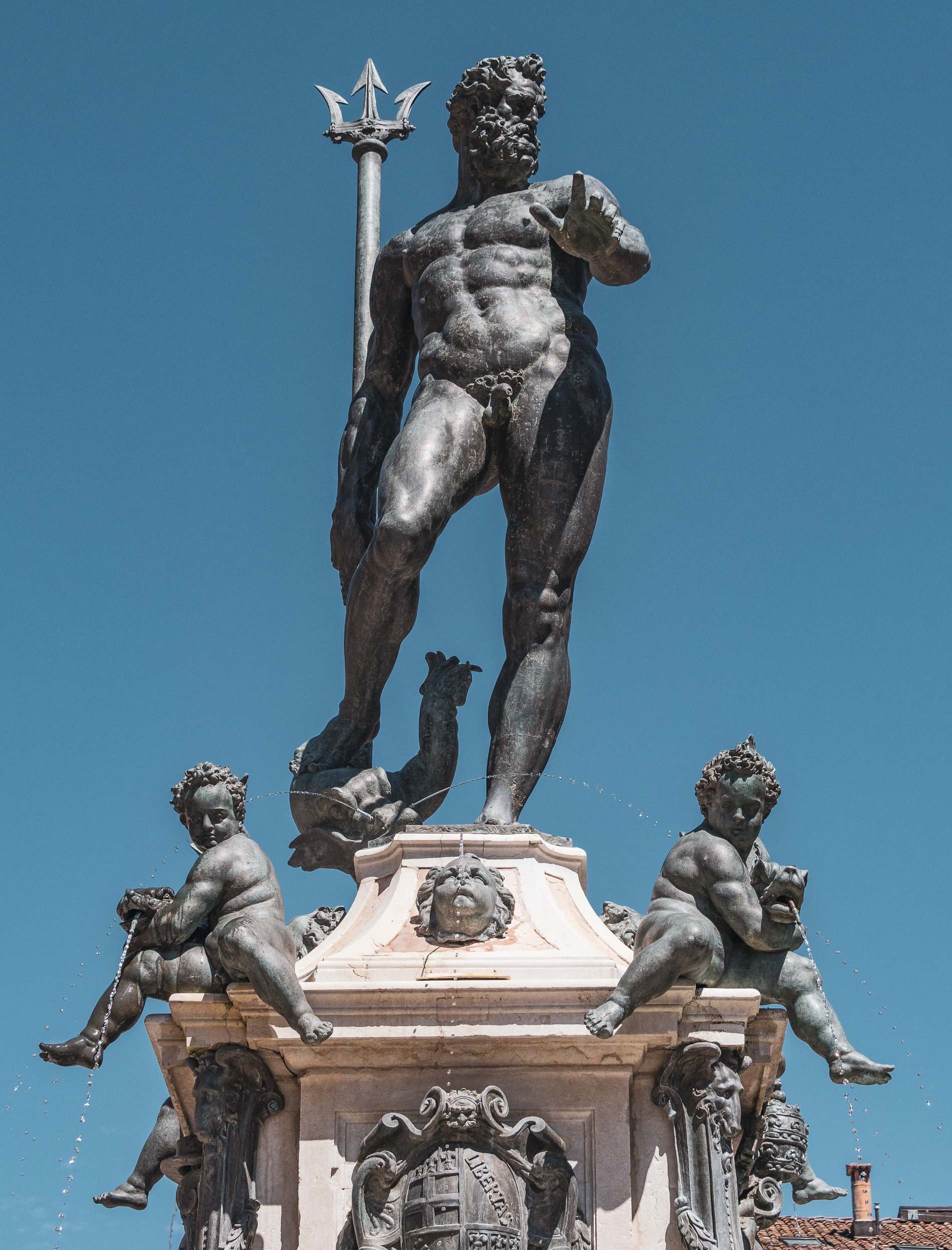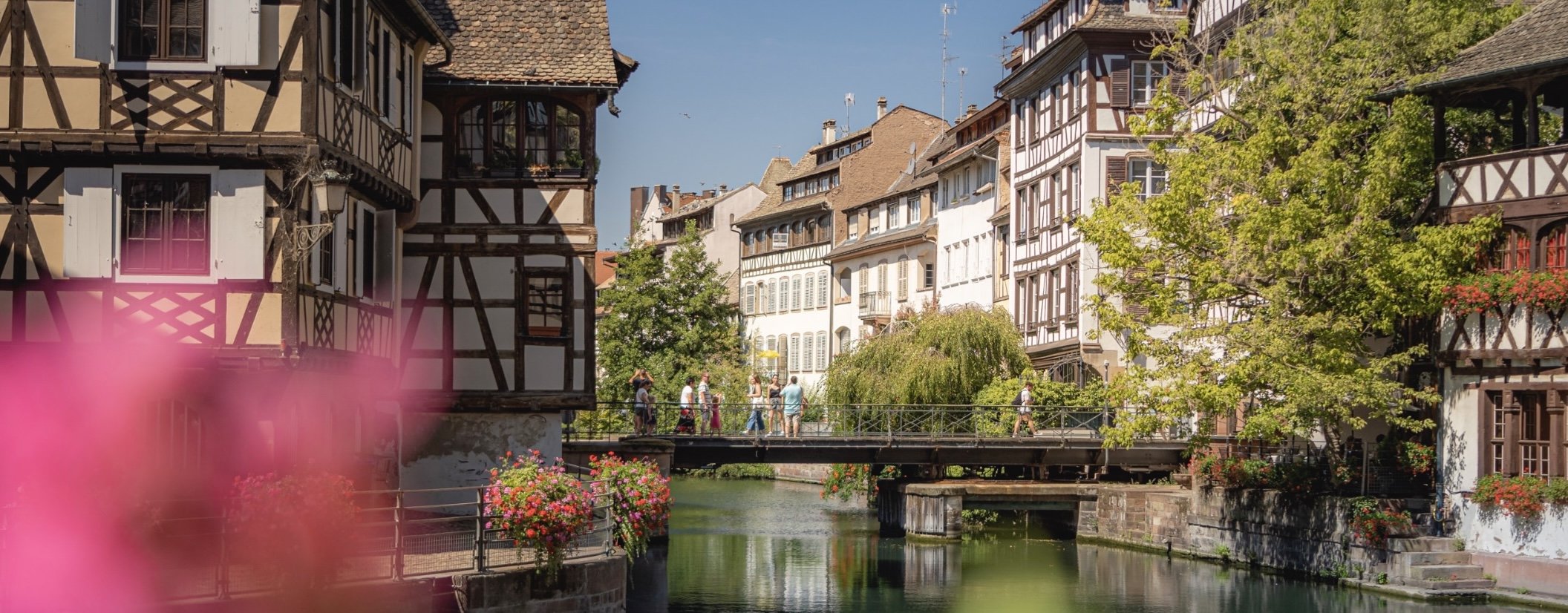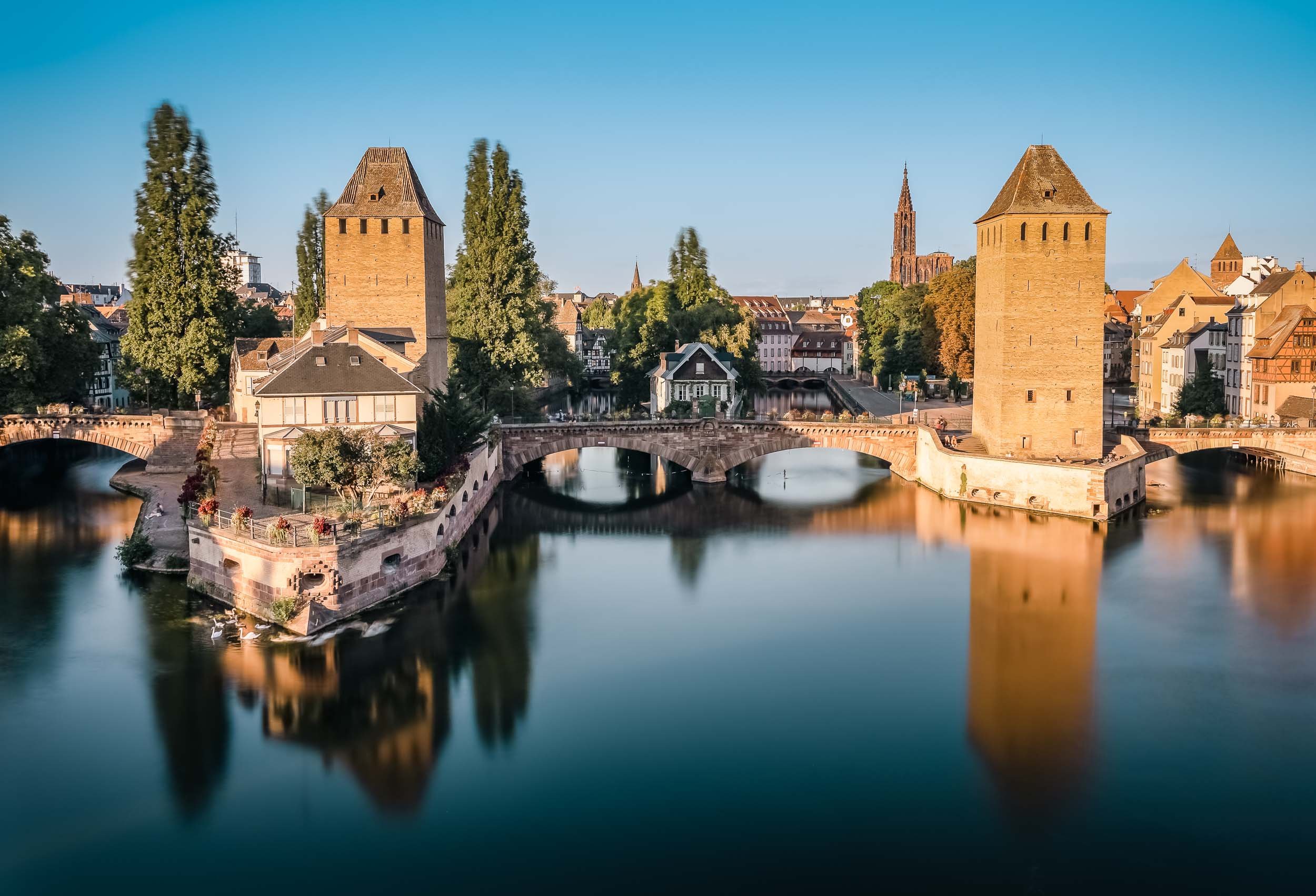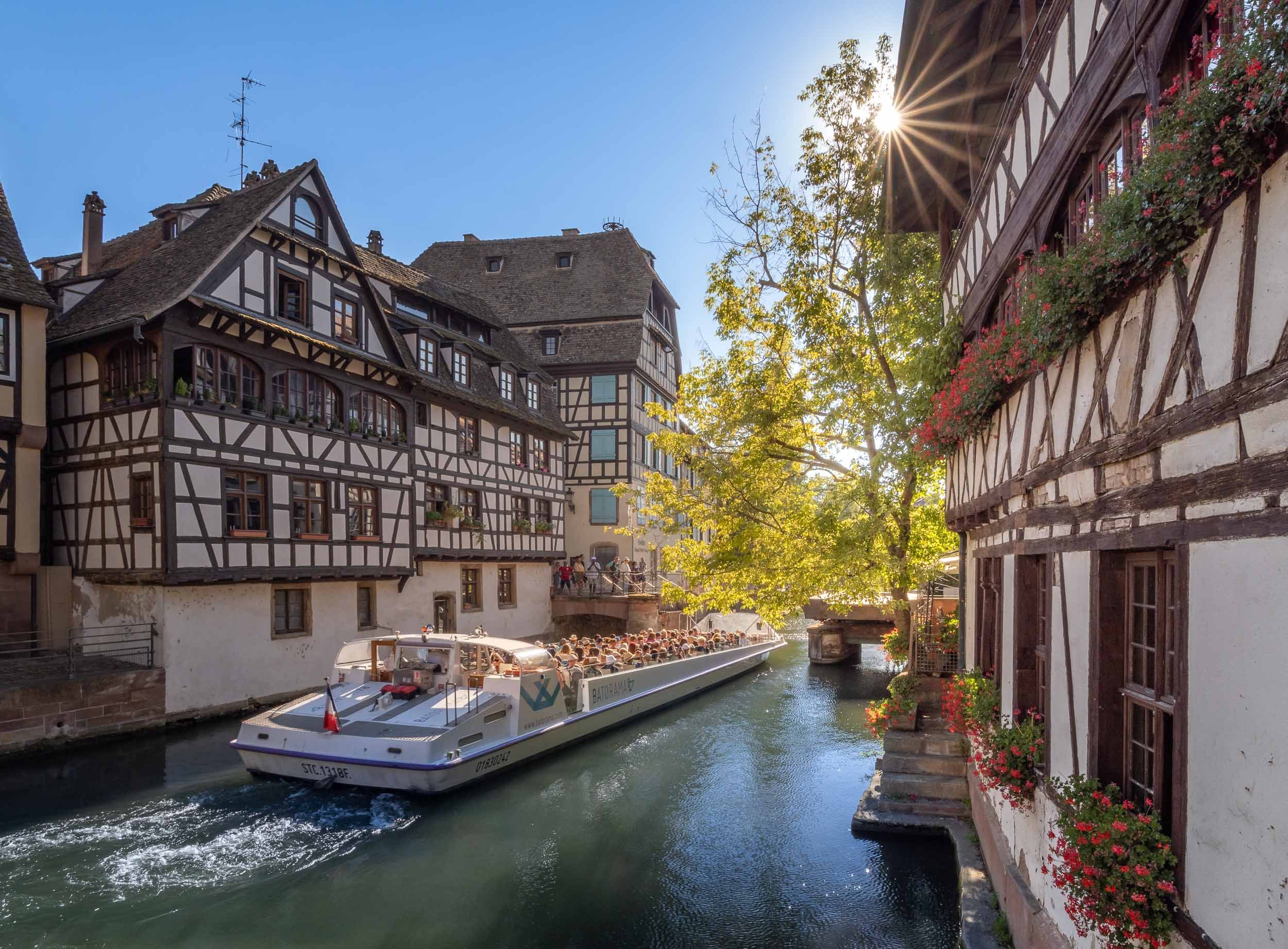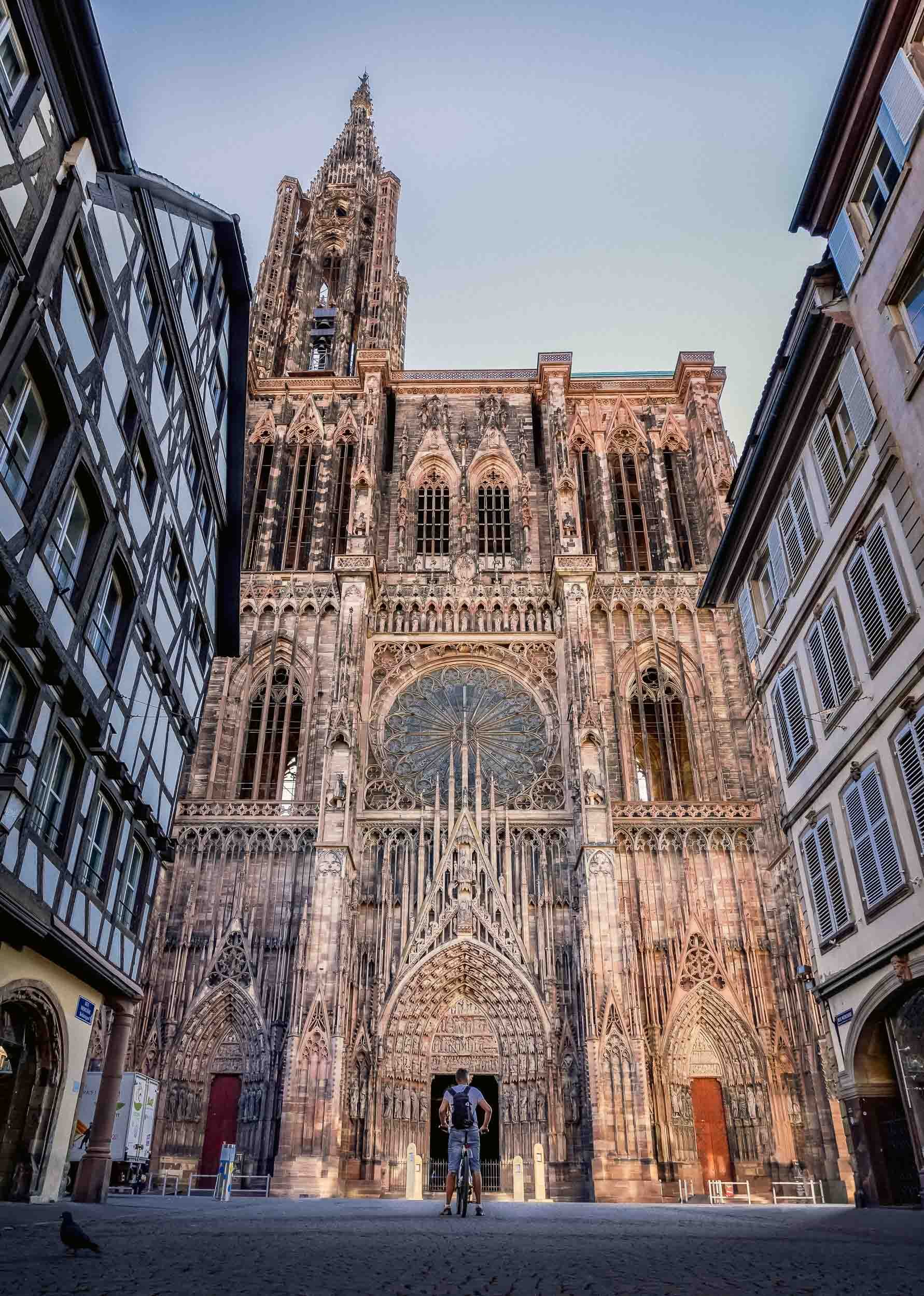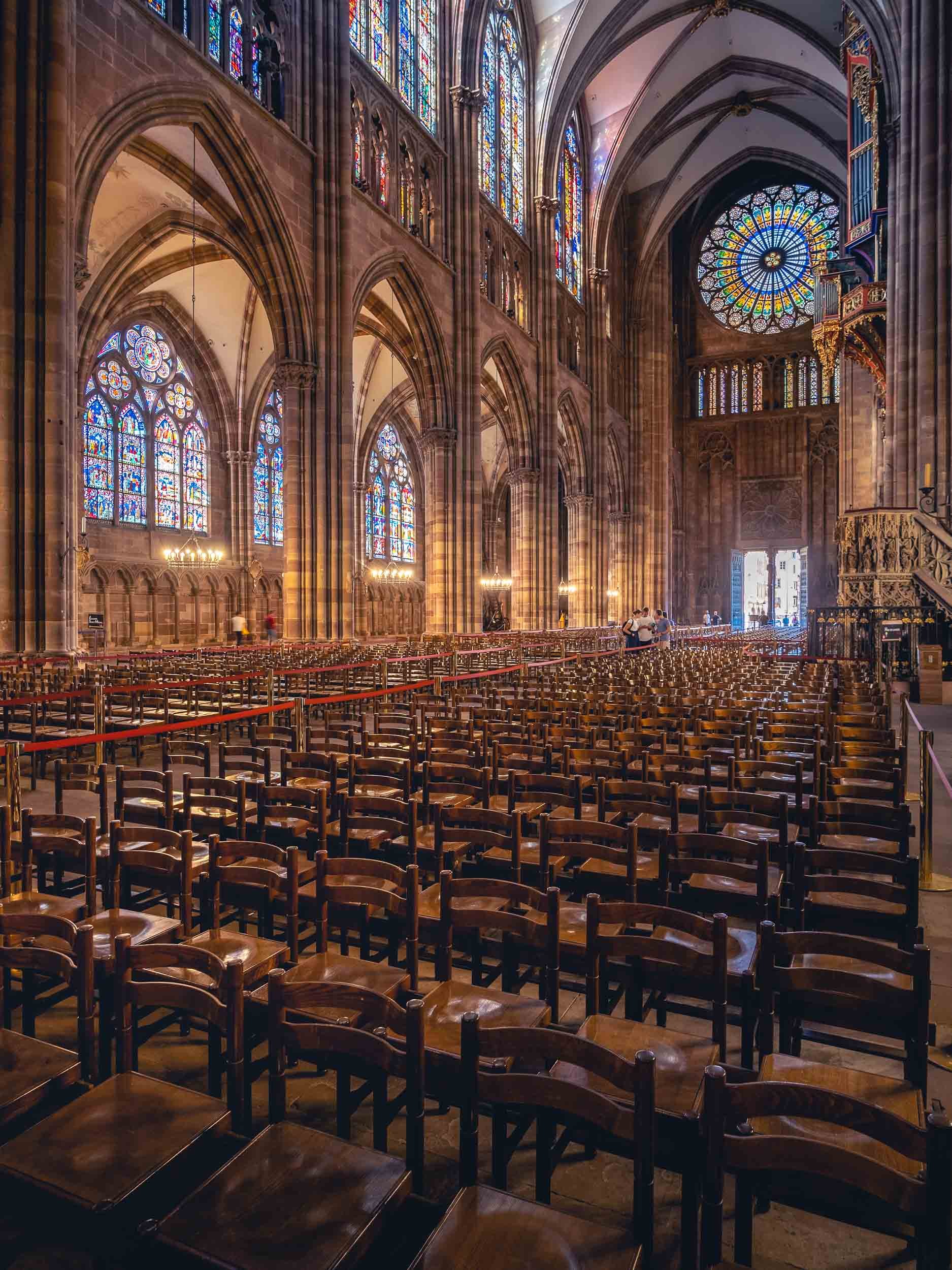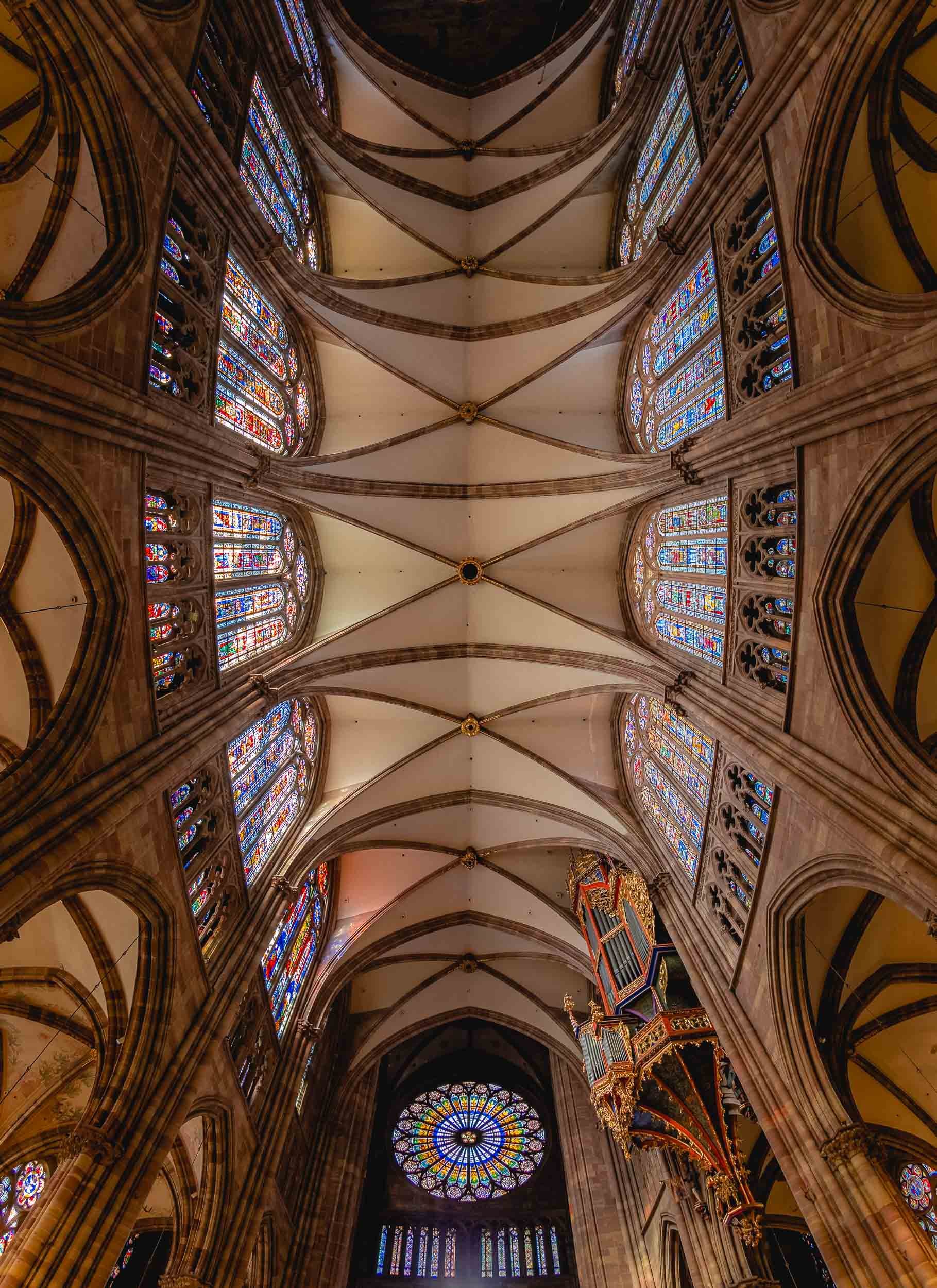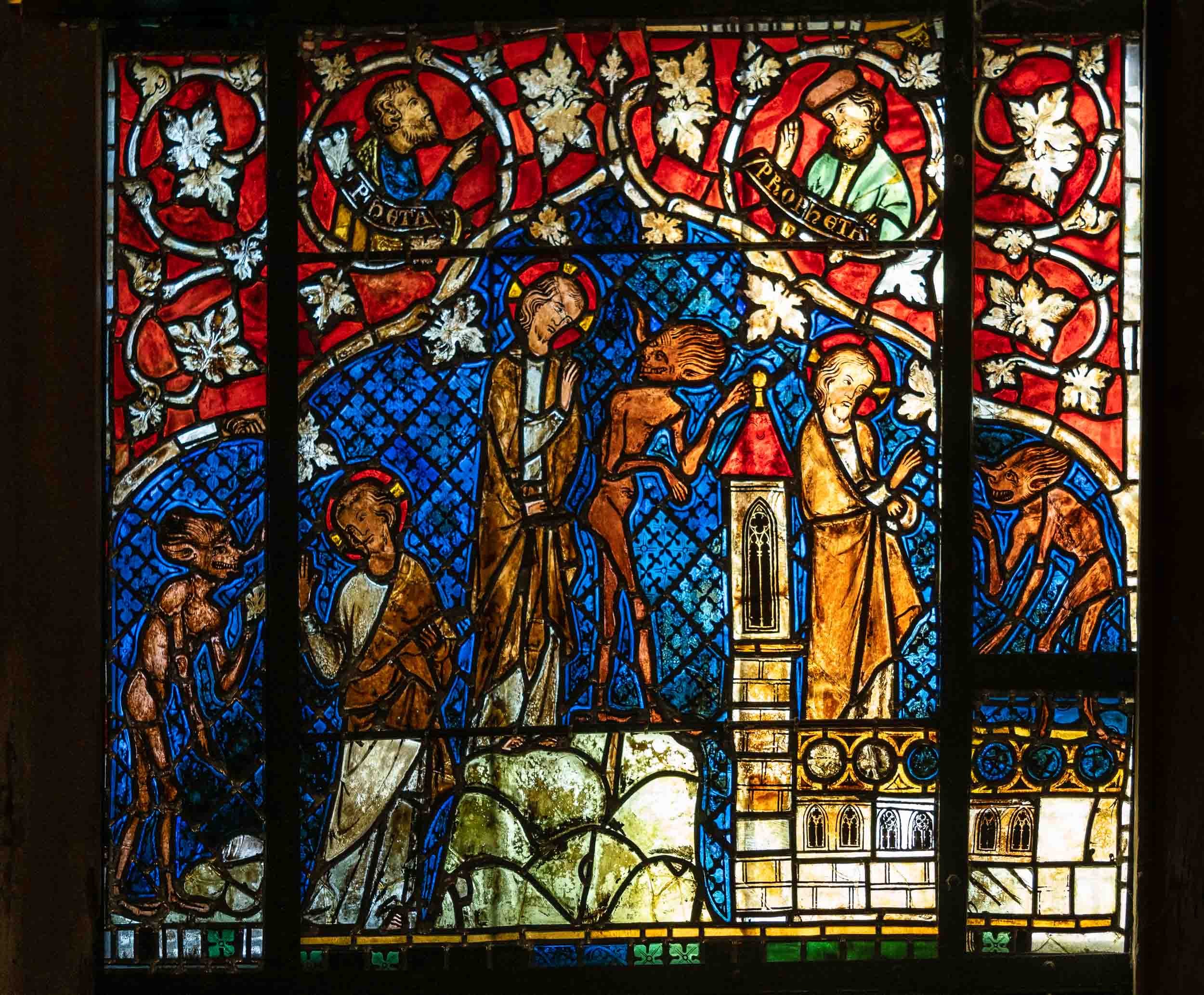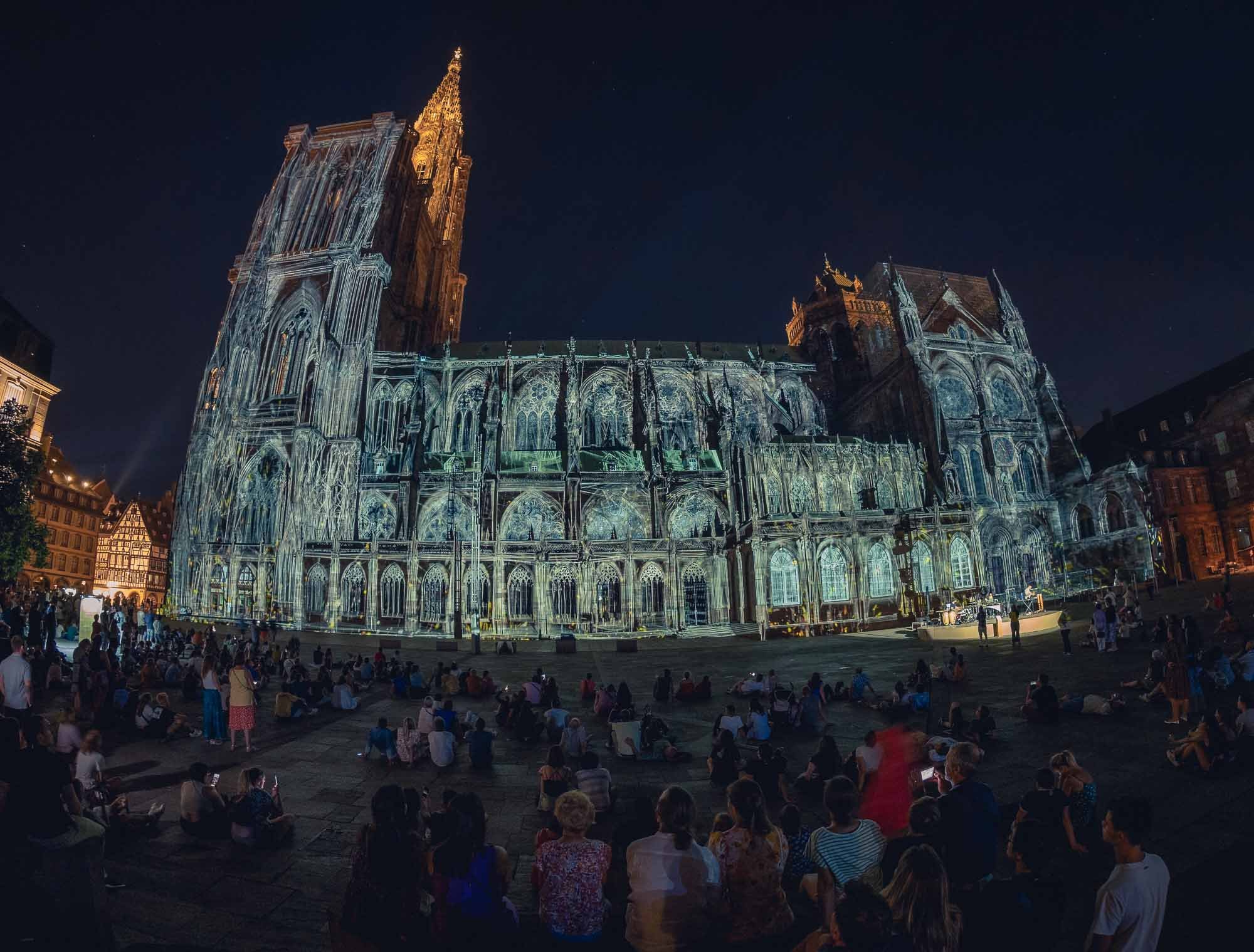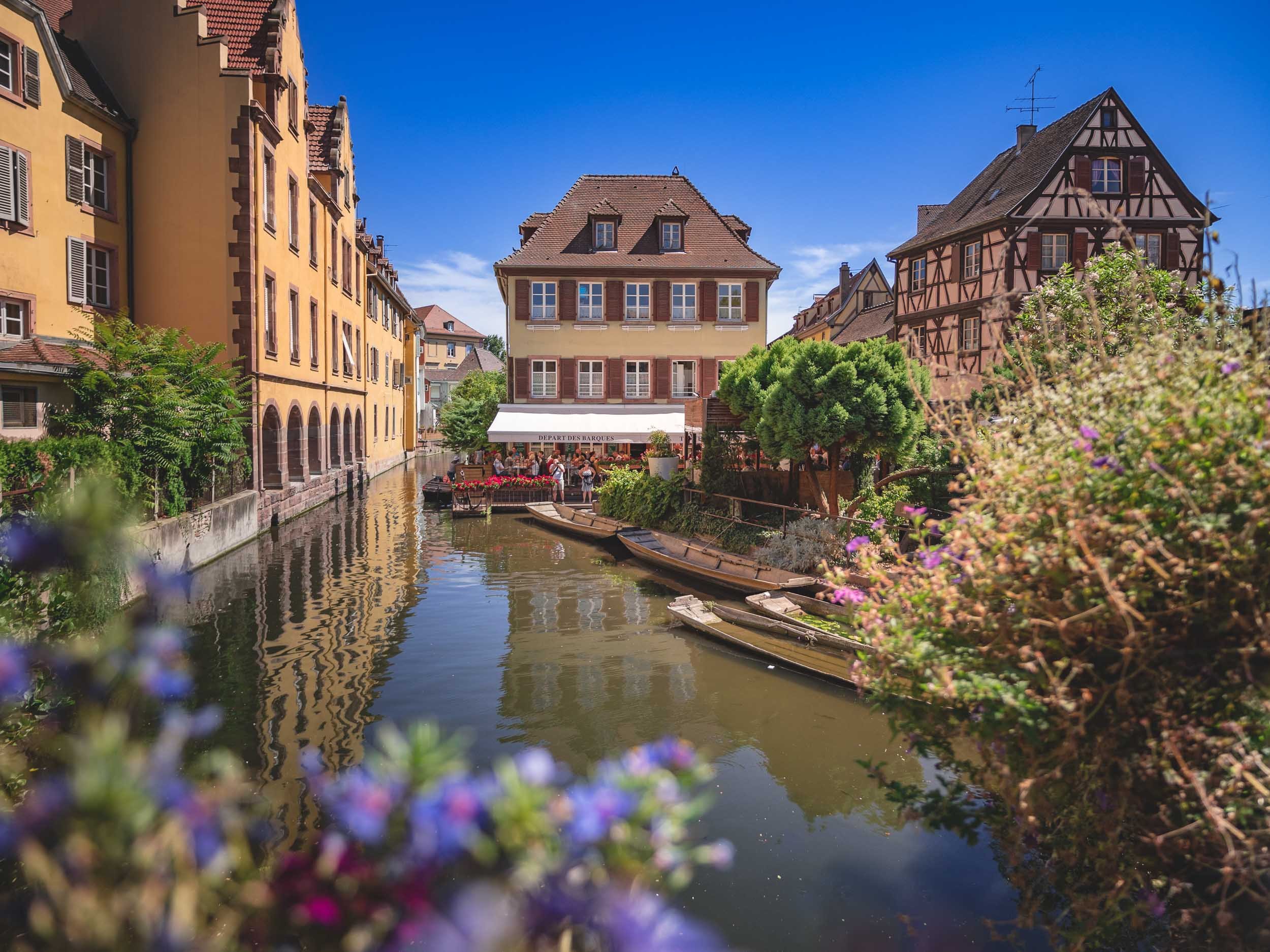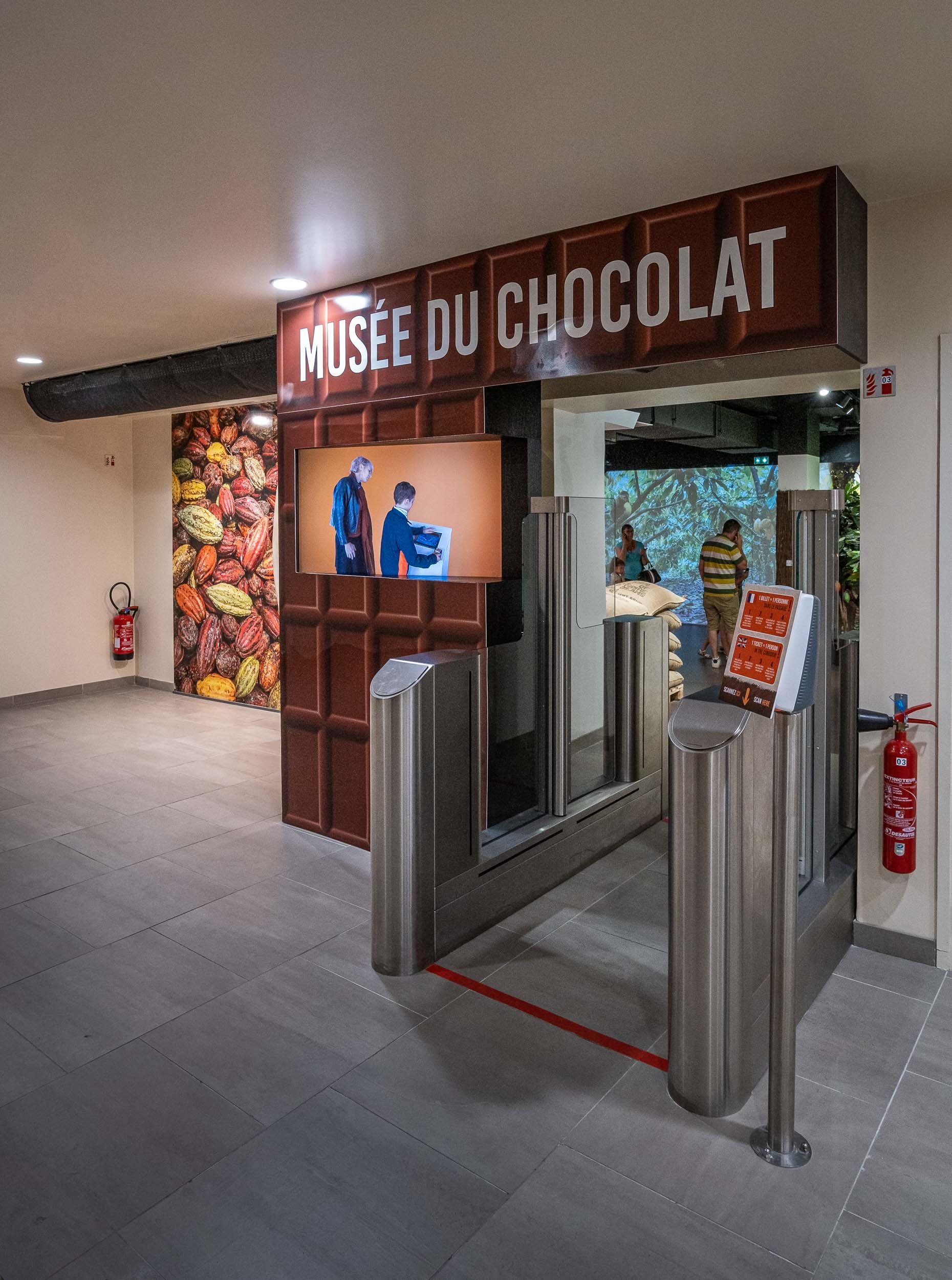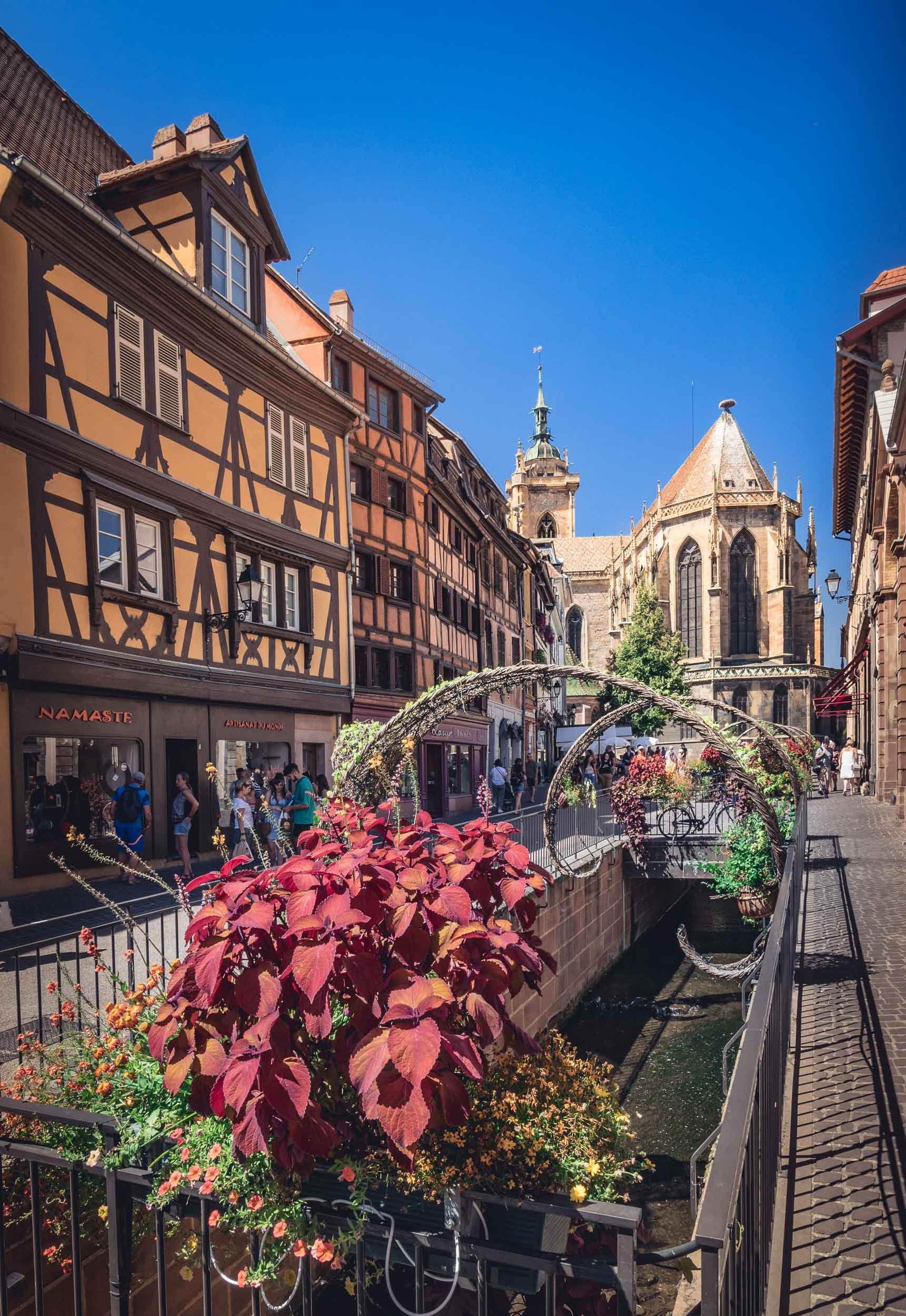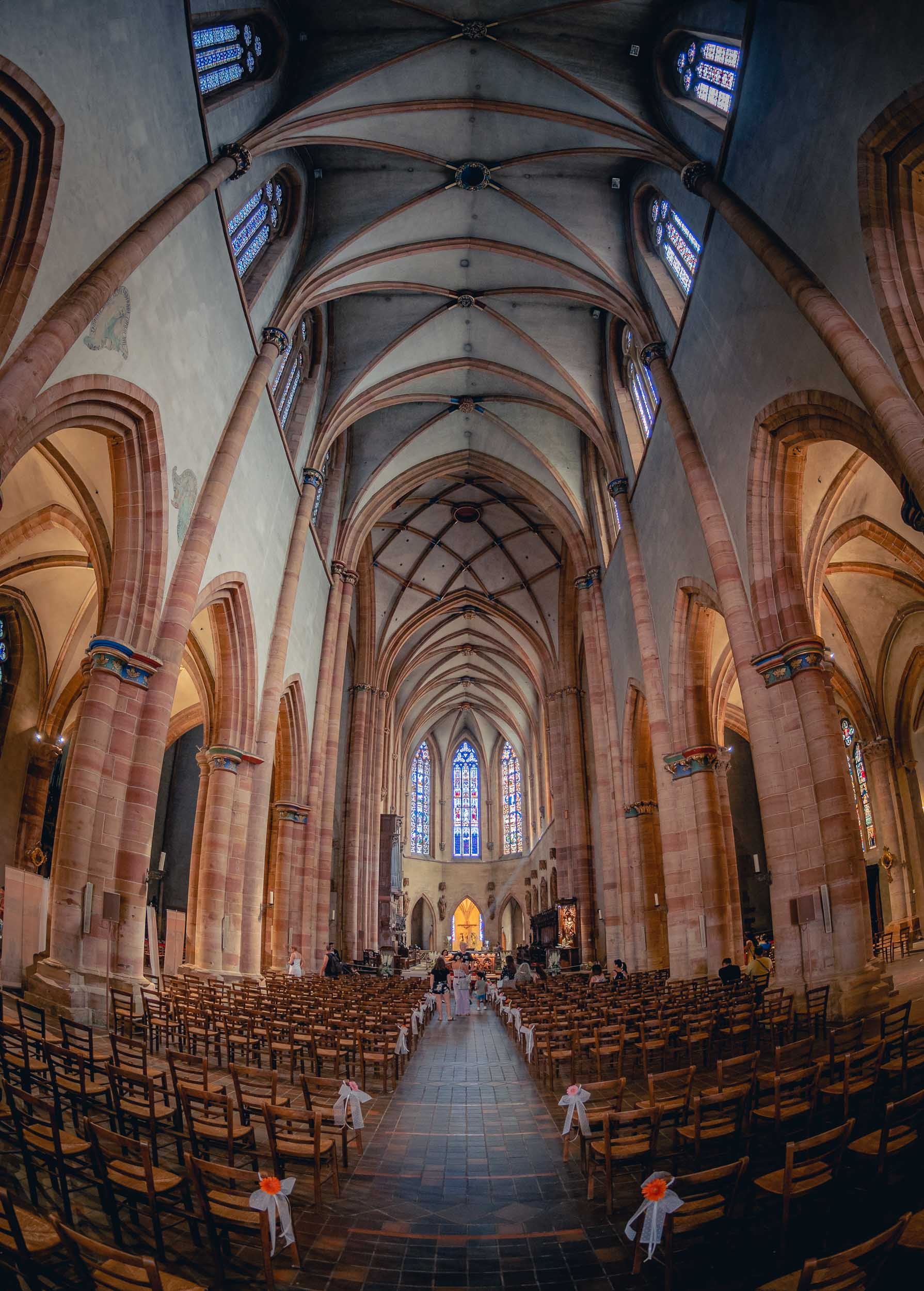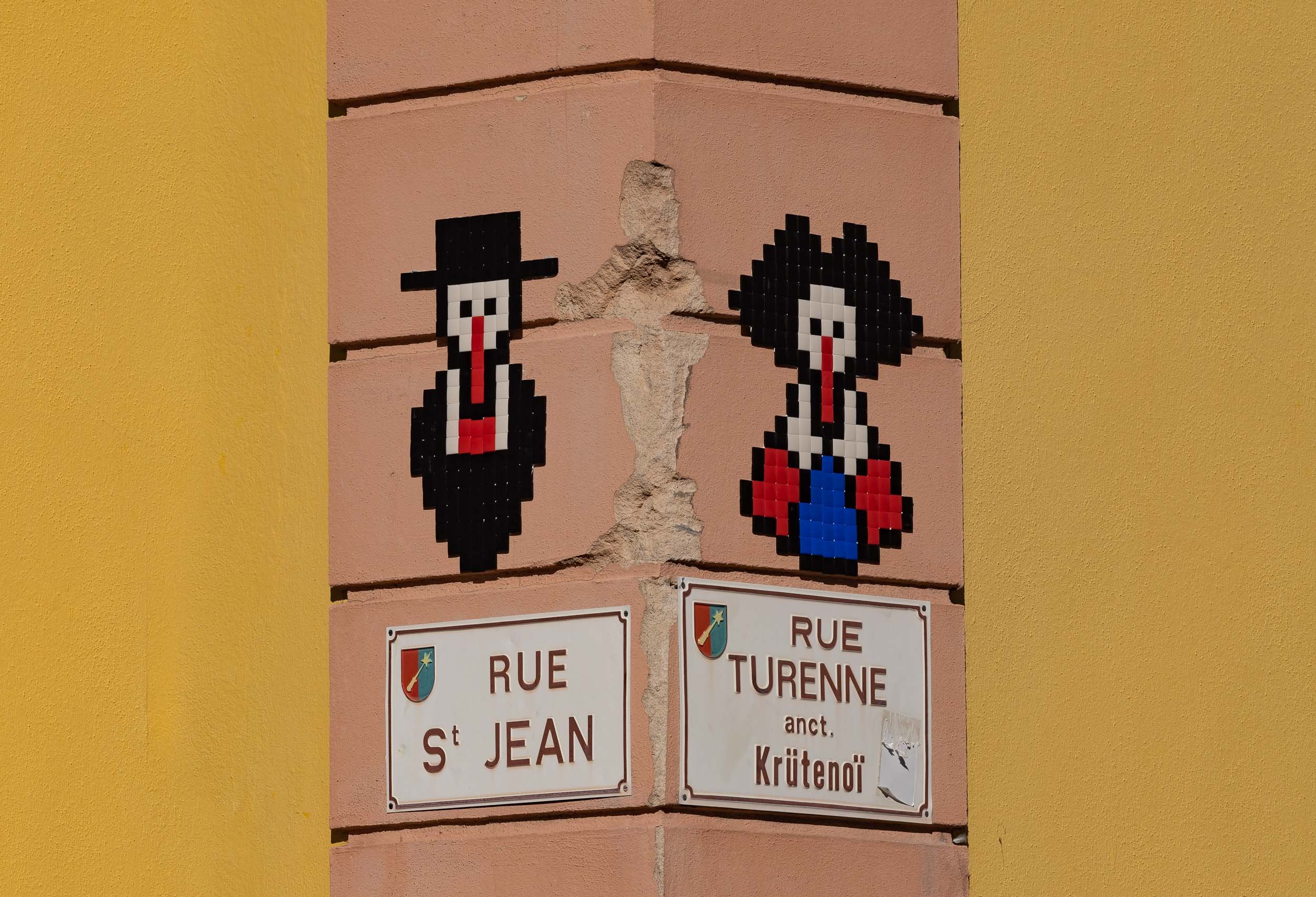Palestine & Israel - Complex History, Present, and Future
Politically tense. Historically significant. Shaped by religion. Naturally beautiful. Developed in contrast.
Politically tense. Historically significant. Shaped by religion. Naturally beautiful. Developed in contrast. The region that is today shared one way or the other - depending on who you ask - between Israel and Palestine is all of those things and many more. Having spent close to a week between Tel Aviv, Jerusalem, and the surrounding areas, I feel like I barely scratched the surface.
Tel Aviv
The economic centre of the region with the largest per capita economy in the Middle East, and also the highest cost of living in the world as of 2021.
The Museum of Modern Art
While the city’s diverse architecture features many interesting corners, this building was definitely among my favorites.
The inside is no less intriguing.
The Museum features works by Klimt, Van Gogh, Monet, and also the intriguing Miniature Rooms by Helena Rubinstein.
Jaffa - The Real Roots
Tel Aviv in its current form is just over 100 years old, but the real roots of the city lie in Jaffa to the south.
Beit Guvrin-Maresha National Park - Jewish, Roman, Byzantin, and in Between.
About an hour south-east of Tel Aviv lies the next stop on our route. This UNESCO World Heritage Site was full of surprising archaeological excavations, starting with a group of huge bell caves, some of them over 18m tall, airy, and used over 1000 years ago to extract chalkstone from the ground for construction.
Additional caves acted as living quarters and baths, many of them interconnected via stairs and tunnels.
The site is also home to a Roman amphitheater built in the second century and uncovered in the 1990s.
The Stalactite Cave
A few kilometres north of the park is the Stalactite Nature Reserved, situated around several quarries which were the reason for the discovery of this cave.
Betlehem - Into the West Bank
Before heading to Jerusalem, the trip took a small detour into the only area we visited that is not controlled by Israel as of today - the city of Betlehem. The experience of crossing the border (with no formal passport control) into a Palestinian territory encompasses a walk through a prison-like corridor and passing several one-way metal barriers, before exiting into a completely different environment, with a huge concrete wall to your left and right.
The Church of the Nativity
Of course, for most people the primary reason to visit Betlehem isn’t the wall or Banky’s art, but the church built at the spot where Jesus is said to have been born, albeit over 300 years earlier than the church’s construction. The nativity cave itself is the oldest site continuously used as a place of worship in Christianity and was declared a UNESCO World Heritage Site in 2012, the first listed under the State of Palestine.
The Old City of Jerusalem - Holy Overload
Jerusalem’s Old City is without a doubt the most interesting part of the region - its historic significance is unparalleled and the number of sites with a complex past (and present) is difficult to grasp. The city is split into Muslim, Jewish, Christian and Armenian quarters (and a Moroccan one in front of the Western Wall, which was destroyed by Israel after the Six Day war in 1967), and each has its own flair, in a complex social, cultural, and political web.
Walking through the allyes makes you feel like you are underground, and there is another layer above you - this is partially true, the roofs of many of the houses are accessible and walkable.
Church of the Holy Sepulchre
The current responsibilities for the religious sights in Jerusalem and Betlehem are managed through the so-called Status Quo from 1878, governing the roles of the various religions in managing the significant historic sites in the area. It’s an incredible read, and the complexity of interactions between the political parties and religions (even within their branches) is difficult to grasp. Find out more here.
Two of the most important pilgrimage sites in the church are the Calvary, said to have been the spot of Jesus’ crucifixion (to the left above), and the Stone of Anointing, where Jesus’ body was prepared for burial (although the current stone was only placed here in 1810).
Dominus Flevit & Its View
This church on the western slopes of Mount of Olives offers a beautiful view of the Old City, and a particularly special one from the interior of the church.
Its unique aspect is the western facing altar, which is unusual for Christian churches. It was built this way to offer the view Jesus was said to have had when he wept while predicting the impending destruction of Jerusalem.
The Western Wall - A Small Piece of the Puzzle
The holiest Jewish site in the Old City is the Western Wall, often known as the Wailing wall. It sits on the west of the Temple Mount compound, and contains the exposed parts of the leftovers of the Second Jewish Temple.
Dome of the Rock - The World's Oldest Surviving Work of Islamic Architecture
In the east of the Old City, on the Temple Mount, lies this another World Heritage Site, built in 688. While primarily an Islamic shrine today, it holds significance for all Abrahamic religions as the location of the Foundation Stone, the place where God created the earth and the first human.
In 1993, the golden dome covering was refurbished with funds provided by the King of Jordan - the country appointed the Waqf (trust) that is in charge of managing the site.
Take a Walk Around
Street Scenes of the Old City
It’s an endless endeavor to cover all the alleys, corners, roofs and small shops in the quarters.
If you’re in need for some souvenirs, there are plenty of questionable options.
The Pool of Arches in Ramla
The last stop on the way back to Tel Aviv was this rather curious place, a 1200 year old underground reservoir.
Once you descend down the stairs, you get to see the 20m x 20m basin, which is said to overflow in winter times, and rent a small boat to row around the stone columns carrying the roof.
This region still has a lot more to offer, and is another part of the world that I want to go back to, but for now those were my first glimpses into one of the most historically significant parts of the world.
San Marino - Small but Surprising
In the eternal quest to explore all corners of earth, you sometimes have to make your way into the smaller corners, or countries in this case.
In the eternal quest to explore all corners of earth, you sometimes have to make your way into the smaller corners, or countries in this case. San Marino is definitely one of the smallest, at just over 60 sqkm and 33,000 people. In fact, this makes it the oldest extant sovereign state, and also one the wealthiest in terms of per capita GDP.
It was a short road-trip and we had just 36h to explore - on the other hand, its size makes that enough time to explore most of the country’s sights, which are located in the namesake city on Monte Titano (there is a larger community at the foot of the mountain where most people live). On arrival we were greeted with a peculiar cloud rolling in, which was my clue to take a look from above.
It wasn’t quite the weather you’d expect during August in Italy, just 10km from the Adriatic coast. A few minutes later, the city was covered in a layer of fog and clouds, and it became dark, turning the atmosphere into a mix of Christmas and Resident Evil.
Exploring the fortress of Guiata and its two neighboring towers at the cliff of Monte Titano.
Nightly street vibes
Day 2
Politics
San Marino’s political system is a peculiar one. It is the world’s oldest constitutional republic with an elected assembly, which in turn elects not one, but two heads of state every six months from opposing parties, called the Captain’s Regents. This tradition is a nod back to the Roman consul times. At the end of their legislature, every Sammarinese (the Demonym for citizens of the country) has 15 days to submit any complaints about their actions - or lack thereof.
As the clouds opened up, I spent the last sunset photographing the country’s most iconic view, but rest assured there’s more to see in San Marino, such as its Museums of Torture, Dracula, and Curiosities (although I can’t say I’d highly recommend either of them). If you’re looking for the Formula 1 track where the race named after the country was held up until recently, you’ll have to go to Italy though. There is however an Ayrton Senna statue as a tribute one of the world’s best drivers, who tragically died at the 1994 Grand Prix.
Thanks for tagging along - continue here with a nearby architectural curiosity, the medieval towers of Bologna (and a questionable statue).
Bologna - From Tall Towers and Statues with Secrets
On a recent roadtrip to San Marino we passed Bologna, one of Italy’s largest cities and home to one of its most peculiar architectural features.
On a recent roadtrip to San Marino we passed Bologna, one of Italy’s largest cities and home to one of its most peculiar architectural features. Of course that was reason enough to take a small detour and spend a few hours in the city to document this special sight - in the process, we found another rather questionable historic remnant, read on to find out…
The larger of the two towers, Asinelli, is visible from many of the city’s streets at a height of almost 100m.
Take a flight around the towers.
A Statue with a Secret
Not far from the towers and near the Basilica di San Petronio on the Piazza Maggiore you’ll find another oddity in the city - this time facing horizontal rather than vertical…
There’s a lot more to see in the city, and a return is definitely on the cards the next time I’m in the Emilia-Romagna region.
A Taste of Alsace - 36h in Strasbourg and Colmar
A brief visit to the two of the region’s most famous towns with their beautiful old woodwork.
In August 2022 I attended a workshop for a startup founded by a couple that have become very good friends of mine (check it out, especially if you have young kids trying to learn reading: https://alphaben.app/de/) in the south western corner of Germany. Of course, I had to take the opportunity to jump over into the nearby Alsace region and visit Strasbourg and Colmar, two of the more famous cities in the area.
The Grande Île of Strasbourg
The most famous district is its Unesco World Heritage site area; in fact Strasbourg was the first city to have its entire city center be listed as a World Heritage Site. The city is over 2000 years old and was first mentioned in Roman times. Its position on the banks of the Rhine and on the borders of what is now France and Germany meant it was heavily disputed during its existence.
Street Scenes
The Strasbourg Cathedral
Unknowingly I happened to stay in one of the city’s most famous buildings - Maison Kammerzell - directly on the main square and one of the best preserved medieval gothic housings in existence. It also had the benefit of being able to visit the cathedral early morning before the crowds rolled in.
Views from Above
The views from the viewing platform of the cathedral provide a special look at the gothic architecture in the city, and its tilted roofs. On completion, the church was the tallest building in the world for a while, at 142m. In fact, it was meant to have a second identical tower, the preparations for which can be spotted on the empty roof foundation and by the fact the church has the same massive pillars inside to support it. Either way, it made the ascent quite a stair climbing marathon at 332 stairs.
Colmar - The Little Venice
There was definitely a lot more to see in Strasbourg, for example the largest mosque in France, and the seat of the European Parliament, but I took a train to Colmar for a few hours instead, before having to leave the Alsace region for my trip to Iceland. It was worth it to catch a glimpse of one of the regions most picturesque villages with its well-preserved old town.
And that was a little excursion to a small corner of south eastern France! As usual, follow along on my Instagram, where I also have a story highlight with some clips from this trip.
🥇 The Epson 2022 Panorama Awards
I woke up to some excellent news a few days ago, telling me that I had won the overall Amateur Award at the 2022 Epson Panorama Awards.
I woke up to some excellent news a few days ago, telling me that I had won the overall Amateur Award at the 2022 Epson Panorama Awards, among 1876 entries, with three images scoring Gold medals, including 1st and 2nd place.
The Winning Image - In Formation 🐘
The dried-up lake bed of Lake Amboseli in Kenya is home to a regular ritual for large elephant families: In the mornings, they cross from the forest areas on one side towards the swamp lands on the other, in search for water. With a bit of patience you can photograph their amazing formations as they walk in line, and if you’re brave enough you might be able to do so from the ground for that extra special perspective. The experience of observing the behavior of these magnificent creatures and how it reflects their social ties and emotions has been very impactful for me, and their plight for survival in a world that continues to hunt them for ivory is a topic that deserves more attention - hopefully this image will help.
The quality of the submissions has been extremely high, as was the case in the previous years. Last year I was able to win the Built Up Environment Amateur category with my “City in the Clouds” panorama (more Dubai fog images here - available as prints!) and in the previous years two of my Timeblend Dubai series collected Silver and Bronze awards, so it’s amazing to see an overall win this year.
Runner Up - The Confrontation
This image is available as a limited edition print of 100 signed editions - contact me for details!
A journey of patience led me to this image, as it took many scouting trips to identify this spot, and even more visits to the location to finally find clear skies adorned by clouds, while a pair of oryx was engaging in their territorial rivalry. The resulting photograph is meant to represent both the confrontation of the animals, but also the contrast of harsh urban shapes of Dubai, with the natural soft outlines of the dunes of the UAE desert.
Sunrise in the Clouds
A panoramic view of Downtown Dubai, Business Bay, and the Sheikh Zayed Road skyline, as the beautiful blue hues of the morning light slowly turn orange and yellow from the rising sun in the east, illuminating the world's tallest building while thick fog rolling in from the desert covers the ground, creating the illusion of a city in the clouds. While many images of this rare phenomenon exist by now, I’ve always been looking for a new angle and composition during my time in Dubai - through persistence and patience I’ve been able to achieve this goal through a panoramic photo from the roof of a skyscraper that’s a little bit set back from the rest of the skyline.
Congratulations to all other winners and listed entries, make sure you check out the full gallery of the Awards here - incredible photography!


